Govt should make available more spectrum: Mittal
Our Correspondent : 8 Nov 2014, Bhopal
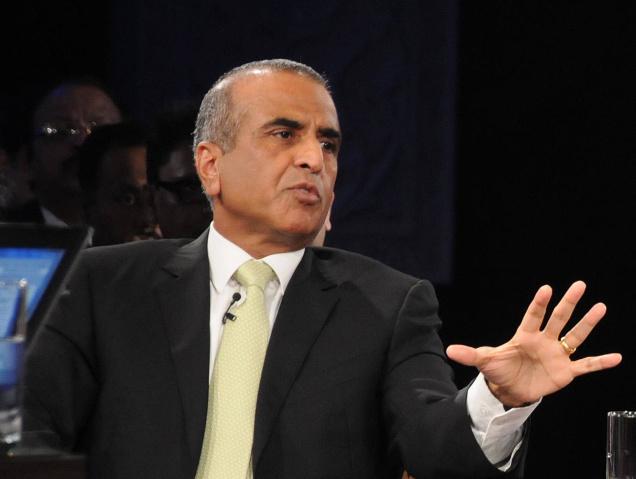
Bharti group Chairman Sunil Mittal on Thursday said the telecom industry wants more spectrum and the government should make it available.
“We want from the government more spectrum. Every country has the same amount of spectrum and it is not that India has less... It needs to be vacated from other places, that is what other countries have also done,” Mr. Mittal said on the sidelines of the India Economic Summit in New Delhi.
Telecom Regulatory Authority of India, on October 15, gave its recommendation on spectrum auction for premium 900 Mhz band and 1800 Mhz band that are presently being used for 2G GSM mobile services by Airtel, Vodafone, Idea Cellular and Reliance Communications.
Government has proposed to put for auction about 184 Mhz of spectrum in 900 Mhz band which is held by these companies through their various licences expiring in 2015-16. The four telecom operators will have to buy spectrum afresh to continue their services.
“I would say government should make available enough spectrum so that there is a balance between spectrum pricing” he added.
On being asked if the spectrum auction — scheduled for February 3 — should be deferred, Mr. Mittal said: “Why should this be deferred. Industry wants more spectrum and the government should make it available to them.”
On Bharti Airtel calling off the Rs 700-crore deal to acquire business and assets of Mumbai-based Loop Mobile, he said much is being read into this.
“Loop mobile is a small issue and I don’t know why this is being made into such a big issue. Most of the Loop subscribers have ported to us. It was a small deal, which was basically an experiment for the first time to acquire customers. Its not about the merger but about the renewal of the agreement,” Mr. Mittal said.
Airtel, in a filing to BSE, had said its proposed transaction related to Loop was conditional upon DoT approvals which had not been received till date.
DoT is yet to give clearance to the proposed deal as it estimates that Loop Mobile and its sister concern Loop Telecom owe about Rs 808 crore in spectrum and other charges to the government.
Private sector lender Axis Bank has also told the DoT that Rs 215-crore loan to Loop Mobile will be at risk if the deal of the Mumbai-based operator to sell its assets to Bharti Airtel is not approved.
Airtel had signed the deal with Loop in February this year to buy business and assets of Loop Mobile in Mumbai under a strategic agreement for about Rs 700 crore.
Under the agreement, Loop Mobile’s 3 million subscribers (at that time) in Mumbai were supposed to join Airtel’s over 4 million subscribers, which would have made it the largest network in the metropolitan city.
Monetary Policy Has Limitations in Addressing Issues and Unconventional Methods Need To Be Thought Of” – RBI Dy Governor
Our Correspondent : 08 Nov 2014, Bhopal
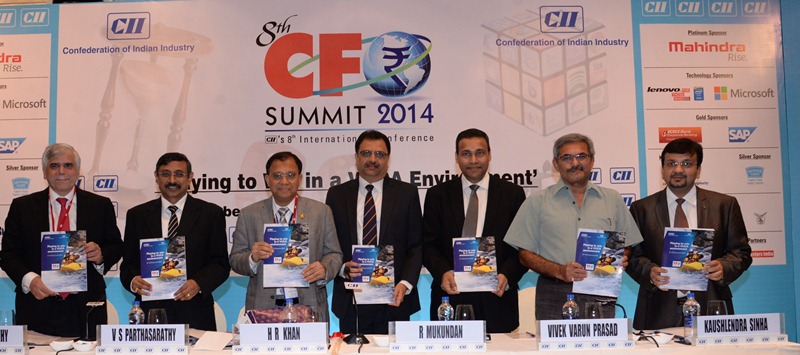
“Monetary Policy Has Limitations in Addressing Issues and Unconventional Methods Need To Be Thought Of” – RBI Dy Governor
“In Terms Of Corporate Leverage, India Ranks High With 83%” – RBI Dy Governor
“VUCA Has Become A New Normal” – RBI Dy Governor
“DNA of CFO’s Role Undergoing Mutation in the VUCA Environment” – V S Parthasarthy
CII-KPMG “Playing to Win in a VUCA Environment” Report Released
H R Khan, Deputy Governor, Reserve Bank of India (RBI), Chief Guest at the CII CFO Summit while delivering his address reiterated the outcome of the Global financial stability report of IMF which talked about risk with low volatility and risk arising out of quantitative easing. He mentioned that the measures like quantitative easing were meant to take the economic risk but have taken up financial risk.
Further he mentioned that with the global economic situation and the geopolitical uncertainty with outbreak of ebola, crisis in the Middle East & Ukraine and ending of US fed easing programme with uncertainty on the interest rate cycle; we can look at VUCA as Seriously Hyper and Accessible VUCA. He mentioned he would rather call it surviving and succeeding in the VUCA world, as it is a challenge for us all. VUCA demands stake holders to adapt to changes arising from growth opportunities, technology transformation and disruptive business models. He also quoted Friedman’s 3 eras of globalization and said how VUCA has become a new normal.
Speaking about monetary policy he mentioned that, today many countries don’t have fiscal space and are overburdened with deficits and the burden has come on to monetary authority and the authorities across countries followed accommodation policies. Today US is stopping the easing, whereas Europe and Japan have allowed further expansion. With tepid demand and structural impediments also arise other down side risk besides the fed rate hike, the speed and pace of the same needs to be looked at concern of possible hard landing by China, geopolitical tension and massive out breaks like ebola and large scale cyber-attacks are some of the risk. Monetary policy has limitations in addressing such issues and unconventional methods need to be thought of.
On the domestic front, the growth recovery is tepid but the growth sentiments are good. Capital and investment cycle are yet to pick up. Since we are coupled with global economy we can’t be insulated by global uncertainty. Going forward inflation still has a long way to go with rural inflation still being high.
On the corporate side increase of leverage is an issue, the June 2014 report of RBI has shown that the leverage by corporates has gone up; India ranks high with 83% of corporate leverage and sound hedging policies are advisable to corporates going forward, he added.
He concluded by saying, while looking at economy we need to look at the 7 C’s which are commerce, commodity prices, capital flows, confidence index, credit rating agencies & currencies, central bank actions & communications and consumer threats.
V S Parthasarathy, Chairman – CII CFO Summit 2014 and Chief Financial Officer & Group CIO
Mahindra & Mahindra Ltd, speaking about the summit objective said that the CFOs are in a make or break situation, with the DNA of CFO’s role undergoing mutation in the VUCA environment. A CFO can win in this VUCA world if they adapt to EEE i.e., Enable, Enhance and Engender as preparedness is the key. CFO who acts as the change happens will be a winner. He asserted that CFO version 1.0 was a simple bean counter. In version 3.0 he evolved into business partner and version 5.0, the CFO is a value creator.
Vivek Varun Prasad, IRS, Chief Commissioner of Income Tax – III, Mumbai mentioned that over last 2 decades the Tax department has always strived to make process simpler, responsive, transparent, efficient and effective for tax payers. Adding that the department witnessed 2.96 crores of returns filed online in 2013-14 over the 3.62 lakh returns filed online during 2006-07. Speaking about the new regulations he added that it is a continuous learning for providing better facilities to taxpayers.
He further shared that globally governments suffered drop in taxes due to slowing domestic economy, resultant to cuts in providing opportunity to pay less taxes which harmed everybody. He also highlighted that the OECD released a 15 step action plan to avoid tax avoidance and double norm taxation in 2013. Under which it recognized 3 popular mechanisms like hybrid mismatches, special purpose entities and transfer pricing.
Speaking about GAAR, he said that the new government has expressed to provide stable tax regime for economic development. GAAR was introduced by the finance act. The present GAAR puts burden of proof on tax authorities to prove arrangements that has been undertaken for both for purpose of tax avoidance. He added that fine tuning is underway to address the ambiguities arising under which the process of renegotiation of certain tax treaties to specifically include anti-tax abuse provision like limitation of benefit rules and beneficial ownership clauses are included.
R Mukundan, Immediate Past Chairman, CII Western Region and Managing Director, Tata Chemicals Ltd, in his opening remarks mentioned that economic sustainability alone is not a sufficient condition for the overall sustainability of an organization. Recent public statements of organizational strategies routinely contain commitments to social and environmental objectives in addition to the traditional financial ones. This evolution of corporate consciousness can be attributed to increased societal awareness and consequent public policy initiatives. Welcoming the audience he mentioned that the CII CFO Summit is an attempt to bring together a diverse cross section of opinions, views and ideas, inherent to the CFOs of the industry, as it prepares an action plan to address the challenges finance function faces, in a collaborative manner.
Richard Rekhy, Chief Executive Officer, KPMG in India speaking about the CII-KPMG report released at the summit said that for a CFO to understand all the risk he needs to have a robust risk management system. He added that the report highlights CFO as a catalyst of growth, a goal keeper who balances growth & risk and as transformation agent. The report also dwells on new regulations and analyzes if the CFO’s are ready to take on the new regulations and keeping their CEO’s on top of these regulations.
Punit Shah, Head - West, KPMG in India: “With the ongoing processes and ever changing policies, volatility, uncertainty, complexity and ambiguity (VUCA), have become the ‘new normal’. There is increasing pressure for the CFO from the shareholders to maximise returns by optimising taxes and increase earnings per share, while in doing so they have to ensure that they are not branded as villains for tax avoidance or tax evasion. They also have to safeguard that any corporate action does not bring any disrepute and negative publicity to the corporate image or brand. This report titled – ‘Playing to win in a VUCA environment’ focusses on the dual role CFOs today have to play which includes meeting the expectations of the CEO as well as running the growth agenda, enhanced governance, managing ever changing stakeholder expectations, and last but not the least, tax and regulatory changes and related uncertainties.”
Tata Motors bags orders for 928 buses under JnNURM scheme in South India
Our Correspondent : 14 Oct 2014, Bhopal
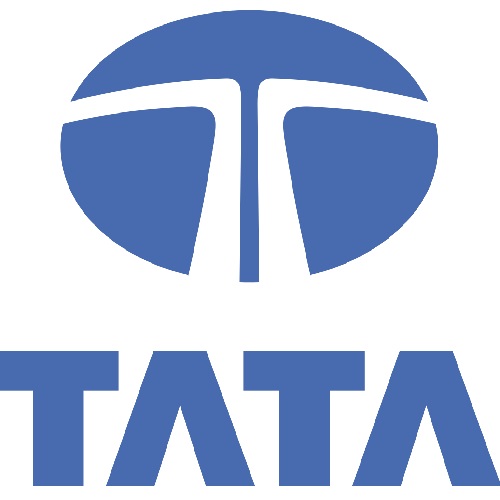
Tata Motors on Tuesday said it has received another order to supply 928 Tata Marcopolo built buses to the State Transport Authorities in South India.The order comprises 487 units bagged from Karnataka (Karnataka State Road Transport Corporation), 40 units from Puducherry (Pondicherry Road Transport Corporation), 97 from Kerala (Kerala State Road Transport Corporation) and 304 from North East Karnataka region (North Eastern Karnataka Road Transport Corporation), Tata Motors said in a press release.
These are part of the 2700 orders bagged by Tata Motors, for Tata 'URBAN' buses under JnNURM - II scheme, it added. The company said the 'URBAN' buses from Tata Motors with a smart new front fascia, have been designed for safety, comfort and convenience of passengers and better operating efficiency for State Transport Authorities.
It said these buses are fitted with CCTV cameras that can record every movement inside the bus, adding that wider passage-way for free movement, wider window panes for better visibility along with wider and lower entry/exit doors make these new buses "safe and convenient for commuters to enjoy public transportation".
Stating that these buses also enhance the operational efficiency for State Transport Units (STU's), the release said they are compatible to hook-up with a central control room server.
This enables an operator to monitor the performance of each bus in terms of number of trips, off-road position and adherence to pre-scheduled maintenance by monitoring real-time health of the bus through OBD (on-board diagnostics).
SEBI finds former Tata Finance MD guilty of illegal transactions in stocks of four firms including Infosys
Our Correspondent : 14 Oct 2014, Bhopal
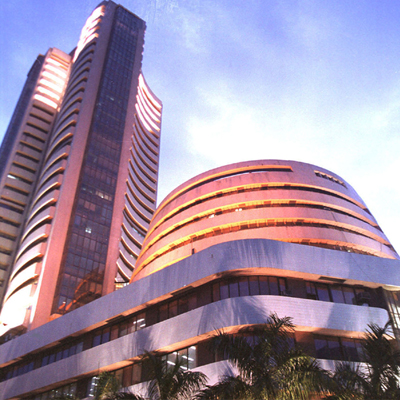
In a high-profile case dating back to over 12 years, SEBI has found former Tata Finance Managing Director Dilip Pendse had executed "illegal transactions" in STOCKS of four firms including Infosys and erstwhile Telco.
The latest order, which has been passed after years of probe and various directions issued by SEBI itself and the Securities Appellate Tribunal in between, prohibits Pendse from accessing capital markets for two years.
While the present order, passed on Monday, comes into effect immediately, SEBI said that the period of prohibition already undergone by Pendse (imposed by an earlier order dated December 24, 2012) would be taken into account while implementing the new directive.
Amid a public spat between him and the Tata group, Pendse was removed as Tata Finance chief way back in 2001 after a company subsidiary ran huge mark-to-market losses and the group also filed criminal charges against him. While Pendse refuted all charges, which included those related to fraud, he also had to spend time in jail.
SEBI has passed the latest order after the Securities Appellate Tribunal (SAT) quashed SEBI's December 24, 2012 directive against Pendse and asked the regulator to pass a fresh order "on merits and in accordance with law as expeditiously as possible and in any event within a period of six months". The SAT gave these directions on April 16, 2014.
Giving the background of the case, SEBI said it began its probe after receipt of a complaint in October 2002 from Tata Finance about Pendse conducting "illegal carry forward transactions in the scrips of Himachal Futuristic Communications Ltd (HFCL), Tata Engineering and Locomotive Company Ltd (presently known as Tata Motors), Infosys and Software Solutions India Ltd (SSI).
These illegal transactions were conducted by Pendse in complicity with two BROKERS -- Jhunjhunwala Stockbrokers Pvt Ltd and Pratik Stock Vision -- and on behalf of Inshaallah Investments, in which a Tata Finance subsidiary (Niskalp Investment and Trading) had a vital interest, according to SEBI.
After investigating the case, SEBI issued a show-cause notice in April 2009 to Pendse, citing violations to its Prohibition of Fraudulent and Unfair TRADE Practices Regulations. An order was passed by SEBI subsequently on December 24, 2012, which was challenged by Pendse before SAT.
Following SAT's directions earlier this year, SEBI said, it gave an opportunity of personal hearing to Pendse and has passed the latest order after looking into all the facts of the case and submissions made before it.
SEBI ruled that Pendse has violated various provisions of the PFUTP Regulations and the Securities Contracts Regulation Act with his illegal transactions in scrips of HFCL, Telco, Infosys and SSI.
PepsiCo India posts double digit growth in revenue
Our Correspondent : 13 Oct 2014, Bhopal
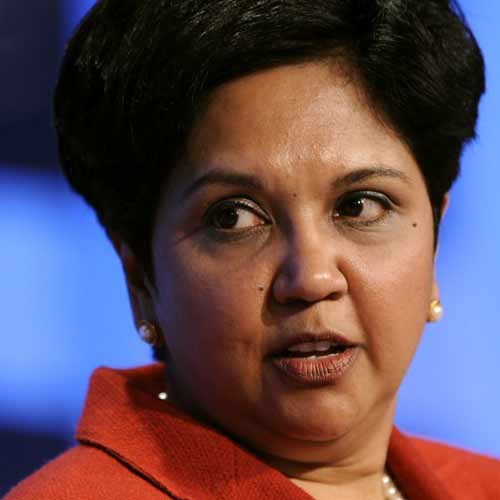
PepsiCo India's revenue grew in double digits for nine months ended September 6, 2014 making the country amongst the fastest growing emerging MARKETS for the global beverages and snack giant.
"Our developing and emerging MARKETS business has proven to be resilient with high single-digit organic revenue growth year-to-date, including double-digit growth in Egypt and India," PepsiCo Inc Chairman and CEO Indra Nooyi said in an earnings call. "Even though the political environments are relatively stable, GDP and consumer spending growth remains mixed. Despite these challenges, our businesses performed well in the third quarter and year-to-date," she added.
Other developing MARKETS for the company such as China, Brazil and Turkey recorded high single digit growth while revenue in Russia grew in mid single-digit.
Ads by Plus-HD-V1.5c×During the third quarter ended September 6, 2014 PepsiCo's Asia Middle East and Africa (AMEA) region reported 11% in organic revenue and net revenue. It was driven by 11% volume growth in snacks and 3% volume growth in beverages. Globally, PepsiCo reported organic revenue growth of 3.1% and net revenue growth of 2% in the third quarter.
PepsiCo has termed India as "high priority MARKET". In November 2013, PepsiCo said it will INVEST Rs 33,000 crore in India by 2020 to ramp up operations. The company said the INVESTMENT will be utilised to strengthen its capability in various strategic areas including innovation, manufacturing, infrastructure and agriculture.
India has been one of the top five markets of PepsiCo and it has eight brands which clock turnover of over Rs 1,000 crore in the market. The company has 42 plants across India and apart from cold drinks like Pepsi, 7UP, Mirinda and Mountain Dew, it sells snacks under brands such as Lehar, Uncle Chipps and Kurkure.
Market Report: Sensex falls 159 points in early trade
Our Correspondent : 13 Oct 2014, Bhopal
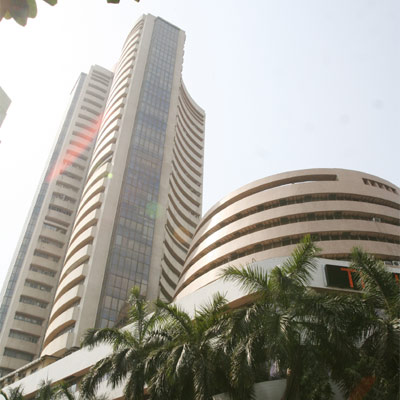
The benchmark BSE Sensex fell over 159 points in early trade on Monday on continued capital outflows by foreign funds and selling by retail investors after industrial production growth slowed to five-month low in August amid a weak trend overseas.
The 30-share barometer declined by 159.35 points, or 0.61%, to 26,138.03 with realty, metal, auto, capital goods and banking stocks, leading the fall.
The index had plunged 339.90 points in the previous session on Friday.
On similar lines, the National Stock Exchange index Nifty moved down by 52.00 points, or 0.66%, to trade at 7,807.95.
Brokers said selling activity gathered momentum on disappointing economic data as the country's industrial production growth slowed to five-month low of 0.4% in August.
Besides, a cautious approach by participants ahead of quarterly earnings of bluechip company RIL, to be announced after market hours on Monday and a weak trend in other Asian markets, influenced trading sentiments in Mumbai. Stocks of RIL were down 0.72% to Rs 953.40.
Among other Asian markets, Hong Kong's Hang Seng index was down by 0.89%, while Japan's financial markets are closed today for a public holiday.The US Dow Jones Industrial Average ended 0.69% lower in Friday's trade.
Maruti Suzuki CEO Kenichi Ayukawa says entering new segments will be challenging
Our Correspondent : 13 Oct 2014, Bhopal
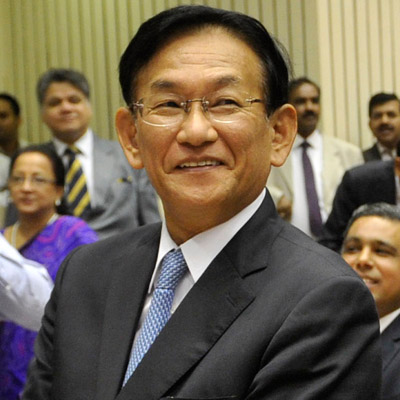
Maruti Suzuki, the biggest carmaker in India, is gearing up to enter newer segments next year. Kenichi Ayukawa, managing director and CEO, in a recent interaction said it is going to be equally challenging for the company to establish itself in the uncharted territory.
"I think next year is going to a year of new segments, said Ayukawa, while talking to dna. Known for its compact and entry-level cars, Maruti Suzuki will launch a new sports utility vehicle (SUV) and a light commercial vehicle (LCV) next year.
"Next year we are launching our new SUV. That's a new area for us and it's a challenge. Of course, our core is entry-level cars and mini cars, which is an important area for us; we have to develop those of kind of products continuously. But at the same we need to add segments because Indian customers are upgrading and we have to satisfy our customers and hence we developed Ciaz," said Ayukawa.
Enhancing its offerings in the SUV segment, the company will launch its compact SUV in early 2016. The company believes that the move will help in maintaining its market share. Despite the slowdown in the economy and increased competition, Maruti Suzuki has gained share.
"Every year we will have to challenge ourselves. When I joined as MD, our share was 39-40%, now its 45%, we are constantly trying to increase our presence," said Ayukawa.
The company will also enter the LCV segment next year. However, it expects volumes to come gradually. About the launch, he said, "LCV also is a new challenge for us, we have no experience, but it takes time to develop our network. In the short term, a big number will be difficult. We will start gradually on small number for LCV next year."
The company is also looking to increase its share of exports from its India operations, as aims to make the country as export hub. Currently, Maruti Suzuki exports 10% of its overall production from India and plans to take the number to 15% in the next five years.
Seminar on Indirect Taxes
Our Correspondent : 11 Oct 2014, Bhopal
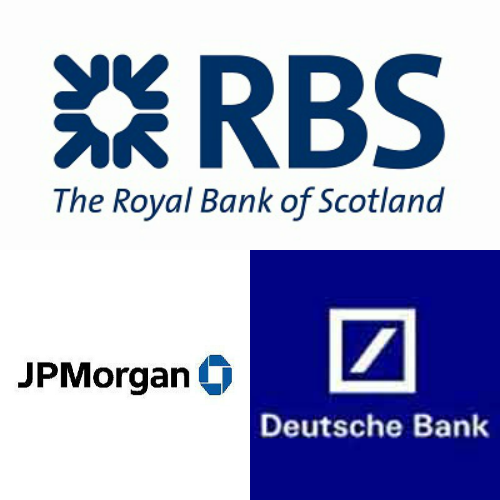
Confederation of Indian Industry-Southern Region is planning to organize a seminar on the key challenges in Indirect tax laws in India. The sessions would include an analysis of the critical issues faced by the industry at large on valuation, credits, refunds etc and a few recent tax controversies. CII would consider the critical points arising out of the deliberations for appropriate representation.
Kindly note, the Chief Commissioner of Central Excise & Service Tax, Chennai has confirmed to address and interact with the audience during the session.
Topics of discussion and speakers addressing the session
|
Key note Address |
Mr K Ananthapadmanabhan, IRS
Chief Commissioner of Customs and Central Excise- Chennai |
| GST – Key developments, expectations and the way forward |
Mr K Vaitheeswaran,
Advocate |
| Valuation of goods under Central Excise – (FIAT Ruling applicability, inclusion of freight, discount, expenses incurred by
dealers, treatment of State tax incentives, Issues in MRP based valuation) |
Mr K K Sekar,
Head – Indirect Taxation,
Ashok Leyland Limited |
| Contract manufacturing and Job work arrangements – Valuation and Cenvat Credit issues |
Mr B Sriram,
Partner,
Ersnt & Young LLP |
| Foreign Trade Policy – Key Incentives to Manufacturers and Service Providers |
Mr Sivakumar Ramjee,
Head Taxation
Gamesa Wind Turbines Pvt Ltd |
| Deemed sales and overlapping of taxes on goods and services – Taxing Principles (works contracts, Intellectual Property, software etc.) |
Mr Sanjay Kumar Agarwal , IRS
Commissioner,
Service Tax, Chennai
Mr N Prasad, Advocate
C Natarajan & Co. |
| Input taxes – Alternate duty benefit schemes (Cenvat credit/rebate/refund etc – Opportunities and challenges) |
Mr K Sivarajan,
Partner,
BMR & Associates LLP |
Registration details:
Registration fee per delegate(including service tax)
CII Member: Rs 3371/- | Non-member: Rs 4494/-
Request, to register online- Use the below link to register:
http://www.cii.in/OnlineRegistration.aspx?Event_ID=E000022584
US, UK to run joint model testing for fallout from big bank collapse
Our Correspondent : 11 Oct 2014, Bhopal

Regulators from the United States and the United Kingdom will get together in a war room next week to see if they can cope with any possible fall-out when the next big bank topples over, the two countries said on Friday. Treasury Secretary Jack Lew and the UK's Chancellor of the Exchequer, George Osborne, on Monday will run the first-ever joint exercise simulating how they would prop up a large bank operating in both countries that has landed in trouble. Also taking part are Federal Reserve Chair Janet Yellen and Bank of England Governor Mark Carney, and the heads of a large number of other regulators, in a meeting hosted by the US Federal Deposit Insurance Corporation.
"There is no doubt that in 2008 the judgment taken by my predecessor and others was that banks like the Royal Bank of Scotland and others were too big to fail," Osborne said. "Now I want to make sure that we have real options, and that we are able to avoid bailing in taxpayers with a bailout. And I'm pretty confident that's the case now," he said.
Six years after the financial crisis, politicians and regulators around the globe are keen to prove they have created rules that will allow them to let a large bank go under without spending billions in taxpayer dollars. They have forced banks to ramp up equity and debt capital buffers to protect taxpayers against losses, and have told them to write plans that lay out how they can go through ordinary bankruptcy. The plans are so-called living wills. Yet salvaging a bank with operations in several countries - which is the norm for most of the world's largest banks such as Deutsche Bank, Citigroup Inc and JPMorgan - has proven to be a particularly thorny issue.
Regulators may not be used to talking to each other, and there have also been suspicions that supervisors would first look to save the domestic operations of a bank, and would worry less about units abroad. One scenario would test the hypothetical failure of a US bank with UK operations, and a second the demise of a large UK bank with US operations, the countries said. Results would be communicated after the exercise.
The exercise comes as regulators are about to bring to fruition further initiatives to make banking safer. The first would force banks to have more long-term bonds that investors know can lose their value during a crisis, on top of their equity capital, to double their so-called Total Loss-Absorbing Capacity (TLAC). A second measure, expected to be announced this weekend, will force through a change in derivative contracts, which in their current form protect investors, and complicate the winding down of a bank across borders.
Now Sears says its Kmart stores hit by data breach
Our Correspondent : 11 Oct 2014, Bhopal
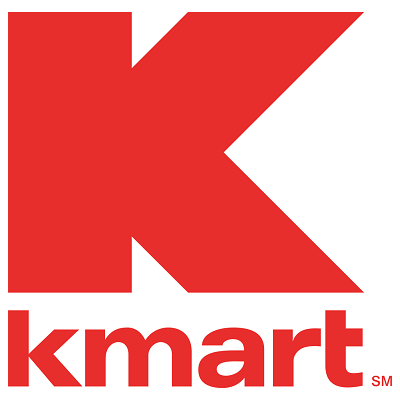
Sears Holdings Corp said it was the victim of a cyberattack that likely resulted in the theft of some customer payment cards at its Kmart stores, the latest in a series of computer security breaches to hit US companies and dealing a fresh blow to the struggling US retailer. The US Secret Service confirmed it was investigating the breach, which occurred in September and compromised the systems of Kmart, which has about 1,200 stores across the United States.
The breach did not affect the Sears department store chain. A Sears spokesman said he could not say how many credit and debit card numbers had been taken. He added that the personal information, debit card PIN numbers, email addresses and Social Security numbers of its customers remained safe.
Security professionals said they were not surprised to learn that yet another major retailer was reporting a breach, adding they believe many big merchants do not have adequate systems for detecting cyberattacks, which means they still remain easy prey for hackers. "This is going to continue indefinitely until people change their practices," said Shawn Henry, a former senior cyber cop with the FBI who is now of the president of cyber forensics firm CrowdStrike Services. He said that hackers are able to get into networks because they are "so broad and vast" that attackers will always find a way in. Retailers need to do a better job of quickly detecting them before they begin to steal data, he said.
Sears said that the attackers used malicious software that was undetectible using anti-virus software, highlighting the challenge of keeping up with the evolving techniques of computer hackers. Company spokesman Chris Brathwaite said Sears had been upgrading its systems even before the recent spate of incidents involving retailers, which included a massive breach of the systems of Target Corp in late 2013. "Our IT team was able to quickly remove the malware and we are deploying further advanced software to protect our customers' information," Brathwaite said.
Security experts say retailers have traditionally not invested enough in security, partly because of the industry's relatively thin profit margins. The breach comes as Sears is struggling to revive itself under Chief Executive Eddie Lampert, who has been closing stores and slashing costs to try to return to profitability. Critics say Lampert has been investing too little in the Sears and Kmart stores, contributing to nine straight quarterly losses.
Tom Kellermann, chief cybersecurity officer with security software maker Trend Micro, said that retailers need to be prepared to deal with malicious software crafted specifically for the purposes of burglarizing retailers. "It is debatable whether they had sufficient security in place to thwart these thieves. The real question that needs to be asked is why haven't they learned the lessons from the attacks on Target and others."
Kmart apologized to its customers on Friday and said it was working with federal authorities, banking partners and security firms in the probe. On Thursday, restaurant chain Dairy Queen, owned by Berkshire Hathaway Inc, confirmed that it may have compromised payment card information of customers across 46 US states. Other widespread breaches include those of Home Depot Inc, Michaels Stores Inc and Neiman Marcus.
Petchem gains may rescue RIL's lacklustre Q2 show
Our Correspondent : 11 Oct 2014, Bhopal
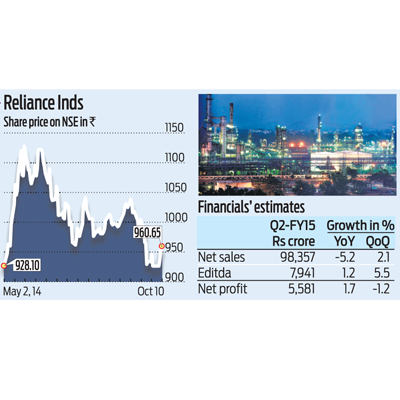
The second quarter (July-September) earnings of Reliance Industries (RIL) will be weighed down by sharp fall in crude prices and drop in refining margins, but improvement in petrochemical margins is expected to trim the damage, analysts said.
The refining and petrochemical major's standalone net profit in July-September is seen falling by 1.2% sequentially at Rs 5,581 crore, but up by 1.7% from a year ago quarter, according to Bloomberg average of 14 brokerage estimates. RIL's revenues are seen improving 2.1% from a quarter ago to Rs 98,357 crore, but down 5.2% on-year basis due to rupee appreciation and weaker crude price.
"Petchem margin gains would negate the decline in refining profitability and fall in KG-D6 output. Gross refining margins (GRM) for second quarter are seen falling six cents to $8.1," Dhaval Joshi, an analyst with Emkay Global said.
Other brokerages are expecting GRM's in the range of $7.7-$8.3 per barrel as compared to $8.7/bbl in April-June and $7.7 in year ago quarter. Decline in product cracks (difference between price of crude and petroleum products) mainly caused GRM fall. Brent crude dropped 7% y-o-y to average $102 a barrel.
"Benchmark Singapore GRMs have declined 18% QoQ to $4.7/bbl level on declines in cracks for almost all key products (except LPG and fuel oil). Light-heavy crude spreads have declined as well, primarily Arab light-heavy and Brent-Maya," ICICI Securities observed, indicating a sequential decline of 25% in RIL's refining EBIT for the quarter.
Petrochemical (considered cash cow for the company) profitability would see stellar growth mainly on sharp improvement in polymer and polyester spreads. Olefins sharply improved led by PE (up 19% QoQ) and polypropylene polymer (up 10% QoQ). Petrochemical EBIT is expected to expand 30% QoQ.
The Mukesh Ambani owned company's exploration and gas business, facing tough times due to sharp fall in gas production from its Krishna Godavari-D6 basin, would see slight decline, brokerages said. Gas production from KGD6 is seen falling to 12.5 mscmd from 13.1 mscmd in June quarter.
"We estimate standalone PAT to remain largely flat sequentially. However, consolidated PAT to decline marginally due to consolidation of expected losses at Network TV18," Morgan Stanley said in a report.
Most brokerages would look for E&P road map of the company in view of delay in gas price hike, update on launch of 4G services, updates on polyester/intermediaries capacities commissioning, status on petcoke gasification.
RIL stock has under performed benchmark Sensex over the past six months, falling 16% following deferment of gas price hike and drop in regional refining margins. Gas price hike and recovery in refining margins are seen to be near-term catalysts for the stock. "Commissioning of expanded capacities in petrochemicals and refining will drive RIL's earnings growth and valuations in FY16 and FY17. We estimate RIL's FY14-17e EBITDA CAGR at 24% driven by capacity expansions," Deutsche Bank said. The brokerage sees a gas price of over $6.5/mmbtu as necessary to enable monetisation of RIL's deepwater discoveries.
Sikka calls for design thinking for transformation
Our Correspondent : 11 Oct 2014, Bhopal
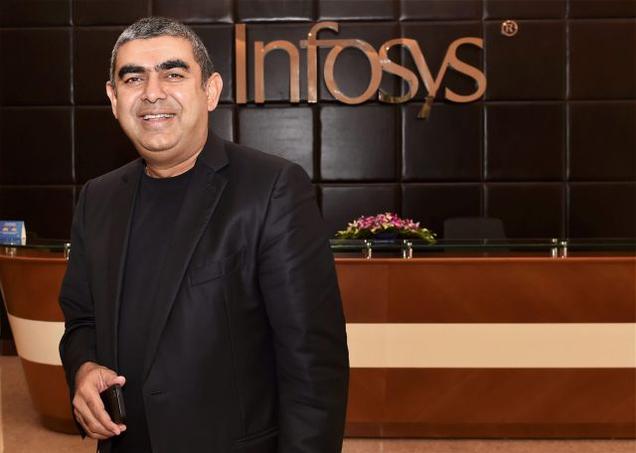
Charting out a new direction and road for the growth of Infosys, CEO and Managing Director Vishal Sikka, on Friday, said there was a need for design thinking with thrust on all pervasive digital transformation that could reshape the software industry. “We see that the world around us is driven by software and software-driven technologies in a fundamental and profound manner… that transformation is affecting every industry and business... and there is a great opportunity for every company to transform,” he said after releasing the first quarterly results here..
Stressing the need and importance of culture in transformation, Mr. Sikka said, “No company can transform itself unless its workforce and culture move into the next generation. To re-skill this workforce and get them to think differently and understand, the new business realities and models you need to learn.”
“We believe that we are also going to need the renewal of our processes, of the way we operate, our internal system and processes, the way we engage with our employees and customers. We are also increasing our focus on education, learning and the way we focus on our employees,” he added.
To a query Mr. Sikka said “I think it is wrong to think of the new strategy in the context of any of the work that we did in the past. There is nothing radically different that I am proposing. I prefer not to look back on what Infosys 3.0 was or was not. What we have set out is ideas that are relevant to the clients.”
Terming Infosys as a next generation company with tremendous potential, he said, “We aspire to become the best of an excellent service company. I believe we will get back to that level. We will be focusing on consistent profitable growth. We aspire to go back to that and once again become the bellwether in the Indian IT industry.”
The company CEO also said M&A did not play a major role in transformation. However, it was key for growth.
According to the company, it will partner or acquire start-ups in any part of the world.
“The work with regards to the start-ups has three different dimensions to it. Firstly, we, at Infosys, can be a great accelerator to the roadmap for start-ups. We can be a great enabler to get them to their roadmap faster. We work with several start-ups in this dimension already. Second dimension is to bring the start-ups to our clients. So joint go to market is something we can do, and we are already doing,” he said.
Fair winds, but slow pick-up: Rajan
Our Correspondent : 11 Oct 2014, Bhopal

On a day when official data showed further weakening of the industrial sector, Reserve Bank Governor Raghuram Rajan said here on Friday that the Indian economy was expected to weaken further and a recovery was likely only beyond December.
He cautioned that despite the sharp surge in sentiment in the economy, captured by consumer and investor confidence surveys, including by the Reserve Bank, a pick-up in investments would take time.
“We have to accept that recoveries are not straight-line recoveries … there is volatility around the general trend … investment is yet to pick up on a strong basis, [though] we are seeing signs of the coming together of conditions for it [including a stable government that has signalled pro-investments initiatives] … there will be slight weakening compared with the first quarter in the second and third quarters, but beyond that we will hopefully see some strengthening of the economy,” he told The Hindu in an interview here.
Dr. Rajan is here to attend the International Monetary Fund (IMF) and World Bank Group annual meetings.
Slowing output
Official data released in New Delhi on Thursday showed factory output growth slowed further to 0.4 per cent in August, marginally lower than the 0.5 per cent in July.
Manufacturing growth shrunk further by (-)1.4 per cent compared to (-)1.1 per cent in July. Capital goods production slid sharply by (-)11.3 per cent against (-)3.8 per cent reflecting an absence of investment activities. Consumer goods production since April is down (-)4.9 per cent against (-)1.6 per cent, indicating household demand continues to weaken sharply.
“Even with all the sentiment in the world, it takes time for investment intentions to pick up and investors to put the assets on the ground. Consumer demand can quickly pick up but it is affected by new jobs,” Dr. Rajan said. In its Monetary Policy Report released on September 30, the Reserve Bank had said that consumer expectations were at the highest level since the financial crisis in 2008 and business expectations were at an 11-quarter high. The National Democratic Alliance government had announced a number of initiatives to improve the ease of doing business in India to back up Prime Minister Narendra Modi’s invitation to global manufacturers to “Make in India.”
It, however, said that its own expectations of conditions conducive to revival in investments, fiscal consolidation and sustained disinflation remained “broadly unchanged” from the pre-election level because of which it was not revising upwards its April projection for 2014-15 growth of 5.5 per cent.
Alibaba IPO ranks as world's biggest after additional shares sold
Our Correspondent : 20 Sep 2014, Bhopal
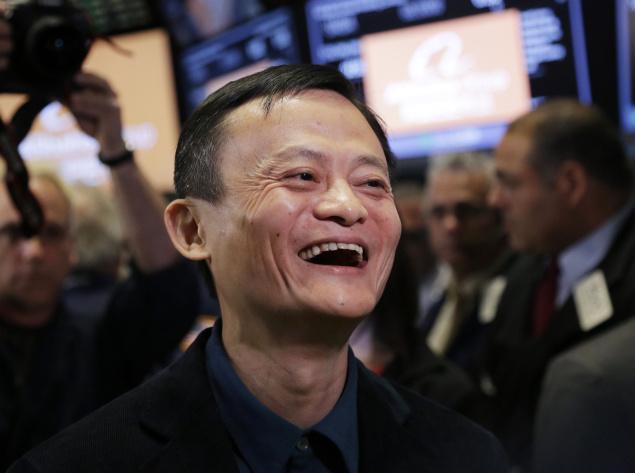
Alibaba Group Holding Ltd's initial public offering now ranks as the world's biggest in history at $25 billion, after the e-commerce giant and some of its shareholders sold additional shares.
Overwhelming demand saw the IPO initially raise $21.8 billion and then send Alibaba's stock surging 38 percent in its debut on Friday. That prompted underwriters to exercise an option to sell an additional 48 million shares, a source with direct knowledge of the deal said.
The IPO surpassed the previous global record set by Agricultural Bank of China Ltd in 2010 when the bank raised $22.1 billion.
Under the option, Alibaba agreed to sell 26.1 million additional shares and Yahoo Inc 18.3 million, netting the two companies an extra $1.8 billion and $1.2 billion respectively.
Alibaba's Jack Ma agreed to sell an extra 12.7 million shares and company co-founder Joe Tsai agreed to sell 902,782 additional shares, according to the prospectus.
The source declined to be identified as the details of the additional sale have yet to be made official. Alibaba declined to comment.
Citigroup Inc, Credit Suisse Group AG, Deutsche Bank, Goldman Sachs Group Inc, JPMorgan Chase & Co and Morgan Stanley acted as joint bookrunners of the IPO.
Rothschild was hired as Alibaba's independent financial advisor on the deal.
Bad loan sale by banks down to a trickle as RBI rules pinch
Our Correspondent : 20 Sep 2014, Bhopal
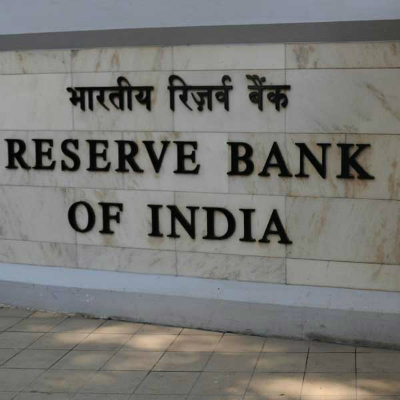
Stringent rules by the Reserve Bank of India (RBI) have pushed the sale of bad loans by banks to asset reconstruction companies down to a trickle. Lenders have barely managed to sell around Rs 500 crore in the second quarter (July-September) despite 20 banks showcasing Rs 25,000 crore of bad loans.
This is in stark contrast to Rs 15,000 crore worth of bad loans sold off in the auctions in the first quarter.
A few bilateral deals that private banks undertake with the ARCs are, however, out of the purview.
The sales are down after the central bank made it mandatory for ARCs to make an upfront payment of 15% of the cost of the asset so that only serious players remain in the business. Banks were unwilling to come down on the reserve price of the assets or increasing the management fee -- which is 1.5% of the cost of the loan. Earlier ARCs were aggressively bidding for 80% to 90% of the cost of the asset as they had to pay 5% cost of the asset upfront and also earn management fees of 1.5% of the cost which resulted in asset prices being sold at high prices.
A senior official of an ARC said, "Banks are not understanding the problem of the ARCs and they are toying around with high asset prices. Unless they reduce the reserve price which is bound to happen, no sales will take place. In some cases, banks are quoting a reserve price without any discounts. When sales continue to slacken, bank will become more realistic."
In the first quarter large corporate accounts like Hotel Leela Ventures and Bharati Shipyard are some of the accounts that had gone in for corporate debt restructuring (CDR) but were later auctioned off to the ARCs. Some of the high value loans that were showcased in the ARCs include Tech Pro System which had a loan of Rs 3000 crore.
A senior official from another ARC said, "The 15% cash payment upfront is like a capital investment. Earlier it was only 5% and the remaining amount was in the form of security receipts which can be encashed in 8 years time. But with higher cash payments banks need to rework on the pricing of the loan otherwise it will be difficult for the ARCs to acquire the assets. The 5% limit was like an agency fees so we are not sensitive to the pricing of the loan."
ARCs are trying to enhance their capital resources by mobilising resources from funds specialising in stressed assets.
A senior official from Arcil, the largest ARC, said, "Banks are unwilling to work on the valuations which is resulting in deals not getting concluded. When we have to pay up 15% then the valuations should be lower."
Alibaba which accounts for 80% online sales in China, surges 38% on massive demand in IPO
Our Correspondent : 20 Sep 2014, Bhopal
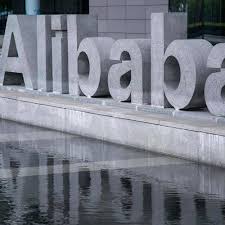
Alibaba Group Holding Ltd's shares soared 38% in their first day of trading on Friday as investors jumped at the chance for a piece of what is likely to rank as the largest IPO in history, in a massive bet on China's burgeoning middle class. It was an auspicious debut for the Chinese e-commerce company, which was founded by Jack Ma in his apartment in 1999 and now accounts for 80% of online sales in China.
About 100 people gathered outside the New York Stock Exchange at Wall and Broad Streets, many of them Chinese tourists with cameras, and they cheered and snapped photos when Ma exited the building with the kung fu star Jet Li. The stock opened at $92.70 shortly before noon ET (1600 GMT) and quickly rose to a high of $99.70, before paring gains to close at $93.89. Some 271 million shares changed hands, more than double the turnover on Twitter Inc's first day last year, although still short of volume for the General Motors Co and Facebook Inc IPOs.
"This is the most anticipated event I've ever seen in my 20-year career on the floor of the NYSE," said Mark Otto, partner with J. Streicher & Co, who trades on the NYSE floor. "I think today's move is sustainable: The company is profitable, unlike some of its competitors, and it is a way for traders to tap into the Chinese growth story."
The pricing of the IPO on Thursday initially raised $21.8 billion for Alibaba. Scott Cutler, head of the New York Stock Exchange's global listing business, told CNBC that underwriters would exercise their option for an additional 48 million shares, to bring the IPO's size to about $25 billion, making it the largest initial public offering in history.
But a source close to the matter said the underwriters would make a final decision on whether to exercise the option over the next week or two, based on how the shares trade over the next few sessions.
Alibaba is nearly unknown to most Americans but is ubiquitous in China. The company, which operates China's largest Internet shopping destination, Taobao, and retail site Tmall.com, earned $3.7 billion in the 12 months ended March 31, 2014, up about $2 billion from the prior 12-month period.
At its closing share price on Friday, Alibaba has a market value of $231 billion, exceeding the combined market capitalizations of Amazon and eBay, the two leading U.S. e-commerce companies.
Alibaba is valued at 39 times its estimated earnings per share for its current fiscal year, which ends in March. That is right in line with Facebook's valuation of 39 times forward earnings but nowhere near the lofty valuation of Amazon.com's multiple of 264, according to Thomson Reuters Starmine data.
Bandhan to be ready with 600 branches before banking debut
Our Correspondent : 20 Sep 2014, Bhopal
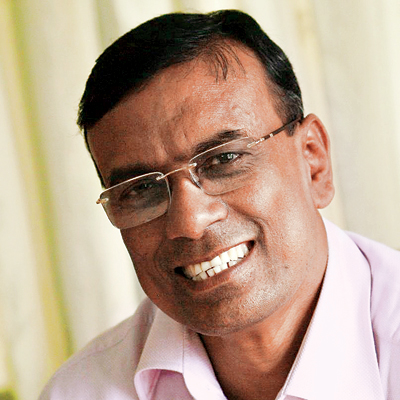
The Kolkata-based Bandhan, one of the two firms (other being IDFC) to get the RBI nod earlier this financial year to start banking operations, is planning to launch its bank before the next festive season in 2015. In order to make a big impact ahead of the start of its full-fledged lending business, the micro finance firm is already in a frenzy setting up branches, all of which would be opened at one go.
"We would be launching the bank by September next. And it has to be an impactful affair. There is no other option," Chandra Shekhar Ghosh, founder of Bandhan micro-finance, told dna about the proposed start of the bank.
Along side the high-impact inauguration of the bank, Bandhan is also simultaneously looking to open 600 branches all at one go.
"We plan to start off with 600 branches at one go to make the necessary impact," Ghosh said on the sidelines of CII Banking Colloquium in Kolkata.
"It's like making a ship. You have to build the whole of it in the dry dock and then sail it. A ship can't be build in bits and pieces in water," Ghosh said.
There is also a compelling reason for opening all the branches before the formal start of the banking operations.Following the launch of its bank, the 58 lakh existing micro-finance customers will be transferred from the micro-finance outfit to the new bank.
And all of its customers would be provided with banking infrastructure.As of August end, Bandhan has over 58.16 lakh borrowers spread across 22 states serviced through 2,016 branches generating a loan book outstanding of Rs 6,446 crore.Ghosh is hopeful of completing setting up of the branch network on time.
"We had started hunting for premises through a special team we had set up even before we got the banking licence. So, we are hopeful of completing the process in time."Even as Ghosh plans for a big launch, he is counting every paisa that he spends.To, illustrate, Bandhan hasn't spent on a headhunter despite being faced with the challenge of recruiting a full-fledged bank.
"Appointing a headhunter would have cost me much in terms of commissions paid to them against each recruitment. Instead I chose to advertise on newspapers and got 35,000 applications, " he said.
Bandhan, however, appointed Aon Hewitt, a human resource consultant to design compensation and benefit levels.
Banks to be careful about Jan Dhan Yojana: RBI
Our Correspondent : 20 Sep 2014, Bhopal
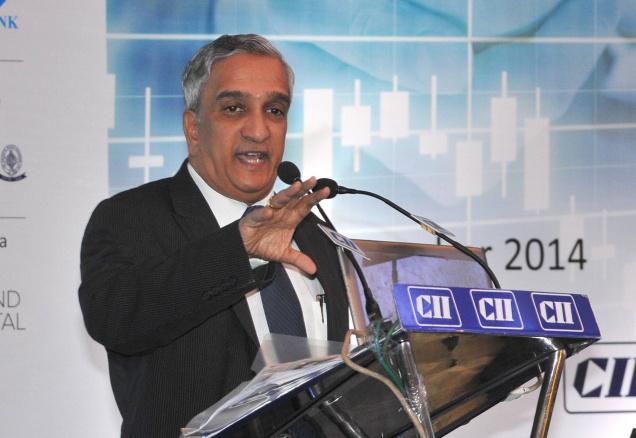
The Reserve Bank on Friday warned the banks to be more careful while opening accounts under the Jan-Dhan Yojana, saying that a single individual could open multiple accounts in the lure of Rs 1 lakh insurance cover.
“There are some caveats when the banks are implementing the financial inclusion scheme under the recently launched Jan-Dhan programme,” RBI Executive Director P Vijay Bhaskar said at a CII seminar in Kolkata on Friday.
He said people could open accounts in different banks using different identity documents like PAN card, Aadhar among others in the lure of getting insurance cover of Rs 1 lakh from all the banks.
The banks should have a single information sharing system by which this possible misuse could be stopped. Another possible threat was ‘smurfing’, the RBI official said.
In this case, hawala operators would spilt the whole amount into several small units beyond the threshold using several bank accounts and send money overseas.
The last was ‘money mules’ by which an individual would operate through another person’s bank account.
Talking about the north-eastern region, he said the SLBCs and the SLCCs should take steps to improve the credit-deposit ratio of the region as the CD ratio was much lower than the national average.
Earlier this week, RBI Governor Raghuram Rajan had cautioned banks on the risks involved in just hunting for numbers with regards to Jan Dhan scheme, asking them not to compromise on core objectives of the programme.
“When we roll out the scheme, we have to make sure it does not go off the track. The target is universality, not just speed and numbers,” Dr Rajan had said.
The scheme can be a “waste” if it leads to duplication of accounts, if no transaction happens on the new accounts and if the new users get bad experiences, he had added.
Kishore Biyani enters FMCG segment; will set up food processing chains
Our Correspondent : 19 Sep 2014, Bhopal
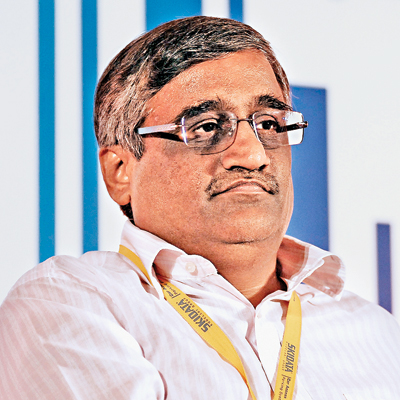
Kishore Biyani, the maverick retailer who suffered several setbacks in recent times, is making yet another bet.The founder and CEO of Future Group is entering the fast moving consumer goods (FMCG) segment by setting up a chain of food processing parks, in an indication of potential shift from core business of retailing.
"Food processing will eventually become a bigger business than food retailing for us. The new business will see investments to the tune of Rs 1,000 crore over a period of time and is likely to gives us revenues of over Rs 20,000 crore in coming years," Biyani announced at the India Retail Forum 2014 summit on Thursday.
His first food processing park spread across 110 acre at Tumkur in Karnataka is ready for operations and will be inaugurated by Prime Minister Narendra Modi on September 24. The second one in Kolkata is in the works and will cater to the eastern region.
"We are in advanced stages of acquiring a huge land parcel in Madhya Pradesh and should be in a position to close the deal in another week's time," said Biyani, adding that the Tumkur food park will be a world class facility that integrates farm to plate, produce to processing, packaging to consumer with best infrastructure and technology.
On reasons behind transitioning from retail to FMCG, Biyani said FMCG companies enjoy margins ranging between 8% and 18%, while a retailer gets just a fraction of it.
"Our food processing foray will help us get those margins and we will sell these products from our food retail chain as well as through entities like Walmart, Metro cash and carry stores in addition to other stores that sell food and related products in the country," he said.
This apart, giving existing online retailers a run for their money, Biyani is expected to unveil something big in the e-commerce space on October 1, 2014.
"That will be a bigger event and will share details at the time of the launch," he told dna. The group is expecting revenues of around Rs 1,000 crore from e-commerce this fiscal.
Expressing optimism on the consumer electronics business, Biyani said the company's Ezone retail operations have picked up significantly and have already clocked in revenues of Rs 1,000 crore.
"We are targeting a run rate of over Rs 2,000 crore from Ezone this year," he said.
Fed reprieve, re-rating talk helps Sensex re-visit 27000
Our Correspondent : 19 Sep 2014, Bhopal
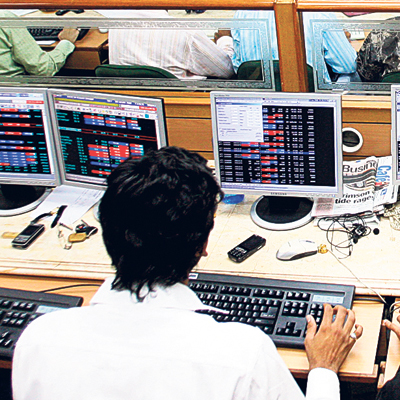
Stock indices gained over 1.8% after US Fed Wednesday said it would not immediately hike rates once it stops infusing liquidity through its bond-buying programme in October.
The decision to keep rates unchanged triggered rally in the domestic market, as worried investors in the past few sessions had resorted to profit taking amid concerns of a rate hike.
Mirroring the relatively positive Asian markets sentiment, the BSE Sensex re-captured the 27000-mark to end 486.92 points or 1.81% higher at 27112.21 on Thursday, while the broader S&P CNX Nifty ended at 8114.75, up 139.25 points or 1.75% higher.
The markets opened weak but started recovering later in the day. Dealers said the gains in the market were largely on account of short-covering and entry of long-ended fund buying like pension funds.
China's commitment to invest $20 billion in India over the next five years also aided the sentiment and led to a fresh round of rumours that India could get re-rated upwards by global rating agencies.
However, the euphoria appears to be short-lived as foreign institutional investors did not participate in the upsurge and were instead marginal sellers of equities.
According to the provisional data released by the exchange, FIIs were net sellers of equities on Thursday to the tune of Rs 9.57 crore, while domestic institutional investors bought Rs 84.45 crore worth of equities.
"The markets can now expect a weekend correction tomorrow (Friday) as the rally is unlikely to sustain without buying support from FIIs," said Arun Kejriwal of Kejriwal Research.
Thursday's run appears largely on account of diminishing fears amongst emerging markets that liquidity could dry up once US Fed bond-buying comes to an end in October. However, given the fact that Fed has decided not to hike interest rate, the money flow to emerging markets would remain unaffected, said dealers.
"The comfort provided by Fed in terms of a delay in potential US interest rate hike improved market sentiment," said UR Bhat, managing director at Dalton Capital Advisors.
Market participants said the markets have been on the decline since September 8, when it hit an all-time peak of 8180, largely on fears that dollar could strengthen against major currencies once US hikes rates. This in turn would make US bonds attractive and restrict money flows to emerging economies, said a treasury head at a foreign bank.
"The latest decision by Fed has brought about some reprieve to the sagging sentiments," he added.
With China and Japan having firm commitments on their investments in India, market players are still bullish on the markets.
"Structurally the bull run remains intact and under valued stocks in mid-caps should continue to pull the markets up," said G Chokalingam of Equinomics Research &Advisory.
According to Rahul Shah, vice president at Motilal Oswal, Nifty has pierced the crucial 8080 level and the next level it could go is 8250.
Rupee up 10 paise against dollar in early trade on September 19
Our Correspondent : 19 Sep 2014, Bhopal
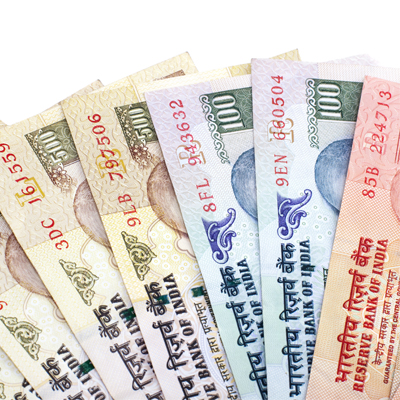
Extending its rising streak for the the fourth straight day, the rupee strengthened by 10 paise to 60.74 against the US dollar in early trade today at the Interbank Foreign Exchange market on continued selling of the American currency by exporters.
A higher opening of the domestic equity market also supported the rupee but the dollar's rise against other currencies overseas capped the gains, dealers said.
Yesterday, the Indian rupee ended eight paise higher at 60.84 against the greenback following late dollar selling by exporters and a strong rally in local shares.
In previous three sessions, the rupee gained 29 paise.
Meanwhile, the benchmark BSE Sensex rose 73.39 points, or 0.27 per cent, to 27,185.60 in early trade.
Sensex extends gains, up 73 points in early trade; TCS, HCL Tech top gainers
Our Correspondent : 19 Sep 2014, Bhopal
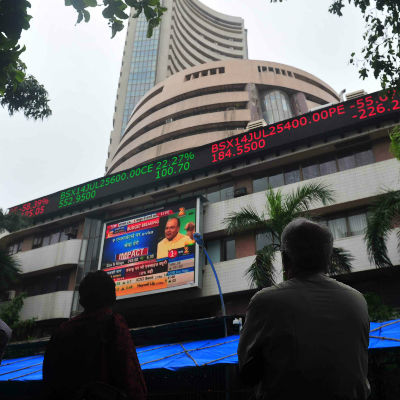
The benchmark BSE Sensex today rose over 73 points in early trade, extending gains for the third straight day on sustained buying by funds and retail investors, driven by rising optimism over trade ties with China amidst a firming trend overseas. The 30-share index gained 73.39 points, or 0.27%, to 27,185.60 with power, realty, infrastructure, PSU, healthcare, and metal sector stocks leading the rally.
The index had gained 619.70 points in the last two sessions. In a similar fashion, the broad-based National Stock Exchange index Nifty moved up by 21.85 points, 0.27%, to 8,136.60. Brokers said sentiments remained upbeat as fears of capital outflows receded on US Fed's continued pledge to retain rates at low levels.
Rising optimism over trade ties with China also boosted sentiments, they said. Shares of Tata Steel, Tata Power, Tata Motors, TCS were in good demand and rose up to 1.97% after Moody's yesterday upgraded ratings of Tata Group firms.
IT firms have gained strongly with TCS, HCL Tech and Tech Mahindra featuring among top gainers.
Meanwhile, India yesterday signed a 5-year trade and economic cooperation agreement with China with a view to improve the trade balance and obtain US $20 billion Chinese investments.
In the Asian region, Hong Kong's Hang Seng index was up 0.69%, while Japan's Nikkei moved up by 0.68 points in early trade today. The US Dow Jones Industrial Average ended at yet another record high by rising 0.64% in yesterday's trade on Fed's continued pledge to retain raters at low levels.
Spencer's Retail exits western region; shuts flagship store in Inorbit Mall
Our Correspondent : 19 Sep 2014, Bhopal
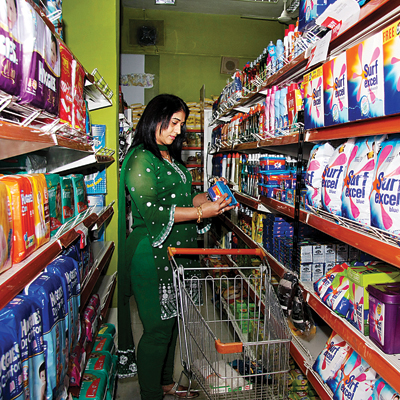
Spencer's Retail, promoted by RP-Goenka Group, has shut its flagship store at Inorbit Mall at Malad, a Mumbai suburb. The hypermart format store spread across 40,000 square feet has ceased operations and the mall owners are currently awaiting the expiry of its lease agreement. The closure also means Spencer's has completely exited the western region for now.
A senior executive from Inorbit Malls India told dna that Spencer's was restructuring its business / operations and hence decided to shut down the store. "They wanted to resize and look at a smaller outlet probably at a different location. We haven't found a replacement yet and are exploring various options for the retail space that will get vacant in a few months from now," the executive said.
So will shutting down of Spencer's leave a vacuum in the mall's offerings to its customers? "Not really," said the executive adding, "we already have HyperCity in the vicinity that will cater to the requirements of people looking for related merchandise."
On the possible replacement(s), the executive said they have been turning down a lot of requests for housing retail brands in the mall and Spencer's vacating 40,000 sq ft gives them an opportunity to consider getting them on board while also enhancing their offerings. "We will now look at a combination of retail brands t0 be housed there," the executive said.
Oil prices down on United States stockpiles surge, OPEC reports
Our Correspondent : 18 Sep 2014, Bhopal
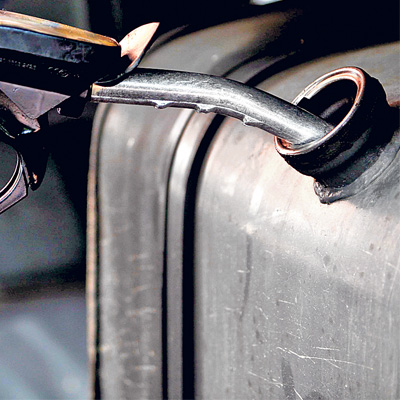
Oil prices fell in Asia today following an unexpected surge in United States stockpiles and reports that the OPEC oil cartel is unlikely to slash production when it meets in November. US benchmark West Texas Intermediate for October delivery dipped 55 cents to US $93.87 while Brent crude for November eased 51 cents to US $98.46 in mid-morning trade.
Prices were under pressure "after the US Department of Energy reported an unexpected increase of US crude inventories by 3.7 million barrels instead of the market forecast for a 1.2 million decline," said Singapore's United Overseas Bank (UOB) in a market commentary.
Gasoline stocks dropped 1.6 million barrels in the week to September 12, the data showed.
UOB said oil prices also took a hit after "conflicting reports" about the plans of the Organisation of the Petroleum Exporting Countries (OPEC) to cut its output in November due to a global supply glut and weak demand.
OPEC Secretary-General Abdullah El-Badri said Tuesday the cartel would cut output in November, which helped lift prices from a two-year low.
But a Dow Jones Newswires report yesterday, citing unnamed OPEC delegates, said the organisation was unlikely to cut in November.
A stronger dollar added downward pressure to oil, which is traded in dollars and becomes more costly for buyers using weaker currencies.
The greenback rose after the Federal Reserve stuck to its timetable on hiking interest rates but indicated they could eventually rise more sharply than initially envisaged.
Sanjeev Gupta, head of the Asia-Pacific oil and gas practice at consultancy EY, said investors will next be scrutinising manufacturing data out of China and Germany on Tuesday for clues about global demand.
If the economic data from these two countries are lower than forecast, oil prices "may head lower in the near term", said Gupta.
Sensex rises 200 points as Nifty crosses 8000; Jindal Steel, Hero Motocorp top gainers
Our Correspondent : 18 Sep 2014, Bhopal
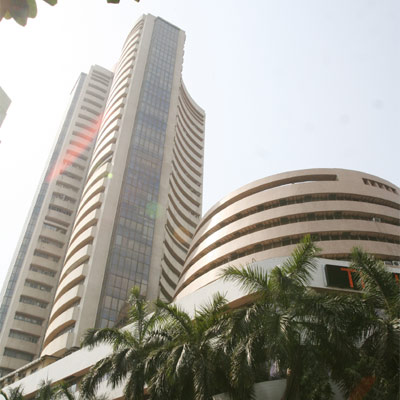
After yesterday's rebound, the benchmark BSE Sensex gained over 194 points in early trade today as funds and investors booked profits in recent outperformers amid a mixed trend overseas. The 30-share barometer, which had gained 138.78 points in the previous session, fell by 118.09 points, or 0.44%, to 26,513.20.
On similar lines, the broad-based National Stock Exchange index Nifty gained 57 points to touch 8032.
The big gainers in the early morning trade are PNB, Jindal Steel, Hero Motocorp, Bank of Baroda and Kotak Mahindra Bank. The big losers are Infosys, United Spirits and HUL.
Every index other than IT were in green.
Among other Asian markets, Hong Kong's Hang Seng fell by 0.67%, while Japan's Nikkei moved up by 0.93% in early trade. However, the US Dow Jones Industrial Average ended at fresh record high by rising 0.15% higher in yesterday's trade.
Federal Reserve renews zero rate pledge, but hints at steeper rate hike path
Our Correspondent : 18 Sep 2014, Bhopal

The Federal Reserve on Wednesday renewed its pledge to keep interest rates near zero for a "considerable time," but also indicated it could raise borrowing costs faster than expected when it starts moving.
Many economists and traders had expected the United States central bank to alter the rate guidance it has provided since March, given generally improving data on the economy's performance.
But the Fed repeated its assurance that rates would stay ultra-low for a "considerable time" after a bond-buying stimulus program ends. In a statement after a two-day meeting of its policy-setting Federal Open Market Committee, it announced a further $10 billion reduction in its monthly purchases, leaving the program on course to be shuttered next month.
The statement was virtually unchanged from July, though new quarterly projections released with it showed the central bank's view on where interest rates should be in future years is diverging from where financial markets have bet they will be.
"While the much analyzed phrase 'considerable time' remained in the FOMC statement, the newly announced scheme for interest rate normalization shows that higher rates are in the cards," said John Kilduff, a partner at Again Capital LLC in New York.
Dallas Federal Reserve Bank President Richard Fisher and Philadelphia Fed chief Charles Plosser dissented, arguing the guidance on rates could tie the central bank's hands if it felt it had to move more quickly to tighten monetary policy.
The Fed has held benchmark overnight rates near zero since December 2008 and has more than quadrupled its balance sheet to $4.4 trillion through a series of large-scale bond purchase programs.
In a further sign the central bank is in no rush to start raising rates, the FOMC repeated its assessment that a "significant" amount of slack remains in the U.S. labor market.
Stocks were little changed after the statement, but the dollar hit its highest level against the Japanese yen since September 2008. Yields on U.S. Treasury bonds rose to session highs as traders moved to price in the possibility of higher future rates.
The most significant change was the new rate projections, which suggested officials were positioning themselves for a potentially faster pace of rate hikes than they had envisioned when the last set of forecasts were released in June.
For the end of next year, the median projection was 1.375 percent, compared to 1.125 percent in June, while the end-2016 projection moved up to 2.875 percent from 2.50 percent. For 2017, the median stood at 3.75 percent - the level officials see as neither stimulative nor restrictive.
By contrast, December 2015 federal funds futures imply an interbank lending rate of 0.745 percent at the end of next year. Contracts for December 2016 point to a rate of 1.85 percent.
Eric Lascelles, chief economist for RBC Global Asset Management in Toronto, called the 2017 projections a "shocker."
"I would have thought it would take a few more years to get all the way up to what they perceive to be a neutral rate," he said.
Fed Chair Janet Yellen played down the shift in a news conference after the statement was released.
"I would say there is relatively little upward movement in the (federal funds rate) path," she told reporters. "I would view it as broadly in line with what one would expect with a very small downward reduction in the path for unemployment and a very slight upward change in the projection for inflation."
Raghuram Rajan says it is important to have FII debt limits
Our Correspondent : 17 Sep 2014, Bhopal
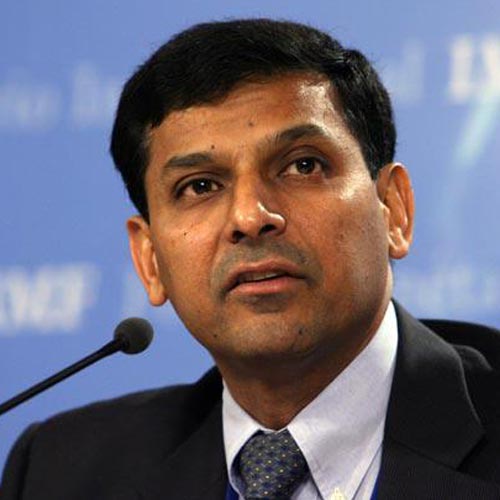
Cautioning about reliance on foreign flows, Reserve Bank Governor Raghuram Rajan today advocated for continuing with caps on overseas investments in debt."...we are limiting our reliance on foreign debt. It is important we keep it this way and manage the economy in way that is careful and that is circumspect," he said during an address at the 55th foundation day celebrations at the Somaiya Vidyavihar.
The Reserve Bank had in July raised the Foreign Institutional Investors' debt limit by USD 5 billion to USD 25 billion, after the investments started nearing the USD 20 billion threshold.
According to reports, the additional headroom is almost exhausted and FIIs' debt investments in the country are already nearing the USD 25 billion, leading to expectations that there might be an increase in the cap again.
Rajan said that the country has benefited from the foreign flows into the country, but advised caution, while dealing with such investments, which chase the best yields.
"We have to be careful about this money because if we say, 'this is wonderful, they all like us, we follow tremendous policies and that's why we got this money', and we go and spend, we run large current account deficits based on these foreign borrowings," he said.
"But this foreign borrowing cannot be taken for granted. At some point these investors will find greater usage of their money back home and they want to go out once again," he added.
Rajan, however, said that through various measures we have been successful in "substantially" containing the current account deficit ( CAD), which narrowed to 1.7 per cent in FY'14 from an all time high of 4.8 per cent in the previous fiscal.
Sensex rebounds 127 points in early trade on global cues; NMDC top gainer
Our Correspondent : 17 Sep 2014, Bhopal
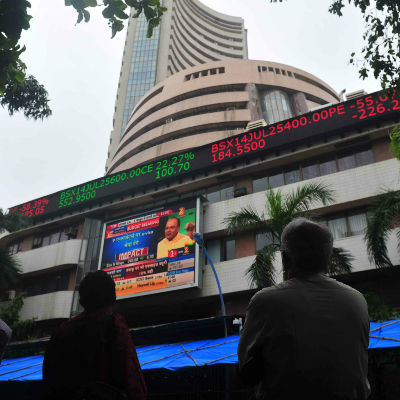
After two sessions of losses, the benchmark BSE Sensex recovered sharply by over 127 points in early trade today on emergence of buying by funds and retail investors amid a firming trend in other Asian markets.
The 30-share index, which had lost 568.53 points in the previous two sessions, rose by 127.37 points, or 0.48 per cent, to 26,619.88, with all sectoral indices, led by realty and metals, trading in positive zone with gains up to 1.37 per cent.
Also, the National Stock Exchange index Nifty gained 39.10 points, or 0.49 per cent, to 7,972. Brokers said a firming trend in the Asian region, tracking overnight gains in US markets boosted by speculation that the Fed is unlikely to start raising interest rates soon, influenced the sentiments here. Prominent gainers that supported the Sensex were Infosys, NMDC, TCS, Hindalco, HeroMotoCo, Mahindra and Mahindra, RIL, SBI and Sun Pharma.
The big losers are Jindal Steel, Cipla, BPCL, Sesa Sterlite.
Among other Asian markets, Hong Kong's Hang Seng was up by 1.01 per cent while Japan's Nikkei rose 0.23 per cent in early trade today. The US Dow Jones Industrial Average ended 0.59 per cent higher in yesterday's trade.
Lupin in deal to develop product portfolio for Merck
Our Correspondent : 17 Sep 2014, Bhopal

Agreement can add up to 20 new products to the current portfolio and will cater to 4-5 key therapeutic areas, Pharma major Lupin said it has entered into a long-term strategic partnership with Merck Serono, the biopharmaceutical division of Merck, for implementing the Germany-based company's general medicines portfolio expansion initiative in emerging markets. The company is also looking at expanding its presence in Russia, Turkey and China, though no definite plan is in place at the moment for the latter, said a senior company official.
Vinod Dhawan, group president, Asia Pacific, Africa, Middle East, & Latin America (AAMLA), Lupin told dna, "We have a good relationship with Merck Serno for sometime and we have earlier developed some products for them.
We have worked together for the last four years in markets like Brazil and Mexico and they are satisfied with us. So we thought of taking this relationship at the global level. This is a 10-year old agreement which can be renewed."
As per the agreement, Lupin will develop products, provide product dossiers and supply finished products to Merck Serono, which will then market the products, leveraging its strong commercial and medical teams in emerging markets to bring new medicines in its portfolio to customers, Lupin said in a press statement.
Lupin will receive upfront and milestone based licensing fee. However, both companies have agreed on not to release any financial details of the transaction.
Dhawan said, "We will explore some more product opportunities with them, but we are not looking at any more markets with them at the moment. As per the agreement, we can add up to 20 new products to the current portfolio but we can increase it as we go ahead. The agreement will cater to 4-5 key therapeutic areas, such as cardiovascular, diabetes, endocrinology etc." The first product launches are expected in 2016.
The partnership would cover major markets such as Brazil, Mexico, Indonesia, Philippines alongside several countries in Africa and Central Eastern Europe as well as other countries in emerging markets. Sales in the emerging market regions are one of the key growth drivers for Merck Serono, amounting to close to 1.8 billion euro in 2013.
Dhawan also said that Lupin is looking at strengthening its presence in Japan, Brazil, Russia, Turkey and China through acquisition or strategic partnerships. "In terms of geographical expansion, Brazil, Russia and Turkey where we are interested. We are closely examining China though we have no definite plan. We have a small presence in Russia and Turkey historically but those are large markets and we are examining ways that will allow us to have a larger critical mass so that we can develop much faster. But we are talking to a number of players. But we are definitely not looking at any big acquisitions."
"The kind of acquisitions that would make sense to us in most of these markets will ideally be between $50 million and $80 million of sales," he added.
Ranjit Kapadia, senior VP – pharma, Centrum Broking, said, "The deal will be beneficial to both companies. Lupin will be able to make more capacity utilisation and its per unit costs will come down. For Merck, it would be able to keep a low price for the product. Emerging market is price-sensitive market and Merck would be able to take advantage of Lupin's low cost manufacturing base in India. The effect of this partnership will start showing in 2016-17. But as per the upfront payment, Lupin should get some payment immediately depending on the kind of agreement it has entered. The other milestone payment will come as and when it will develop the dossiers."
Wockhardt chairman has no plans to sell its business
Our Correspondent : 16 Sep 2014, Bhopal
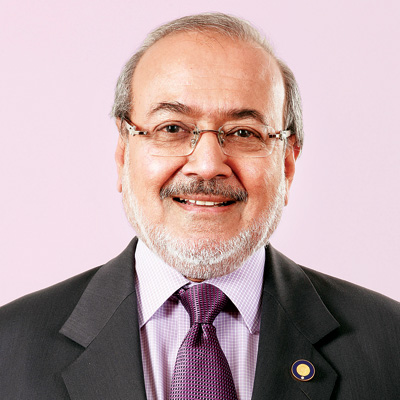
Wockhardt chairman Habil Khorakiwala, on Monday, said the company has no intention of selling its business. The statement comes at a point when various news reports had suggested that the company may sell off some of its assets. Some of the names which were rumoured as potential buyers to buy the assets are Mylan, Pfizer, Teva and even the home-grown Lupin.
"I don't see why do I sell any part of my business ever. We have a good R&D in place and also there are very nice product related opportunities. Besides, my succession plan is in place. So, why would I be selling any part of my business ever," Khorakiwala told reporters on the sidelines of the company's annual general meeting.
According to a report by Bloomberg last month, Lupin, the second-largest drugmaker by market value in India, studied Wockhardt as a potential acquisition candidate, although it hasn't met the company's management and did not hold any talks. Earlier, there were reports that the Mumbai-based drugmaker Wockhardt was in talks with global multinationals to sell off some of its assets.
The company is recently facing import alerts at two of its facilities in India namely Waluj and Chikalthana in Aurangabad. Last year, United Kingdom Medicines and Healthcare products Regulatory Agency (UK MHRA) withdrew its quality certification to the Chikalthana unit. The MHRA has visited the facility recently and a response from them is expected in sometime soon.
"By and large we have not received any critical observation from the MHRA. Other observations are there and we are correcting it. We will hope to get their responses in the next few quarters," said Khorakiwala.
Talking about its R&D spends, the company said it is currently at 10% of its total revenue. "Irrespective of my revenue, my R&D will go up. At present it is 10% and it will remain more or less in the double digit for the next three years," the chairman added.
Bankers taking too long to recognise frauds, says RBI governor Raghuram Rajan
Our Correspondent : 16 Sep 2014, Bhopal
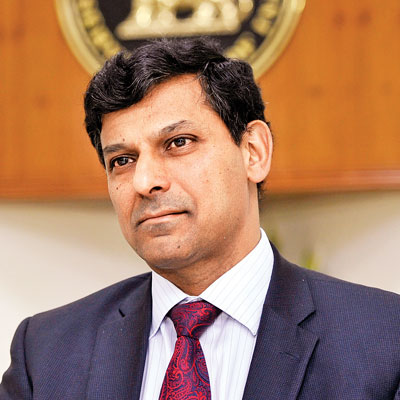
Reserve Bank of India (RBI) governor Raghuram Rajan on Monday said bad economy, poor structuring and slowdown in the government is leading to creation of bad loans.Speaking at the Federation of Indian Chambers of Commerce and Industry-Indian Banks Association banking seminar on Monday, he said allegations of malfeasance like Syndicate Bank cases are impacting the accretion of bad loans in the system.
"I fear that banks are taking too long to recognise frauds in the banking system. There are lots of good people in public sector banks, but need to root out the bad apples, bad practices and weak capabilities. There is a significant rise in NPAs in large projects. Let's not hide the problem, we have given a lot of forbearance to large projects," Rajan said.
Some of the big NPAs in the recent past were Zoom Developers, Winsome Diamonds, Deccan Chronicle and Mahua TV, all of which were discovered after the loot was complete.
"Many sectors in the economy get too little credit. Solution is to develop the financial framework across the board. Should a student loan to study abroad come the under priority sector?," Rajan asked, touching upon the issue of distortion in loan pricing.
Certain sectors of economy like agriculture need credit. Select special sectors need ease of credit; the biggest need for agriculture is long-term money while farmers do not get long-term loans because short -term loans are subsidised, he said.
Interest subventions and loan waivers schemes, Rajan said, would distort prices and lead to unhealthy borrowing practices.
Arundhati Bhattacharya, chairman, State Bank of India, said, "Immediately after a loan waiver scheme the agriculture credit from the banks go down as bankers expect farmers to default expecting another loan waiver. It kills the discipline that the borrowers need to have while borrowing from the banks."
Banks have to direct 40% of the total credit to the priority sector, which includes agriculture, education, rural housing, micro and small sector enterprises.
Rajan cautioned banks on duplication of accounts under the Pradhan Mantri Dhan Yojna, which he said is an internal priority as it would help in direct benefit transfers that will reduce leakage.
He said it was time that the government deregulated diesel prices in the wake of falling global crude oil prices. The fall in inflation has been consistent with RBI's forecast.
It is not just food prices that is keeping inflation high. A whole host of services like medical services, education, travel, hotel and other products are expensive, according to RBI governor.
"The industry therefore should to cut prices to bring down inflation. But will they do it?" he asked.
"I don't want to keep interest rates high. We will bring down interest rates when it is feasible. Right now, inflation is high and the priority is to bring it down, so that growth can revive. We don't have to wait till inflation is down to bring down prices, but we need to be certain that inflation is coming down before interest rates soften," Rajan said.
Sensex slips below 27,000 level
Our Correspondent : 15 Sep 2014, Bhopal
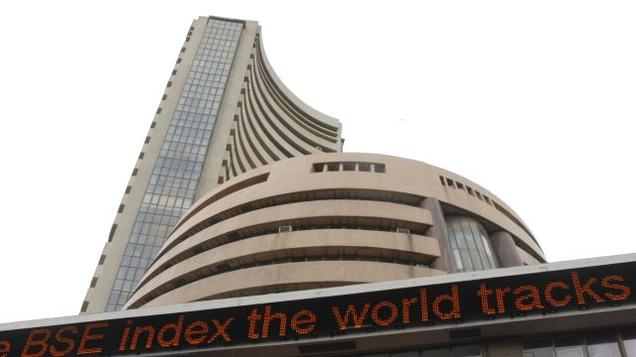
The benchmark BSE Sensex tumbled over 185 points to dip below the 27,000-mark in early trade on Monday on selling by funds and retail investors after industrial production growth slowed to 0.5 per cent in July amid a weak trend in the Asian region.
The 30-share barometer slipped below the 27,000-mark by falling 185.55 points, or 0.69 per cent, to 26,875.49 with metal, FMCG, power, capital goods and IT stocks leading the fall.
The index had gained 65.17 points in the previous session on Friday.
On similar lines, the National Stock Exchange index (Nifty) moved down by 70.95 points, or 0.88 per cent, to trade below the 8,100-mark at 8,034.55.
In the metal sector, stocks of Tata Steel fell 2.19 per cent, Sesa Sterlite shed 1.33 per cent and Hindalco lost 2.43 per cent in early trade.
Brokers said selling activity emerged largely on disappointing economic data as the country’s industrial production growth slowed to 4-month low of 0.5 per cent in July but easing retail inflation to 7.8 per cent in August from 7.96 per cent in July, restricted the fall.
Besides, a weak trend on other Asian bourses after data showing Chinese industrial output expanded in August at its slowest rate since the global financial crisis, influenced the sentiments, they said.
Among other Asian markets, Hong Kong’s Hang Seng index was down by 0.75 per cent in early trade, while Japan’s financial markets are closed on Monday for a public holiday.
Timely subsidy payments put oil marketing companies on profit path
Our Correspondent : 15 Sep 2014, Bhopal

State-owned oil marketing companies (OMCs) are on a high as timely subsidy payments by the government and reduction in diesel under-recovery over last few months have helped them reduce dependence on lenders.
The increase in cash flows has led to huge drop in borrowing and interest costs of the three fuel retailers -- Indian Oil Corp, Hindustan Petroleum Corp and Bharat Petroleum Corp.
However, competition from private players like Reliance Industries and Essar Oil, following imminent diesel Deregulation, may keep them on their toes. In the last two years, delay in cash subsidy payments by the government had forced OMCs to increase their short-term borrowings to meet working capital requirement, impacting their profitability.
Cash compensation from the government has started coming every 2.5-3 months now in comparison with six months earlier, helping fuel marketers to save up on interest costs. IOC's borrowings have sharply fallen to Rs 61,900 crore from Rs 86,263 crore in March, chief financial officer P K Goyal had said during the company's annual general meeting last month.
Goyal said fall in under-recoveries and regular subsidy payments by the government's since the beginning of this fiscal has helped the company to bring down borrowings, which would help the company's profitability in current fiscal.
Diesel under-recovery in the last fortnight fell to 8 paise, indicating that the government may soon make announcement of complete deregulation of diesel. OMCs are expecting further reduction in borrowings on complete deregulation and subsidy payment by government.
brokerage Motilal Oswal Securities sees 50% reduction in gross under recoveries to Rs 75,000 crore by fiscal 2016 if the government announces complete deregulation of diesel next month. A realistic kerosene/LPG hike could cut under-recovery by 70%, it said.
"We estimate OMCs' debt to reduce by 15-25% in the next one year, leading to 8-16% earnings per share benefit, with HPCL at 16%, followed by BPCL at 9% and IOCL at 8%," it said. Interest costs of OMCs could come down by as much as Rs 2,000 crore in current and next fiscals, which would improve IOC's profitability by Rs 700 crore, HPCL by Rs 300 crore, and BPCL by Rs 300 crores, GAGAN Dixit, an analyst with Quant Capital, said.
Complete diesel deregulation will not only help OMCs to reduce interest burden but also improve their marketing margins, which was fixed by the government in 2006. Despite cost increases of 8-10%, OMCs got only around 4% of annual escalation. Post deregulation, OMCs are expected to charge higher marketing margins. Post petrol deregulation, OMCs had seen rise in marketing margin from Rs 0.7/litre in fiscal 2011 to Rs 1.3/litre in fiscal 2015. Also, the current marketing margin in diesel in India at Rs 1.4/litre, which is way below the global averages, indicating further room for improvement.
"Likely higher marketing margins on auto fuels (Rs 0.5/litre higher diesel marketing margin will increase OMCs' profit before tax by Rs 4,000 crore," Motilal Oswal said. Brokerages believe that gain in marketing margins will also help OMCs to negate any fall in market share of diesel which may happen due to private players come back in diesel retail post deregulation. Currently, PSU OMCs together have about 42,000 retail outlets. Non-PSU players, including RIL, Essar Oil and Shell, have about 3,000 retail outlets, of which a very few are currently operational.
"Private players can capture around 10% market share over next two years, which could impact OMCs profitability very marginally," Dixit said. In the previous period of brief deregulation (FY04-07), private players' market share had reached 5% in gasoline and 10% in diesel. However, this time around, the journey may not be as smooth for private players, given that over the last decade OMCs have doubled retail outlets, modernised outlets to ensure purity and improved customer engagement, and have brought automation through real-time tracking and better inventory management, Motilal Oswal report said.
Banks mop up Rs 1,500 crore under Jan Dhan scheme
Our Correspondent : 13 Sep 2014, Bhopal
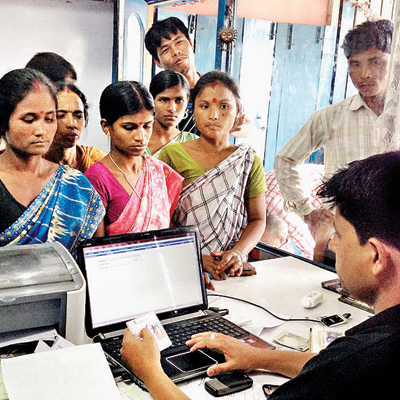
Finance ministry sees banks adding Rs 5,000 to CASA deposits via the new accounts by next year; govt plans household survey banks have garnered deposits of Rs 1,500 crore in zero balance accounts opened under the Pradhan Mantri Jan Dhan Yojana (PMJDY) scheme within two weeks of the launch of the scheme.
Finance Ministry feels at this rate the total current and savings accounts (CASA) deposits of the banks may cross Rs 5,000 crore by January 26 next year.
The Government is planning a house to house survey by October 15 to ensure that no household is left untouched by the scheme. A total of 3,02,48,406 accounts have been opened under the scheme.
A senior finance ministry official said, "Banks have got total deposits of Rs 1,500 crore. We hope that the amount of the deposit will surpass Rs 5,000 crore by January 26. The amount accounts for 20% of the accounts opened till date. Almost 80% of the account are still zero balance. We are encouraging people to deposit money in the account and use the RuPay debit card."
To encourage the use of the debit card and the account, the government plans to increase the number of the rural ATMs, and use kirana and public distribution system counters as point of sales. The Reserve Bank of India has also created a fund for the expanding rural ATM network.
Meanwhile, the maximum number of accounts at about 40 lakh under the scheme has been opened in Uttar Pradesh. Trailing UP is West Bengal (22 lakh), Madhya Pradesh (17 lakh), Maharashtra (16.5 lakh), Tamil Nadu (16.4 lakh).
Lured by the announced incentives, many existing account holders have also opened a new account under PMJDY. Publicity is being given that the benefits announced under PMJDY can be extended to the existing account holders in their previous accounts as well and new account need not be opened for this.
Under the scheme, those who are poor and do not have a bank account will be able to open a zero-balance bank account, which will be kept alive even if it is not operated. Along with the account, the holder will get a debit card, mediclaim worth Rs 30,000 and accidental insurance coverage of Rs 1 lakh. A good customer will also become eligible for an overdraft facility of up to Rs 5,000 after six months.
Counting on growing no of babies, Cordlife sees opportunities here
Our Correspondent : 13 Sep 2014, Bhopal
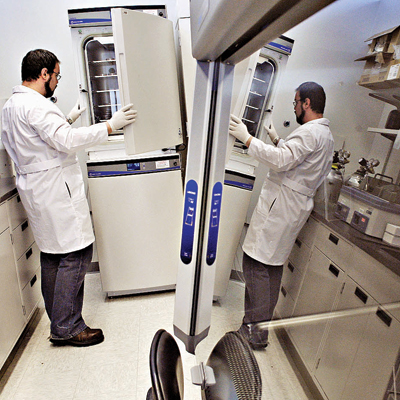
Witnessed 50% volume growth and about 80% in value terms in India last year; Invested closed to Rs 72 crore so far Burgeoning middle class with growing aspirations and awareness for pre-emptive healthcare, Cordlife Group of India is now literally coming out of mother's womb.
The Singapore Stock Exchange listed operator of Asia Pacific's largest network of umbilical cord and stem cell banks is yet to take off in a big way in India since it started operations in 2009.
But things are set to change now, as after a prolonged period of educating authorities as well as public about the need to preserve cord blood and tissues for future healthcare need, Cordlife is now gearing up for expanding its customer base.
"We are bullish about India, Philippines and Indonesia. With Narendra Modi taking over, we expect economic environment to change. All these countries have high young population with burgeoning middle class, which you can't change. In India we have witnessed growth of 50% by volume and about 80% in value terms last year," Jeremy Yee, group CEO of Cordlife told dna.
A Deloitte Report says the 2007–2011 CAGR of annual incremental storage units for private cord blood banks were at 38% for Indonesia and 35% for Philippines and India, respectively. Now, a new study is coming up and Yee expects the projected figure to rise faster.
The downside of bringing something new, particularly in healthcare, means one need to invest in Education and awareness and keep patience.
""We are here in India since 2006 but got our licence in 2009. It took us three years to get our licences after making the Indian authorities understand what we intend to do and what are the acceptable global quality standards for the service we provide," Yee said during his visit to Cordlife's India facility based in Kolkata.
In India, Cordlife has invested close to Singapore $10-15 million (up to Rs 72 crore) and owns 85% of Cordlife Sciences (India) Pvt Ltd that operates a facility which can cryogenically store up to 150,000 cord blood units.
With storage charges beginning from Rs 40,000 and touching up to about Rs 75,000 for a 21 year period, a price which Yee compares with cost of a iPhone, the upside is the opportunities that he is staring at.
In US, currently there are about 600 clinical trials registered under food and drug administration happening using stem cell. "And with 26 million babies being born in India every year, we are here for good," Yee said.
Sensex recovers 53 points in ahead of IIP, inflation data
Our Correspondent : 13 Sep 2014, Bhopal
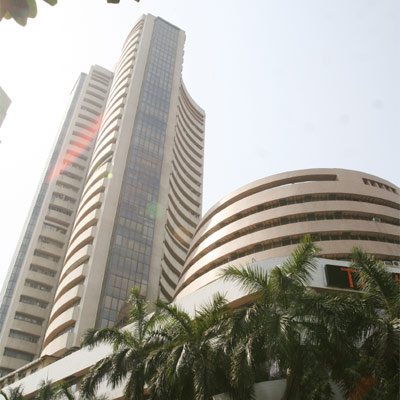
The benchmark BSE Sensex today regained the 27,000-mark by rising over 53 points in early trade, snapping its three-session falling streak, as participants made selective buying ahead of the industrial output data for July and retail inflation numbers for August.
Stocks of consumer durables, PSU, IT, infrastructure and FMCG sectors led the recovery. The 30-share index gained 53.27 points, or 0.20%, to trade above the 27,000-level at 27,049.14. It had lost nearly 324 points in the past three sessions. The National Stock Exchange Nifty moved up by 12.50 points, or 0.15%, to 8,098.20. Brokers said fresh buying by speculators and funds ahead of industrial production (IIP) data for July and inflation for August, to be released later in the day, contributed to the rise.
Besides, a mixed trend in other Asian markets influenced trading sentiments here, they said. Among other Asian markets, Hong Kong's Hang Seng was down 0.36% while Japan's Nikkei rose 0.39% in early trade today. The US Dow Jones Industrial Average ended 0.12% lower in yesterday's trade.
Rupee recovers from initial losses, up 2 paise to 60.91 vs US Dollar
Our Correspondent : 13 Sep 2014, Bhopal
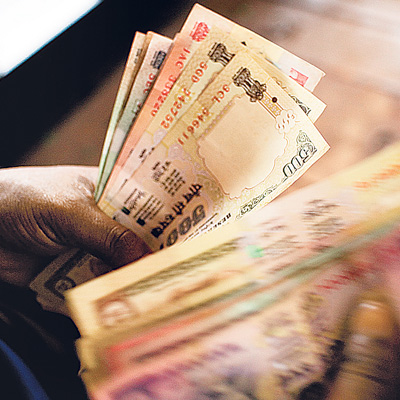
The Rupee pared its initial losses to recover by two paise to 60.91 per Dollar in late morning deals today following bouts of selling of the greenback by banks and exporters.
The domestic unit resumed lower at 60.97 per dollar as against the last closing level of 60.93 at the Interbank Foreign Exchange (Forex) Market. It declined further to 61.02 on heavy bouts of dollar demand from importers. Later, it was quoting at 60.91 per dollar at 1030 hrs. The rupee was hovering in a range of 61.02 and 60.91 per dollar in late morning deals.
crude oil prices fell in Asian trade after International Energy Agency slashed its forecast for world crude demand this year and as dealers await key US economic data.
In New York market, the dollar hovered below a 14-month peak against its major rivals in early trade as the sell-off in sterling and the euro tapered off.
Meanwhile, the benchmark BSE Sensex was trading flat, marginally lower by 4.90 points, or 0.02%, at 26,990.76 at 1040 hours.
August retail inflation eases to 7.8% on cheap veggies, fuel cost
Our Correspondent : 13 Sep 2014, Bhopal

Easing prices of vegetables, cereals and Petroleum products brought down retail inflation marginally to 7.8 % in August.Consumer Price Index (CPI) based or retail inflation stood at 7.96 % in July. In August 2013, retail inflation was at 9.52 %.However, food inflation during the month under review rose to 9.42 % over 9.36 % in July, an official release said today.The rate of price rise in vegetables stood at 15.15 % in August as against 16.88 % in the previous month.
Rate of price increase in cereals and its products turned lower at 7.39 % and that for fuel and light it came down at 4.15 %.
However, prices of fruits during the month went up with 24.27 % rate of inflation.Inflation in milk and milk products increased to 11.70 % during the month under review. Also, pulses and its products were costlier at 6.88 %.Amongst others, food and beverages witnessed no change in price rise at 9.16 %, while non-alcoholic beverages prices went down at 6.24 % in August.
Eggs, fish and meat were costlier at 7.71 % during the month.
Inflation in rural and urban areas in August was 8.35 % and 7.04 %, respectively. In July, it was 8.37 % and 7.42 %.
The Reserve Bank will unveil its fourth bi-monthly monetary policy statement on September 30, 2014.
In its last policy statement in August, RBI had kept key interest rates unchanged--third time in row -- in view of the inflationary expectations and uncertain monsoon conditions.
Oil slumps to two-year low on IEA demand downgrade
Our Correspondent : 12 Sep 2014, Bhopal
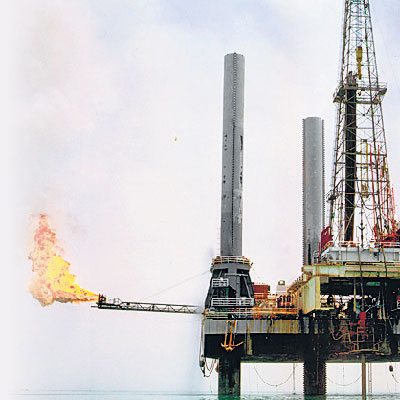
Global Oil Prices hit a two-year low today after the International Energy Agency cut its forecasts for world demand, with the market also weighed down by plentiful supplies, analysts said.
In earlier London trade, Brent North Sea crude for October sank to USD 96.72 per barrel -- the lowest point since July 2, 2012. And US benchmark West Texas Intermediate (WTI) for October delivery slid to USD 90.43 -- a level last seen on May 1, 2013. " oil prices were lower again on ample supply and soft global demand," said CMC Markets analyst Jasper Lawler.
Brent oil later stood at USD 97.48, down 56 cents from Wednesday's close, while WTI rebounded slightly to USD 91.91, up 24 cents. The market has forged a series of multi-month lows this week on the back of abundant global crude supplies and gloomy demand growth forecasts.
Prices plumbed the latest troughs today after the Paris-based IEA, which advises on energy policy to industrialised nations, cut its global oil demand outlook, citing weaker economic growth in both Europe and China. The IEA trimmed its estimate for oil demand this year to growth of 1.0 percent, or 900,000 barrels per day (bpd), from a previous estimate of 1.1 per cent or 1.0 million bpd. That takes total demand for the year to 92.6 million bdp. The news followed broadly similar demand forecast downgrades this week from both the US government's Energy Information Administration (EIA) and the Organization of the Petroleum Exporting Countries (OPEC). "Oil demand growth (is) slowing at 'remarkable' pace, the International Energy Agency has said in its monthly report today," said Ole Hansen, head of commodity strategy at Saxo Bank. "This the final of monthly reports from the big three... (on) same theme as what has been said by the EIA and OPEC this week."
Falling oil prices have sparked market speculation that crude producer group OPEC could call an emergency meeting to halt the slide. However, cartel member Kuwait said today there was no need to call such a meeting. "So far, we are confident that prices have not dropped to the extent that makes us call for an emergency meeting," Oil Minister Ali al-Omair told reporters.
Sun tanks 6% as Halol unit comes under cloud
Our Correspondent : 12 Sep 2014, Bhopal

Shares of Sun Pharmaceutical Industries dropped over 4% on Thursday on unconfirmed reports that the US Food and Drug Administration (FDA) made a surprise inspection at its manufacturing facility at Halol in Gujarat.
The scrip opened at Rs 853 on the BSE on Thursday, fell 6% intra-day to Rs 808 before recovering to Rs 822.80 at the close, down 4.29% over the previous close.
According to industry sources, an increased number of drug recalls from the Halol plant is seen as the reason behind the surprise inspection by FDA. A Sun Pharma spokesperson, however, declined to comment to an email query sent by dna.
In the last few months, Sun Pharma recalled a little over 2.9 lakh bottles of Venlafaxine Hydrochloride extended-release tablets. The product is manufactured at its Halol facility. It has also recalled 200 vials of Gemcitabine due to lack of sterility assurance. In another update on its website, FDA said Sun Pharma has recalled over 4.5 lakh bottles of Cephalexin Capsules of strength 250 mg and 500 mg. These products were recalled because they were manufactured with active pharmaceutical ingredients (APIs) that were not manufactured with good manufacturing practices.
Earlier this year, the company also recalled 2,528 bottles of Metformin Hcl-extended release tablets because of packaging problem as a foreign tablet was found by a customer in a Metformin bottle. It also recalled over 1.7 lakh Cetirizine Hydrochloride chewable tablets (including Children's Cetirizine) due to failed impurities/degradation specifications.
Ranjit Kapadia, senior VP – pharma, Centrum Broking, said, "The Halol facility contributes to about 15-20% of the US sales. With the FDA now having an office in India, these surprise visits are nothing unusual. So it is too premature to comment on this issue."
He, however, said the increasing number of recalls by Sun Pharma possibly prompted US FDA to do a surprise audit on the Halol unit. The company's Karkhadi facility in Gujarat was issued a warning letter early this year for not maintaining good manufacturing practices.
Kapadia said while the recent recalls are on various grounds, they all finally leads to the current good manufacturing practice (CGMP) issue. If some major deviations in observations were found, US FDA is likely to issue a Form 483 immediately. The company will have to then respond within 15 days of receiving the letter.
Results of the ongoing inspection at Sun Pharma's Halol plant would be significant given its importance to the companies US revenues as well as for its overall performance, feels Sarabjit Kour Nangra, VP-research (pharma), Angel broking.
"During 2013-14, the US business accounted 60% of the overall sales of the company (Rs 16,000 crore). Going forward, after the merger with Ranbaxy Labs, its dependence on the region would reduce to around 45% of the expected sales in fiscal 2016. Thus the share of the plant in the overall sales would reduce, going forward (expected to be around 10% of sales in fiscal 2016)," she said. "Profitability could be impacted, given low profitability of Ranbaxy Labs, in case of an adverse implication, though it is too early to call given that company has voluntary done some withdrawal and given the importance of the facility. In case of any adverse impact, the company could witness a dip of around 15% from these levels," said Nangra.
Sun Pharma in April announced its intent to acquire Ranbaxy Labs from its present owner Daiichi Sankyo. Ranbaxy is facing import ban from FDA on four of its plants in India.
Rupee to stabilise at 60 versus $ on growth push, euro bond buying
Our Correspondent : 12 Sep 2014, Bhopal
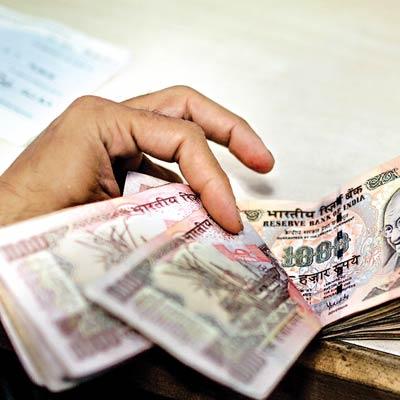
Higher growth in India, lower Fiscal deficit and the quantitative easing from the Eurozone is expected to keep the rupee stable and retain its level at Rs 60-61 to the US dollar. The rupee closed at Rs 60.92 per dollar on Thursday, marginally stronger than the previous day's close of Rs 60.94.
With Emerging market peers like the Chinese growth sagging and falling commodity prices impacting Brazil, India in comparison is much better placed, according to forex experts. But the market remains worried about the impact of interest rate reversals by the Fed earlier than expected
Ananth Narayan, head, financial markets, Standard Chartered bank, said, "The rupee continues to be stable with the domestic growth rate improving and the fiscal deficit under check. Foreign investors' investment into India also looks encouraging. US is unlikely to reverse interest rate abruptly, and the Fed meeting next week is also expected to be routine and no major decisions are expected to be taken."
The US quantitative easing, which is coming to an end in October, has reduced with the US Fed buying bonds worth just $15 billion dollar a month. It is expected that the Fed may not abruptly reverse interest rates despite the US GDP growth at 4.1% as the unemployment came higher than consensus at 6.1%.
Harihar Krishnamoorthy, treasurer at First Rand, said, "The US is unlikely to reverse interest rates in a hurry as the unemployment rates are still high despite growth picking up. The growth rate in China is also slipping with commodity prices in Brazil also looking vulnerable, which is encouraging for India as global investors will continue to be bullish about investments into India."
Exporters are coming back to the market which resulted in some consolidation in the rupee after it fell over 1 % marking the biggest two day loss since declining 1.8% from July to August 2014.
The market is looking forward to the federal reserve's monetary policy next week. A hawkish stand is likely to impact asset prices in emerging markets as the QE measures has resulted in higher asset prices in emerging markets. Foreign funds have bought a net $32.60 billion worth of debt and shares during the calendar year, according to Sebi data.
A report by Mecklai Financial said the US stocks were up on Wednesday driven up by technology stocks and rising expectations of an early interest rate rise in the US. "The market will look to the US retail sales and the consumer confidence number due at the end of the week to confirm the strong growth trend. Investors expect that the Fed is likely to, at the least, change its language on growth and interest rates at its meeting which is to happen on September 17-18," said the report.
Will Brand Apple pull huge premium for the new iPhones?
Our Correspondent : 12 Sep 2014, Bhopal

Apple Inc's much-awaited iPhone 6 may not have an immediate or major impact on company's market share in India, experts said.Premium pricing and not-so-relevant applications may find limited takers for the iPhone 6 in the country, they said.
According to company's India website, Apple's new large-screen phones – iPhone 6 and iPhone 6 Plus – will be available in India from October 17 and the new smartwatches only next year.
"Price-point is something that is killing the brand right now. They need to understand that they cannot offer same set of features at such premium price point. It will be difficult for them to justify the price. The latest example is the tremendous response to Xiaomi, which shows that buyers today are not really brand specific but more driven by price and features that a product offers," said Binoy CS, director telecom practice, Frost & Sullivan.
Apple, known for its innovations, has joined the competition for bigger screen phones late.
The two new phones are Apple's entry into the larger than 4 inches, aimed at challenging competitors like Samsung.
The company is yet to unveil the Indian prices for the 4.7-inch iPhone 6 and the 5.5-inch iPhone 6 Plus. If market buzz is to be believed, the new iPhones will come with premium pricing in India, making them one of the most expensive models by the company.
"Indian market, which is more Android dominated, is unlikely to find major excitement among the buyers, other than the Apple loyalists. Till now Apple has lived by its own rules but now competition seems to be clouding its decision making. The package is certainly not good enough to make an Android user want to make the switch to the iOS bandwagon," said an expert.
Experts said the features and applications Apple unveiled are little futuristic for the Indian market and will take time for find takers here. Things like mobile payment, health applications are little advance for Indian consumers, said experts.
Brand ambassadors galore
Zydus Wellness Ltd will unveil the Everyuth naturals Advanced Tulsi turmeric, which will be a Re 1 sachet and to be launched by Bollywood actor – Nargis Fakhri. The company will also launch 'Donate your calories to help nourish children' campaign for its brand Sugar Free. The event will see participation of Akshay Kumar – Bollywood superstar and chef sanjeev kapoor. The campaign talks about saving the unwanted calories and adopt a fitter lifestyle.
Sterling rebounds on Scotland poll results; dollar, oil, slip
Our Correspondent : 12 Sep 2014, Bhopal
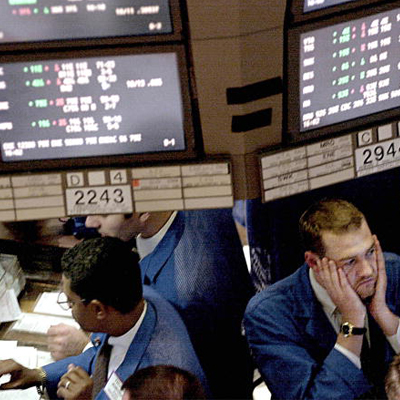
Sterling rose from 10-month lows on Thursday after a poll reduced some fears of Scotland leaving the United Kingdom, which briefly provided support for global equity prices before their gains faded.
A poll conducted by Survation on behalf of the Daily Record newspaper showed 53 percent of Scots intend to vote against independence while 47 percent intends to vote for. That contrasted with polls earlier this week showing more Scottish voters were leaning towards a secession.
The Daily Record poll "proved the catalyst for a correction to recent sterling weakness," said Kit Juckes, macro strategist at Societe Generale in London.
The dollar slipped against a basket of currencies but was still close to a 14-month high as traders anticipated signs from the federal reserve next week that it is moving closer to raising interest rates next year.
The greenback's strength reduced the appeal of gold, sending bullion prices to a 7-1/2 month low.
Oil prices in London fell to a two-year low on rising supply and muted demand, which outweighed concerns over growing United States involvement in Iraq and Syria.
United States Secretary of State John Kerry pressed Arab leaders on Thursday to support President Barack Obama's plans for new strikes against Islamic State militants.
Worries about escalation in the Middle East renewed some safe-haven demand for United States government bonds, pushing benchmark yields down from six-week highs. United States bond yields had risen partly on a study from the San Francisco Fed released Monday that showed investors underestimated the pace at which the Fed might raise rates.
A surprise rise in United States jobless claims also revived bids for Treasuries and spurred profit-taking on Wall Street.
In early trading, the Dow Jones industrial average was down 34 points, or 0.2 percent, to 17,034.71, the S&P 500 was down 2.53 points, or 0.13 percent, to 1,993.16 and the Nasdaq Composite lost 5.23 points, or 0.11 percent, to 4,581.30.
The FTSEurofirst 300 index of top European shares was down 0.2 percent at 1,383.23 points, erasing an earlier 0.2 percent gain. Tokyo's Nikkei ended 0.8 percent higher.
The MSCI world equity index, which tracks shares in 45 nations, fell 0.62 points or 0.14 percent, to 427.54.
Benchmark 10-year Treasuries yields slipped nearly 1 basis point to 2.527 percent, while the 10-year German Bund yield was little changed on the day at 1 percent.
In the currency market, the sterling clung to a 0.06 percent gain against the dollar at $1.6221 after falling to a 10-month low of $1.6052 on Wednesday.
The dollar index, which tracks the greenback versus a basket of six currencies, fell 0.083 point or 0.1 percent, to 84.2 after reaching a 14-month high of 84.5 two days earlier. The dollar earlier Thursday reached a six-year high against the yen at 107.15 yen.
The dollar's strength bogged down spot gold prices to $1,234.71 an ounce, the lowest since late January.
Brent Crude for October delivery was last down 76 cents or 0.78 percent at $97.28 a barrel. United States crude was last up 26 cents or 0.28 percent at $91.93 per barrel.
Starting with Rapid, Skoda to localise cars for India
Our Correspondent : 11 Sep 2014, Bhopal

Czech auto maker Skoda is looking at bringing down the Development cost of cars in India and make more localised products to boost volumes. Skoda has not been able to achieve larger volumes in India due to lack of new products, premium pricing and perception issue.
As per the data by Society of Indian Automobile Manufacturers, the company sold 5,692 units in April-August this year, a decline of 32.78% compared with the same period last year.
The company is now realigning strategies to cater to larger customer base in the Country.
As part of the plan, Skoda Auto India, the company's local unit, is in the process of bringing down the manufacturing costs of its sedan Rapid, which will bring in better margins for the company and better pricing for the customers.
According to the company officials, the new Indian-version of Rapid is expected to hit the market in the next two years and if the strategy works, it will be replicated for company's future products as well.
"We are working on project Rapid, which is about bringing the costs down. However, we will not compromise on the quality and content on our cars," said Sudhir Rao, managing director for Skoda Auto India.
This is the time that the company is adopting such a strategy in the country.
"Currently, our development costs are very high and everything is developed in Europe. With this, the pricing of Rapid may also come down," said a company official.
Without elaborating much on the new product launches, Skoda said it does not have any plan of launching the European Fabia, which was unveiled last month.
Rao said, "This does not mean that we would not launch Fabia in India. Learnings from our Rapid project can be replicated for Fabia. However, it will take more than two years."
Puneet Gupta, associate director, IHS Automotive Sales Forecasting, said, "The strategy may work well for Skoda. Honda for example, was also considered as a value premium brand. But the company now has products in the A and B segments."
Meanwhile, the company launched its new Yeti in Mumbai on Wednesday at Rs 18.63 lakh (ex showroom Maharashtra).
The company also said that it is working on revamping its entire dealer network, which will take one year for implementation.
"The complete network will get a make over under Corporate Design Corporate Identity programme, we realised that our facilities became little outdated, so we have come up with a completely new concept, we are in the last phase of finalising of implementation things here in India, and starting next year we will go through a big change in our workshops," said Pawel Szuflak, director sales & marketing, Skoda Auto India.
Sensex up 87 points in early trade on govt\'s disinvestment move
Our Correspondent : 11 Sep 2014, Bhopal
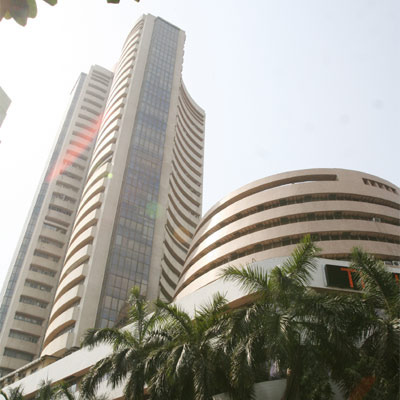
The benchmark BSE Sensex today rose over 87 points in early trade after two sessions of losses on fresh round of buying as the government yesterday approved the sale of shares in Coal India, ONGC and NHPC to garner a combined Rs 43,000 crore.
Besides, a firming Asian cues supported the recovery in the domestic markets here. The 30-share barometer recovered by 87.77 points, or 0.32 %, to 27,145.18 as power, banking, infrastructure and capital goods sector stocks led gains. The index had lost 262.44 points in the previous two sessions. On similar lines, the wide-based National stock exchange index Nifty edged higher by 30.40 points, or 0.38 %, to 8,124.50.
Brokers said apart from fresh buying by participants after the government cleared stake sale in Coal India, ONGC and NHPC, a firming trend on other Asian bourses following overnight gains on US market helped trading sentiment to improve.
The CCEA has cleared 10 % stake dilution in CIL, 5 % in ONGC and 11.36 % in NHPC through the Offer For Sale (OFS) route. In the Asian region, Japan's Nikkei was up by 0.60 %, while Hong Kong's Hang Seng index rose 0.09 % in early trade today. T
he US Dow Jones Industrial Average rose 0.32 % in yesterday's trade.
Rupee recovers 11 paise against dollar in early trade on September 11
Our Correspondent : 11 Sep 2014, Bhopal

The Rupee recovered by 11 paise to trade at 60.84 against the US Dollar in early trade today on selling of the American currency by banks and exporters.
Besides, a higher opening in the domestic equity market also supported the local currency but dollar's gains against other currencies overseas capped the gains, forex dealers said.
Yesterday, the rupee had lost 35 paise to close at a four-week low of 60.95 after dipping below 61-mark against the American currency on growing concern that US hiking interest rates sooner-than-expected will hit inflows. The rupee had depreciated by over one per cent in the past two days.
Meanwhile, the benchmark BSE Sensex recovered by 87.77 points, or 0.32%, to trade at 27,145.18 in early trade today.
Debarring defaulters from banks unconstitutional, says Gujarat High Court
Our Correspondent : 11 Sep 2014, Bhopal

Gujarat HC rules the RBI's 'master circular', signed by an official in the rank of chief general manager has no power, authority and any standing In what could be a major blow to the 17-member consortium of banks trying to recover over Rs 8,000 crore loans doled out to Vijay Mallya promoted Kingfisher Airlines, the Gujarat High Court in a sweeping judgment on Tuesday termed the definition of 'wilful defaulter' and debarring access to loans from any financial institutions 'ultra vires'.
The RBI's 'master circular', signed by an official in the rank of chief general manager has no power, authority and any standing under Sections 21 and 35A of the Banking Regulation Act, 1949, the judgment noted.
"The judgment opens up a debate on defining the role of a company director versus that of entrepreneurs or promoters and Vijay Mallya will surely take cover under the law," said a legal expert.
The judgment said the circular was against the RBI Act or the Banking Regulations Act 1949 and gives sweeping powers to banks through "the circular that confers uncanalised, unbridled and untrammeled power upon the banks to decide the future of any borrower and makes the bank a judge in its own cause and also the decision whether the other banks should lend money to the borrower declared as a wilful defaulter".
Most legal experts were in favour of the judgment in curtailing RBI's powers, especially when it comes to junior officials like chief general managers.
According to legal experts, banks have been abusing the powers vested on to them for declaring any borrower 'wilful' defaulter even before the court or tribunal makes a judgment.
Banks have acted in a high-handed manner to guard their balance sheets and categorised even genuine borrowers with good track record as wilful defaulters to hasten recoveries, said a senior advocate. "The RBI circular is contradictory, when it comes to independent directors and directors" he said.
The judgment too noted similar observations. "The RBI circular is required to have the phrase "in public interest" or "in interest of depositors" or "in interest of banking policy" and should indicate relevant materials and reasons that the circular was being issued after considering the interest mentioned.
Besides the RBI circular is also violative of Article 14 of the Constitution as it has the effect of almost blacklisting them any new loan from any other bank.
"As rightly pointed out by the judgment, it violates Article 19 (1) of the Constitution of India, 1949, which guarantees the citizen of India to practice any profession, or occupation or to trade and do Business," said activist Sailesh Mehta.
The RBI master circular has hence been declared partially ultra vires, meaning beyond its powers or jurisdiction.
The 162-page judgment comes in the wake of Ionic Castings Pvt Ltd versus Union of India (Special Civil Application no 645 of 2014) and was made available Wednesday. However, the judgment does not make any observation on promoters and entrepreneurs and the circular only applies to directors.
"It's a path-breaking judgment. It vindicates the rights of directors to take a loan which is not otherwise expressly prohibited by any law in vogue," said advocate Masoom Shah, who represented Ionic Castings.
"The judgment will enlighten those in the financial sector about the interpretation of RBI's master circular," he said.
Banks to release Rs 650 crore to ABG Shipyard soon under debt restructuring deal
Our Correspondent : 10 Sep 2014, Bhopal
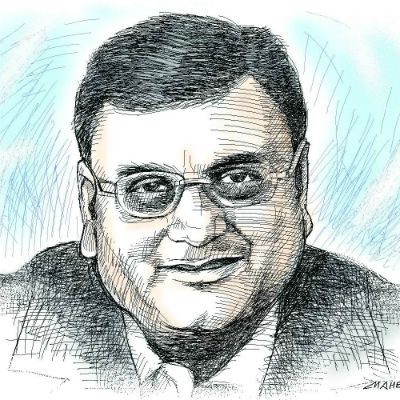
Largest private sector shipbuilder ABG Shipyard, which is under a CDR, will receive Rs 650 crore infusion from lenders by this month-end as part of the Rs 10,000-crore debt recast deal worked out in March, a top company official has said.
The Surat-headquartered company is confident of successfully getting out of the corporate debt restructuring cell in two years, its executive director and chief financial officer Dhananjay Datar told reporters here late last evening.
The company has convinced the 22-bank consortium led by State Bank, which had two specific reservations, and has got sanction for release of the money, he said.
On the banks' demand for pledge of shares by promoters, Datar said ABG has promised that promoters will be pledging their 68 per cent holding in the company by March 2015.
It can be noted that in late March, a group of 22 banks led by State Bank had cleared the recast of Rs 10,000 crore in loans advanced to the troubled shipbuilder under the corporate debt restructuring (CDR) process, making it the second biggest loan recast in recent times, next only to the Rs 13,500-crore debt recast done for engineering and construction major Gammon India in July 2013.
Under CDR, around Rs 2,500 crore worth of long-term loans and Rs 7,000 crore of working capital loans were restructured with a two-year moratorium for interest payment.
The issue over a Rs 236-crore investment in an Asset management company in the tax haven of the Cayman Islands - about which the banks had sought clarity - has also been settled, he said.
As part of the CDR package approved in March this year, the banks had agreed to lend Rs 1,300 crore to the company for working capital requirements and that the money will be released in two equal instalments subject to compliance of certain conditions, Datar said.
The company has also brought in Rs 300 crore in equity for the CDR package to get accepted, he said, adding the money got raised by divesting non-core assets based in Singapore and Italy. The Rs 650-crore fund is to be utilised for specific purposes, Datar said, adding it will be used on 11 ships under construction, including five from the defence sector.
The prospects for the sector are looking better due to the steps taken by the Modi government, like making only private sector compete for some contracts, he said. He further said orders are coming, but underscored working capital as the real worry for companies like ABG Shipyard, as the amounts paid by customers during the start of a project are getting trimmed and the payments are happening only at the time of delivery.
Sensex down 130 points on profit-booking, global cues
Our Correspondent : 10 Sep 2014, Bhopal

The benchmark BSE Sensex extended on Tuesday’s losses by declining over 130 points in opening trade on Wednesday as funds and investors indulged in booking profits in recent gainers amid a weak trend overseas.
The 30-share barometer, which had lost 54.53 points in the previous session, fell by 130.78 points, or 0.48 per cent, to 27,134.54.
All the sectoral indices, except healthcare, were trading in negative zone with losses up to 0.97 per cent.
Also, the broad-based National Stock Exchange index Nifty shed 36.15 points, or 0.44 per cent, to 8,116.80.
Equity brokers said increased profit-booking by retail investors at higher levels amid weak trend on other Asian bourses following overnight losses on the US market dampened trading sentiment.
Meanwhile, the rupee also weakened by 23 paise to 60.83 against the US currency in early trade on Wednesday at the Interbank Foreign Exchange market due to dollar’s gains against other currencies overseas.
Among other Asian markets, Hong Kong’s Hang Seng fell by 1.06 per cent, while Japan’s Nikkei moved down by 0.38 per cent in early trade.
However, the US Dow Jones Industrial Average ended 0.57 per cent lower in Tuesday’s trade.
Rupee down 23 paise against dollar in early trade on September 10
Our Correspondent : 10 Sep 2014, Bhopal

The rupee weakened by 23 paise to 60.83 against the US currency in early trade today at the Interbank Foreign Exchange market due to dollar's gains against other currencies overseas.
Forex dealers said besides strengthening of dollar, increased demand for the American unit from importers and a weak opening in the domestic equity market put pressure on the rupee.
The domestic currency had lost 31 paise, its biggest daily loss in over a month, to close at 60.60 against the US dollar in yesterday's trade on concerns US interest rates may rise sooner than investors had anticipated. Meanwhile, the benchmark BSE Sensex fell 130.78 points, or 0.48 per cent, to 27,134.54 in early trade today.
Domestic car sales up 15.16% in August
Our Correspondent : 10 Sep 2014, Bhopal

Domestic passenger car sales grew by 15.16 per cent to 1,53,758 units in August this year as compared to 1,33,513 units in the same month of 2013.
According to the data released by the Society of Indian Automobile Manufacturers (SIAM), motorcycle sales during the month grew by 14.45 per cent to 9,10,312 units as against 7,95,411 units in August last year.
Total two-wheeler sales in August 2014 grew by 19.22 per cent to 13,45,506 units from 11,28,631 units in the same period of the previous year.
Total sales of commercial vehicles were down by 5.59 per cent to 48,473 units from 51,344 units in the year-ago period, SIAM said.
Total sale of vehicles across categories registered a growth of 17.54 per cent to 16,60,437 units in August 2014 as against 14,12,602 units in the same month of 2013, it added.
Coal India Ltd independent directors resign ahead of AGM
Our Correspondent : 10 Sep 2014, Bhopal

Move seen as government's bid to remove those who were appointed during the previous UPA regime and who are being seen as being part of a defiant board As Coal India Ltd (CIL) shareholders meet for the annual general meeting today, three of the company's independent directors have resigned, triggering speculation that the government has kick-started the process of removing those who were appointed during the previous UPA regime and who are being seen as being part of a defiant board.
The company board had opposed some of Coal Ministry's moves like cutting down on e-auction of coal that will adversely impact Coal India's profitability.
While Alok Perti and C Balakrishnan resigned this week, CIL said on Tuesday, another independent director Shri Prakash put in his papers the previous week.
Sri Prakash was member (traffic) of Indian Railways while Alok Perti and Balakrishna had both served as coal secretaries.
With three of the directors resigning, proposals to reappoint them for another term already communicated to shareholders has turned infructuous.
For sometime, the impact of possible reduction in e-auction is being hotly debated within CIL's board, and as latest in August when it met to approve the quarterly financial results of the company, The board decided not to abide by the government's directive and sent a note to the coal and power ministry conveying that cut in e-auction coal will lead to revenue loss and also create problems for a section of customers who buy coal from e-auction, including some power utilities.
The issue was taken up by the board after government asked it to halve the e-auction quantity from the usual 10% of total yearly sales to 5% this year.
Even as CIL officials were too eager to share the information about sending that note, minister Piyush Goyal upped the ante telling journalists that the company board couldn't take such decisions without consulting the government and that a cut in CIL's e-auction volumes is almost a done deal and that higher e-auction can't be supported as one company's profits can't be more important than the greater good of the economy.
But clamour for reduction in e-auction has been growing as power sector suffered due to stagnant coal supplies even as the PSU miner minted profit from higher auction prices.
"But with lower allocation to e-auction, non-institutional customers like small scale sector will suffer," a CIL official said.
Brent crude price falls slightly in Asia on weak demand and ample oil supply
Our Correspondent : 09 Sep 2014, Bhopal

Oil prices were mixed in Asia today, coming under pressure on concerns about fragile demand, flush global supplies and a surging US Dollar, analysts said. US benchmark West Texas Intermediate (WTI) for October delivery rose 33 cents to USD 92.99 in late-morning trade, while Brent Crude for October fell nine cents to USD 100.11.
WTI had dropped 63 cents to USD 92.66 in New York, its lowest level since January, while Brent declined 62 cents to USD 100.20 in London after initially falling below the USD 100 threshold in intra-day trading.
"The unexpectedly weak US jobs number puts doubt in the global oil demand outlook matched against more than ample oil supply," United Overseas Bank said in a note.
A below-forecast US jobs report and disappointing manufacturing data out of Europe and China last week have compounded investors' fears about weakening global energy demand.
A surge in the US dollar following a fall in US bond prices has also put pressure on crude prices, analysts said.
The US dollar was buying 106.25 yen in Asia today, compared with 106.03 yen yesterday in New York.
A stronger greenback makes dollar-priced oil and commodities more expensive for buyers using weaker currencies, denting demand and pushing prices lower.
Investors are keeping a close watch on insurgencies in crude producers Libya and Iraq as well as Ukraine, a key conduit for Russian gas exports to Europe.
Sensex down 45 points in early trade; metal stocks bleed as coal hearing awaited
Our Correspondent : 09 Sep 2014, Bhopal

Retreating from record highs, the benchmark BSE Sensex fell over 45 points in early trade today with metal, consumer durables, banking and realty sector stocks leading the decline as participants locked in gains at current levels.
The 30-share barometer fell by 45.92, or 0.17 per cent, to 27,273.93. Yesterday, the gauge closed at a fresh life-time peak of 27,319.85 after climbing to a new intra-day record of 27,354.99. The National Stock Exchange index Nifty also slipped from record highs and shed 15.10 points, or 0.18 per cent, to 8,158.80. It closed at an all-time high of 8,173.90 after recording a new intra-day peak of 8,180.20 in yesterday's trade.
Brokers said sentiments turned weak on profit-booking by cautious investors ahead of the hearing of coal blocks allocation case in the Supreme Court today. In the metal segment, shares of Sesa Sterlite were trading 0.69 per cent down at Rs 281.85, while Tata Steel shed 0.58 per cent, to Rs 514. Jindal Steel and Power fell 1.93 per cent to Rs 233.45. Hindalco Industries too faced some pressure and fell by 0.92 per cent to Rs 172.
The big gainers were Ultratech Cement, Bharti Airtel, Cipla, Cairn India and Coal India.
Among other Asian markets, Japan's Nikkei moved up 0.58 per cent in early trade, while Hong Kong market is closed today. The US Dow Jones Industrial Average ended 0.15 per cent lower in yesterday's trade.
Punj Lloyd jumps 10% after bagging order worth Rs 3515 crore
Our Correspondent : 08 Sep 2014, Bhopal
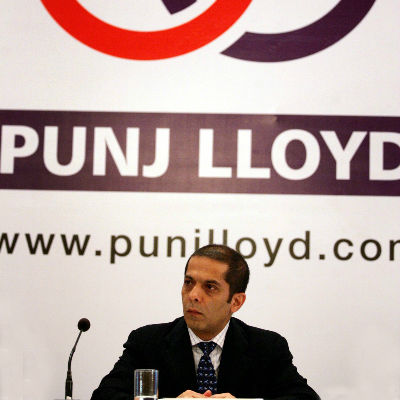
EPC giant Punj Lloyd gained 10% on the bourses today after it confirmed bagging of an order worth Rs 3515 crore. The order was placed by PRPC Refinery and Cracker Sdn Bhd, a subsidiary under the Petroliam Nasional Berhad (PETRONAS) group, Malaysia’s national energy company.
“Punj Lloyd is privileged to be part of PIC’s critical milestone requirements. Our expertise in tankage is recognised globally with our greatest advantage being our in-house engineering skill and extensive project experience of large scale tank projects," said JP Chalasani, Managing Director and Group CEO, Punj Lloyd, in a statement.
The total order backlog (unexecuted orders as on June 30, 2014 plus orders received after that ) stands at Rs 24,679 crores.
Punj Lloyd is also looking at exiting Medanta Medicity, a super speciality hospital in which the company has a minority stake. The debt-to-equity ratio of the company is high at 2.8 times at the end of fiscal year 2014, and this might help the company to get some relief.
The stock is trading at Rs 40.60, up 9.88% from its closing.
Hong Kong share benchmark slips; China stocks rise despite bad trade data
Our Correspondent : 08 Sep 2014, Bhopal

Hong Kong's benchmark index slipped on Monday, hurt by falls for heavyweight stocks, while keen investor interest in Chinese companies helped the H-share index rise. In the morning, China's August trade data pushed down both the Hang Seng Index and the one for top Chinese listings in Hong Kong, but those losses were erased.
Exports rose more than forecast while imports unexpectedly fell, pushing the trade surplus to a record high for the second consecutive month, underlining the challenges facing policymakers as they struggle to revive tepid domestic demand.
At midday, the Hang Seng was down 0.3 percent at 25,161.41 points. The China Enterprises Index was up 0.2 percent.
China markets are shut on Monday for the Mid-Autumn Festival. Hong Kong will be closed on Tuesday for the same holiday.
"Some reshuffling in portfolios is taking place," said Alex Wong, director of asset management at Ample Finance Group in Hong Kong. "People are selling some local blue-chips while increasing their exposure in the China sector... due to the renewed strength in the A-share market."
China's benchmark index, the Shanghai Composite Index, closed at its highest in nearly 1-1/2 years on Friday.
AIA Group slid 1.3 percent and HSBC Holdings plc lost 0.7 percent.
Biggest drag Tencent Holdings fell the most in more than three weeks, down 2.0 percent, weighed by the upcoming listing of Alibaba and changes in the FTSE China Index.
From Sept. 22, the FTSE China 25 Index, consisting of 25 of the largest and most liquid Chinese companies listed in Hong Kong, will increase its constituent stocks to 50. That means the weighting of Tencent, the biggest constituent, will come down and some funds will cut holdings of the stock accordingly, analysts said.
Chinese insurers, recent outperformers, extended gains on Monday. PICC GROUP and New China Life Insurance climbed 2.3 percent and China Life Insurance added 1.3 percent.
China Business News, quoting the country's top insurance regulator, reported on Friday that China's premium income would reach 5.1 trillion yuan ($830.62 billion) by 2020. (1 US dollar = 6.1400 Chinese yuan)
Policy Watch: With stock markets on boom, bearish phase for gold not over
Our Correspondent : 08 Sep 2014, Bhopal

There are two ways to look at gold. One would be by comparing today's prices with what they were in say 2000 (see chart). Anyone who has invested in gold would have a cause to smile. Things aren't so bad, after all.
The second way would be to view Gold prices post 2012. If you have bought gold just around that time, you have every reason to feel terrible. You could have lost around $600 per ounce, and must be worried that you could lose more. For you, therefore, the picture would be extremely worrying. The bears have a good case though. As pointed out in a brilliant report on Gold by Incrementum AG (In Gold We Trust – 2014), "A longer term look at [gold] shows that the current correction is still below average. The average price decline of the previous six bear markets was 43%." It does look like gold prices could get worse before they get better
Take a second factor. Has gold outpriced itself when compared to other commodities? The data compiled by Incrementum AG does suggest that gold has become expensive compared to many of the commodities selected.
Take a third factor. With a slowdown evident in China, and the Economy yet to pick up in India, could gold offtake decline? In 2013 they were higher than in 2012. Could this year be different?
Take a fourth factor. stock markets are booming like never before. And when money needs to find a parking place, it invariably opts for sectors where a bull run is in evidence. Will the stock markets suck in the money that would otherwise have moved towards gold?
Finally, take a look at the way in which – globally -- one asset bubble after another has been bursting. It was Real estate first, then oil. Does gold still have a chance to raise its head?
The answers to all queries suggest that the bearish phase for gold isn't over. Banks and lenders against gold would hence need to be careful about lending against this metal. Expect margin requirements to remain high.
But could that mean that a bullish phase for gold is not very far away? It could be so. Watch this space next week. At the same time, readers are advised to respect the ld adage "Caveat Emptor" – Buyers beware.
Inflation still high, says RBI governor Raghuram Rajan
Our Correspondent : 06 Sep 2014, Bhopal
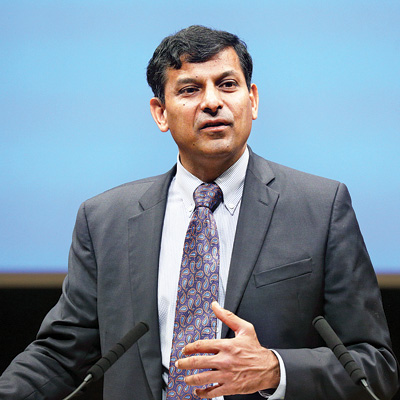
Ahead of the policy review by month-end, Reserve Bank Governor Raghuram Rajan has said that inflation is still high. "... but inflation still remains high on supply-side rigidities," Rajan was quoted as telling a conference in Boston, USA, by the organisers Citi. Rajan has hiked rates thrice in his year-long stint as the central bank Governor and continued to maintain the rates at high levels despite pressure from the pro-growth lobby.
The Government too has taken a slew of measures to ease the supply-side constraints, especially to curb hoarding. RBI will announce the bi-monthly review of the policy on September 30. Rajan singled out food inflation as a growing concern in his speech last night.
"Food inflation is a source of discomfort and given the sub-par Monsoon this year, there is a need to keep an eye on food inflation," he said. It can be noted that the sown area for thekharif crop has fallen 3.2% due to the lower rainfall. Rajan said fall in inflation to current 8% from a high of 11.2% in November 2013 was due to monetary tightening, fiscal consolidation and food management policies. RBI is aiming to contain the headline number at 8% by January 2015, and bring it down further to 6% by January 2016.
Tata Steel to make high grade steel for premium cars
Our Correspondent : 06 Sep 2014, Bhopal
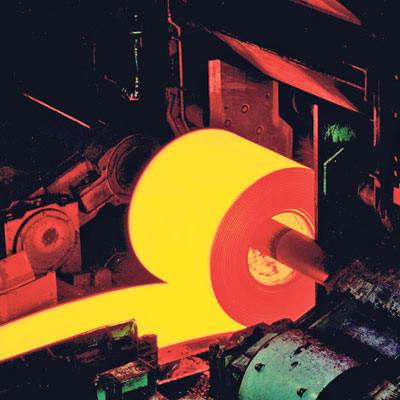
Tata Steel is looking at cashing in on the turnaround in Automobile sales and is fast preparing the groundwork to create capabilities in manufacturing critical components for high-end cars for the domestic market, a senior official told dna.
"The perceptions (about economic revival) are changing. And if the economy starts growing, demand will certainly start improving. I am sure the automobile companies are now looking at ramping up their volumes and we are creating our capacities accordingly," Kaushik Chatterjee, group executive director (finance and corporate) told dna.
In an important move to create steel components for premium cars, which so far were mostly imported, Tata Steel has just commissioned a new Rs 2,750 crore advanced auto grade steel production facility of 600,000 tonnes in joint venture with Nippon Steel and Sumitomo Metal Corp.
The facility at Jamshedpur is country's first continuous annealing and processing line to produce advanced, high-strength steel.
"We are now capable of producing high-strength components for high-end cars with the commissioning of our JV with Nippon Steel," Chatterjee said on the sidelines of the annual general meeting of subsidiary Tinplate Co of India.
Car sales grew for a fourth straight month in August with Society of Indian Automobile Manufacturers expecting car demand to rise by 5%.
However, some analysts see this estimate as conservative and predict 8-10% growth in FY15, linking the scenario to the previous strong economic growth phase when passenger car demand grew by 20-25%.
With hopes of further upsurge in automobile sales, Tata Steel is already gearing up to meet that demand from auto-makers with a focus now on top-end auto models that requires precision engineering and high strength.
In fact in FY14, Tata Steel's sale of automotive and special products had gone up by 15%, despite a 5% decline in overall auto market.
In terms of capacity, the commissioning of Tata Steel's Kalinganagar facility, especially the cold rolling mill that would come up in the second phase, will produce advanced high strength steels offering auto makers light weight higher strength steels with better fuel efficiency.
With regards to Tinplate Company of India, country's largest producer of tin-coated and tin free steel used for metal packaging, Chatterjee said with Tata Steel holding close to 75% now, there would be higher synergy and alignment between the operations of the parent and the subsidiary company.
Chatterjee, who is the chairman of the Jamshedpur-based packaging outfit, however, ducked the queries from shareholders on merging the subsidiary with Tata Steel.
Alibaba expects IPO to be priced between $60 and $66 per share
Our Correspondent : 06 Sep 2014, Bhopal
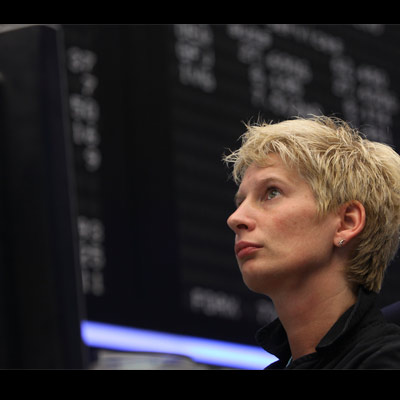
Chinese e-commerce company Alibaba Group Holding Ltd said its initial public offering is expected to be priced at between $60 and $66 per American Depository Share, valuing the company at about $162.69 billion at the top end. The much-anticipated IPO would raise about $21.13 billion, making it the biggest technology listing in the United States.
Alibaba plans to launch its New York Stock market debut in the week of Sept. 8, a person briefed on the matter told Reuters in late August. "From the very beginning our founders have aspired to create a company founded by Chinese people but that belongs to the world," Executive Chairman Jack Ma said in a regulatory filing with the U.S. Securities and Exchange Commission.
Alibaba, in which Yahoo Inc currently holds a stake of 22.4 percent, will decide on its final price after a globe-spanning roadshow expected to kick off in coming days.
The company is selling 123.1 million of the 320.1 million ADSs in the IPO, while selling shareholders, including Yahoo, Jack Ma, and executive vice chairman Joe Tsai, are offering the remaining.
Alibaba's valuation, according to the top end of the expected IPO price range, fell short of expectations. Some industry analysts had expected the company to try and garner a valuation north of $200 billion, ranking the Chinese company amongst the 20 largest publicly traded U.S. companies.
Alibaba accounts for about 80 percent of all online retail sales in China, where rising Internet usage and an expanding middle-class helped the company generate gross merchandise volume of $296 billion in the 12 months ended June 30.
The Chinese e-commerce giant's revenue accelerated in the April-to-June quarter on strong gains in its mobile business, providing investors with what may be the final glimpse of the company's financials before its expected landmark market debut.
Revenue in the June quarter increased 46 percent year-on-year to $2.54 billion, a faster pace than the 38.7 percent growth in the previous quarter.
Realty sector saw significant change during 2005-14: Report
Our Correspondent : 05 Sep 2014, Bhopal

Indian real estate market witnessed a significant change in the last decade mainly backed by opening up of FDI in the sector and shift in preference to high-rises over traditional low-rise structures, according to a report.
The opening up of the sector to foreign direct investment in 2005 initiated the entry of new avenues for funding, and capital inflow witnessed a spike, property consultant CBRE said in its report titled 'Inflection Point: Ten years of organised Real estate in India (2005–2014)'. Restrictive legislations till 2004 provided limited scope of funds for the sector. However, opening up of the sector to FDI in 2005 opened up new avenues for investment, it said.
As per the report, the capital inflows into the sector witnessed a spike especially in 2007 and 2008 when private equity investment was close to USD 14 billion. "The economy opened up for investments around 2005, which was instrumental in spurring broad-based fundamental growth across various sectors — accelerating consumption and heightening investment inflows," CBRE South Asia Chairman and Managing Director Anshuman Magazine said.
India's housing landscape shifted from largely independent low-rise plotted developments to high-rise apartment complexes, mainly to meet the over increasing demand for homes, the report said. "Investment-grade office space formed the mainstay of the evolution of the organised real estate sector in the country, which witnessed a shift from traditional central business districts of leading cities across India to new peripheral/suburban business districts in the last decade," it said.
From a little over 90 million sqft in 2005 to more than 400 million sqft in 2014, country's investment grade office stock has undergone a generational shift in its composition, structure and spread backed by the private sector as well as intervention by the government. The retail landscape also underwent significant changes over the last decade. "The period was marked by the rising popularity of malls among shoppers and retailers, as against the decline of major high streets. Going forward, technology and e-commerce will co-exist alongside malls and high streets in a comprehensive retail real estate eco-system," Magazine said.
Sensex recovers over 92 points in early trade
Our Correspondent : 05 Sep 2014, Bhopal
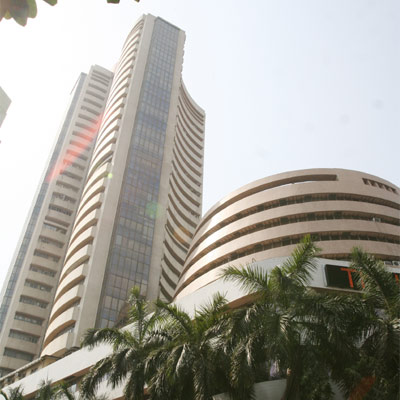
The BSE benchmark Sensex recovered by over 92 points to 27,178.80 in early trade today on the back of gains in IT, teck, metal and banking sector stocks, tracking firming Asian cues. The 30-share barometer, which had lost 54.01 points in previous session, recovered by 92.87 points, or 0.34%, to 27,178.80 in early trade. Similarly, the broad-based National stock exchange index Nifty traded above 8,100-mark by gaining 21.10 points, or 0.26%, to 8,117.05.
Brokers said fresh buying by foreign funds and retail investors on the back of mild recovery in sectors such as IT, teck, metal and banking, coupled with positive Asian trend, mainly influenced the trading sentiment. Major gainers among the 30 Sensex stocks were Infosys, TCS, Wipro, Larsen and Toubro and SBI, helping the key indices to trade in positive zone.
Meanwhile in Asia, Hong Kong's Hang Seng index rose by 0.23%, while Japan's Nikkei moved up by 0.17% in the early trade.
Haryana High Court cancels DLF's 350-acre land allotment, government to auction land in a month
Our Correspondent : 04 Sep 2014, Bhopal
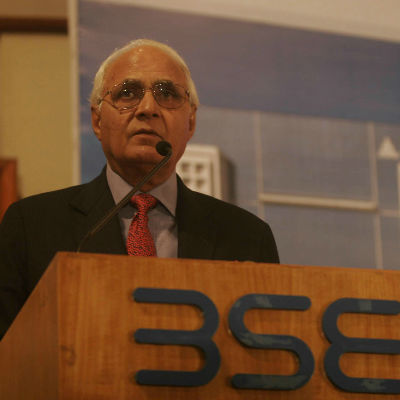
The Punjab and Haryana High court today set aside Haryana government's decision to allot 350 acres of land at Wazirabad in Gurgaon to real estate developer DLF in 2010. A division bench of the court, comprising Justice Surya Kant and Justice Amol Rattan Singh, directed Haryana government to conduct an auction of the land in question by inviting international bids within a month.
However, DLF would be able to participate in the auction process.
The decision came on a bunch of petitions filed by farmers challenging the acquisition and transfer of the land to DLF, citing that it was a village common land, said their counsel Inderpal Goyat.
However, the counsel said the bench upheld the acquisition of the land by state-owned authorities but set aside the land transfer to DLF.
DLF had proposed to come up with golf villas at the site.
The court had in 2012 restrained DLF developers from carrying out any construction and also from creating any third party rights.
In August, 2009, DLF had bagged a 350-acre plot for Rs 1,750 crore for developing a recreation and leisure project.
The letter of acceptance was issued to DLF which was found the sucessful bidder by Haryana State Industrial and Infrastructure Development Corporation Ltd (HSIIDC).
DLF had emerged as the sole bidder for the 350-acre project after the bids of other parties- Unitech and Malaysia-based Consortium comprising Country Heights, Country Club of South Africa and Rajarhat IT Park - could not qualify on technical grounds.
The qualified bidder, DLF, had quoted its bid at Rs 12,000 per sq mt against the reserve price of Rs 11,978 per sq mt for the project.
Michael Bloomberg to return as head of Bloomberg company
Our Correspondent : 04 Sep 2014, Bhopal

Former New York Mayor Michael Bloomberg will return as head of Bloomberg LP, the data and financial news company he founded in 1981, replacing Daniel Doctoroff who has decided to step aside, the company said on Wednesday. The privately held company, in which Bloomberg is the majority shareholder, said Doctoroff would step aside as president and chief executive at year-end.
Bloomberg, whose fortune is estimated at more than $32 billion, had expected to spend much of his time on philanthropic efforts after leaving office in late 2013. Those efforts have included fights for public health and gun control. "This is a sad day for me and my company," Bloomberg said in a statement. "I really wanted Dan to stay and continue in his leadership role. But I understand his decision."
Bloomberg, who stepped down as New York mayor last December, added he "never intended to come back to Bloomberg LP" after 12 years as New York's mayor. Bloomberg competes with Thomson Reuters.
Doctoroff became Bloomberg LP president in 2008 and CEO in July 2011. During that period, the company's revenues increased from $5.4 billion to more than $9 billion, he said in a memo to the company's employees. "So why have I decided to leave now?," Doctoroff said in the memo. "Simply put, while Mike never intended to come back full time, after he left City Hall and started to get to know the company again, he rediscovered what an exciting and incredible place this is. So he naturally wanted to be more involved."
Doctoroff, 56, a former New York deputy mayor, told the New York Times that he informed Bloomberg two weeks ago that he intended to resign. Bloomberg encouraged him to stay. "This wasn't the plan," Bloomberg told the Times. "It was his idea. If it was up to me, he would have stayed."
Bloomberg started the company in 1981, using a $10 million severance package he received after he was laid off after investment bank Salomon Brothers had been acquired. He had headed equity trading at Salomon.
During Doctoroff's tenure at the company, the numbers of subscriptions for its terminals have grown from 273,000 to 321,000, the company said in a statement. The company expanded from providing financial information to markets for legal, government and alternative energy information. Doctoroff stressed he was not leaving for another opportunity, but would focus more of his time on non-profit activities. He also accepted Bloomberg's invitation to join the board of the Bloomberg Philanthropies, the former Mayor said in the statement.
Chinese stocks rise, led by property shares, but HK pulls back
Our Correspondent : 03 Sep 2014, Bhopal
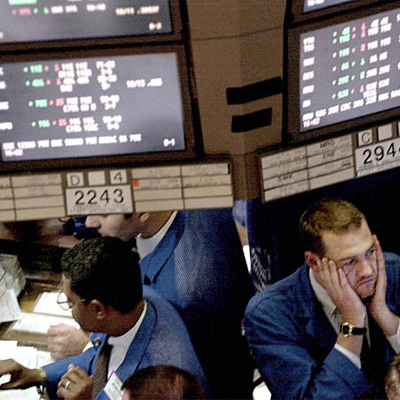
China's stock indexes rose for a fifth straight day on Thursday, boosted by strength in property shares after Reuters reported Beijing was relaxing financing rules for listed property firms.
By midday the CSI300 of the leading Shanghai and Shenzhen A-share listings had added 0.2 percent, while the Shanghai Composite Index climbed 0.3 percent to 2,294.51, setting a 15-month high.
The CSI property sub-index had gained 0.7 percent by midday, with shares in China Vanke, the country's largest residential developer, rising 2 percent and Poly Real Estate Group Co Ltd up 1.2 percent.
Reuters reported on Wednesday that listed developers would be allowed to issue medium-term notes to fund residential housing projects, supplement companies' operating cash flow and repay bank loans.
"This news did support property shares," said Du Changchun at Northeast Securities in Shanghai. "But in the long term, it will not be as strong a sector as it used to be."
In Hong Kong, the Hang Seng Index was down 0.3 percent at 25,249.49 after a strong start and the China Enterprises Index of the top Chinese listings in Hong Kong rose 0.6 percent.
"There's a little bit of a pull-back and correction after yesterday's rally," said Mark To, head of research at Hong Kong's Wing Fung Financial Group. "In terms of the overall sentiment, views regarding whether it's going to have a further rally or to have some more correction at this level are really quite mixed."
Some investors are concerned that stocks expected to benefit from the Shanghai-Hong Kong Stock Connect may come under pressure due to profit-taking as the launch date of the programme draws near, To added.
China Mobile added 0.3 percent, hovering around a six-year high. The telecom giant posted strong gains in the previous two sessions after it started to take pre-orders for a new 4G cellphone, which is expected to be iPhone 6.
Shares in China Overseas Grand Oceans jumped 3.7 percent, Sunac China Holdings Ltd surged 7.0 percent and Kaisa Group Holdings 2.8 percent. Tianjin-city-related shares found support after news that Chinese Premier Li Keqiang would speak at the 2014 New Leaders Meeting of the World Economic Forum in Tianjin on September 10.
Analysts said the meeting had sparked speculation the government would develop a Free Trade Zone in Tianjin.
Four Tianjin-related companies jumped by their 10 percent daily limit, including Jinbin Development Co Ltd, Tianjin Tianbao Infrastructure Co Ltd and Tianjin Marine Shipping Co Ltd.
Rupee gains 7 paise against dollar in early trade on September 3
Our Correspondent : 03 Sep 2014, Bhopal
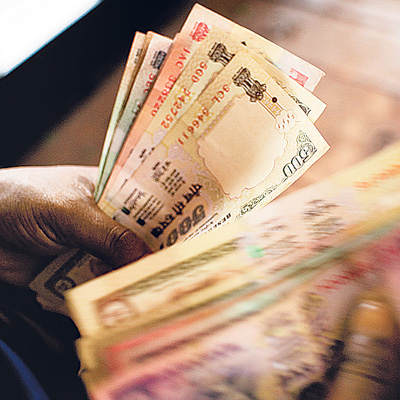
Rupee gains 7 paise against dollar in early trade Mumbai, Sep 3 (PTI) Snapping its four-day losing streak, the rupee recovered by seven paise to 60.61 against the US dollar in early trade at the Interbank Foreign Exchange market today amid sustained overseas capital inflows.
Fresh selling of the American currency by exporters amid sustained inflows of foreign funds supported the rupee, forex dealers said.
Besides, a higher opening in the domestic equity market also helped the rupee but the dollar's gain against other currencies overseas, capped the rise, they added.
The rupee had lost 15 paise to hit two-week closing low of 60.68 against the dollar in yesterday's trade on consistent demand for the US currency from importers and some banks on strong global cues.
Meanwhile, the benchmark BSE Sensex rose 129.51 points, or 0.47 per cent, to hit new record-high of 27,148.90 in opening trade.
Oil prices mixed after weak China and Europe data; Brent crude remains flat
Our Correspondent : 02 Sep 2014, Bhopal
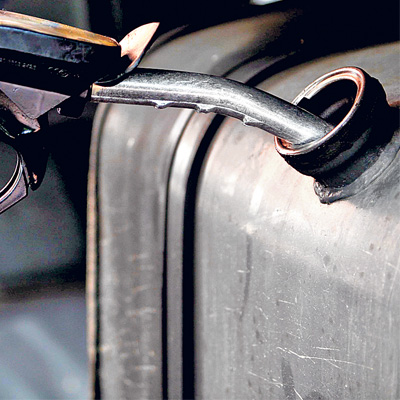
Oil prices were mixed in Asia today following disappointing manufacturing data out of top energy consumer China as well as Europe and as dealers await fresh US economic figures, analysts said.
US benchmark West Texas Intermediate for October delivery eased 15 cents to USD 95.81 while Brent crude for October rose one cent to USD 102.80 in mid-morning trade.
"Below-consensus manufacturing surveys in China and the eurozone did not help risk appetite," French bank Credit Agricole said in a note.
China yesterday said its official purchasing managers' index (PMI) of manufacturing activity slipped to 51.1 last month. That is down from 51.7 in July -- a more than two-year high -- and the first decline since February.
Anything above 50 indicates growth and anything below suggests contraction.
In Europe, Markit's PMI of output in the 18-nation eurozone's manufacturing sector fell to 50.7 in August from 51.8 in July.
Investors are awaiting the US Institute for Supply Management's August PMI for the US manufacturing sector later Tuesday. Credit Agricole said the figure "likely edged down to 56.2", from 57.1 in July. US markets were closed on Monday for the Labor Day public holiday.
Latest US construction spending data, another key indicator of the health of the world's biggest economy, is also set for release today.
Simmering insurgencies in major crude producers Libya and Iraq, as well as in Ukraine, a key conduit for Russian gas exports to Europe, continue to provide support to oil prices, analysts said.
SBI to approach CBI against Kingfisher over loan default
Our Correspondent : 02 Sep 2014, Bhopal
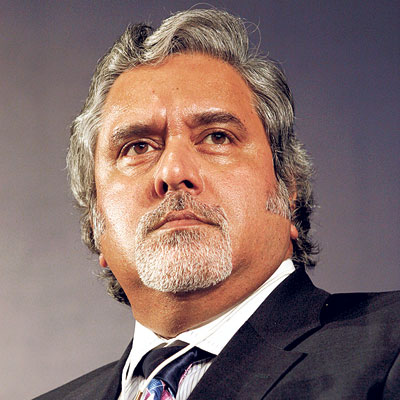
After being declared wilful defaulter by United Bank of India, liquor baron Vijay Mallya faces more trouble.The State Bank of India (SBI) may also soon approach the Central Bureau of Investigation (CBI) for investigating the alleged criminality involved in default of Rs 6,500 crore loan given to it by an SBI-led consortium, according to government officials.
The government is also mulling the bank consortium taking over the management of Kingfisher Airlines.
The government is also rolling up its sleeves to ensure that Mallya is ostracised from the country's financial system and will see to it that no bank grants any loan to Vijay Mallya and all the companies where he is a director.
The companies which have other promoter group members of Kingfisher Airlines on their board will also not be given any further loans.
A senior official said, "The tendency to open accounts in banks which are not part of the consortium has to be curbed. Kingfisher Airlines opened an account in a private bank, which had a balance of Rs 7.5 crore. The revenue from operations was being deposited in that account. If the company had money in another account, where is the question of inability to pay? Is it not a wilful default?"
Ministry of Finance will also approach the Reserve Bank of India (RBI) to address the issue of corporates resorting to opening of current account in a different bank, and depositing revenue from operations in it, rather than in the bank from where they have taken loans. The ministry has unearthed several such instances.
A source in the finance ministry confirmed that SBI is preparing to approach the investigating agency, without pegging a deadline to it, especially after the bank is now armed with a forensic audit on the Kingfisher Airlines account conducted by independent auditor EY.
The audit found instances of diversion of funds by Kingfisher Airlines. SBI in its response to queries from dna, said, "The audit report is being examined by the consortium of banks, all appropriate actions are being initiated."
The government is considering an option of the bank consortium taking over the management of the Kingfisher Airlines. "The two options before us are sale of assets of the company or taking over the management of the company. The second option is more preferable as the first one involves intricate issues such as labour, valuation, etc. Also, the chances of the recovery are better in this option," said the official.
GDP growth comes at the cost of drop in plan expenditure
Our Correspondent : 01 Sep 2014, Bhopal
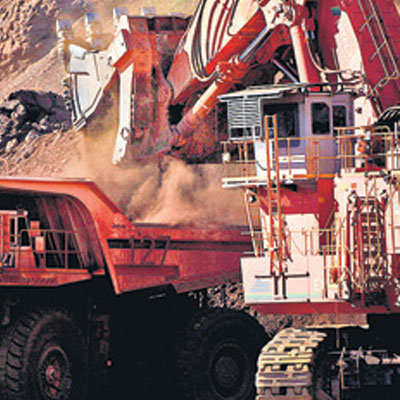
Amid positive sentiments from select industrial sectors after a stable government with a single-party majority came into power, India's gross domestic product (GDP) recorded a significant jump in the April-June quarter.
While the GDP growth of 5.7% -- the fastest quarterly growth in over two years -- may have spurred an overall investment climate, the growth has come at the cost of drop in productive expenditure from the government.
The drop in planned expenditure by 12%, a weak base and a slight uptick in industrial growth, which was negative last year, helped expand the GDP growth.
Aditi Nayar, economist with ratings agency Icra, said, "At an absolute level, the fiscal deficit in April-July 2014 is 5% narrower than the level in the first four months of 2013-14. This partly reflects an 11% contraction in non-interest expenditure, which is a cause for concern. In particular, plan expenditure in April-July 2014 was 12% lower than the year-ago period, highlighting that productive expenditure is yet to pick up."
According to the details put out by the Ministry of Statistics, economic activities that registered a significant growth in first quarter over Q1 of 2013-14 are 'electricity, gas & water supply' at 10.2%, 'financing, insurance, real estate and business services' at 10.4% and 'community, social and personal services' at 9.1%. During the quarter, other economic activities reported include 4.8% growth in 'construction', 3.5% in 'manufacturing', 2.8% in 'trade, hotels, transport and communication', 3.8% in 'agriculture, forestry & fishing', and 2.1% in 'mining & quarrying'.
D K Joshi, chief economist at rating agency Crisil, said, "The GDP growth is on a weak base. Significant growth came from segments like electricity where availability of coal is a major issue, so it needs to be sustained. The growth came also came from industrial activity and a good monsoon last year resulted in good agricultural production."
According the Ministry of Statistics, "The Index of Industrial Production (IIP) the indices of mining, manufacturing and electricity, registered growth rates of 3.2 %, 3.1 % and 11.3 5%, respectively during the first quarter of 2014-15, as compared to the growth rates of (-) 4.6 %, (-) 1.1 % and 3.5 % in these sectors during Q1 of 2013-14."
"I think we have crossed the difficult situation that the country was facing," Prime Minister Narendra Modi told reporters in Tokyo. "Within the first 100 days of this government, we have achieved stability and stopped the continued reversals that the country was facing. We have to move ahead now on the runway; I am confident that, very soon, we will attain even greater heights."
The key indicators of construction sector, namely, production of cement and consumption of finished steel registered growth rate of 9.5% and 0.7%, during Q1 of 2014-15. Among the services sectors, the key indicators of railways, namely, the net-tonne kilometres and passenger kilometres have grown. In other transport sectors, passengers and cargo handled by the civil aviation, and cargo handled at major ports registered growth rates of 7.5% and 6.2% and 4.3%, respectively, while the sales of commercial vehicles declined 16.1% during Q1 of 2014-15 over Q1 of 2013-14.
However, bank credit and deposit growth has dipped. Aggregate bank deposits, and bank credits posted growth rates of 12.4% and 13.3%, respectively as on June 2014 as against growth of 13.5% and 13.7%, respectively as on June 2013.
The finance ministry expects the pace of growth to hasten.
"With improvement witnessed in some important sectors including manufacturing as well as in the performance of exports (that registered a growth of 11.5% at 2004-05 prices), along with the measures taken by the government, the economy can be expected to show further improvement in the remaining part of the year," the ministry said in a statement.
Power sector awaits Supreme Court verdict on coal block allocations today
Our Correspondent : 01 Sep 2014, Bhopal

The Supreme Court, on Monday, will decide the fate of the coal blocks that had been allocated since 1993. On August 25, the Court had declared all the allocations since 1993 as illegal though it had said that de-allocation of the blocks would need further hearing. The Supreme Court had said that the coal block allocations suffered from "illegality" and "arbitrariness."
It disallowed any exploitation of captive mines by ultra mega power plants (UMPP) and has said that commercial usage of captive mines cannot be allowed. It said that the government did not adhere to proper guidelines and no objective criteria were being followed either. It had gone on to say that the consequences of the illegality would be clear on September 1.
Arun Jaitley, in a press conference, that presented the financial report card for the first 100 days of the Modi government. He said, the Supreme Court judgement on coal block allocation will move the system towards a fairer system of allocation of resources. However, he said, "We cannot allow the fate of the coal blocks to hang in the air. They need to be utilised for what coal is utilised for. So whether existing allottees use the coal or fresh allotment is made, we have to wait for the SC decision to know that. But I cannot set a timeline for the court."
However, the court had said that its decision should have no bearing on the investigation on coal block allocation scam that was already ongoing. The judgement "clarified that consideration of the present matter shall not be construed, in any manner, as touching directly or indirectly upon the investigation being conducted by CBI and ED into the allocation of coal blocks."
The judgement is unlikely to deallocate all the coal blocks since 1993, as it might shatter a power sector that is already reeling under pressure. Many banks would also suffer heavily as some of these coal blocks are already functional and are used as collateral by the companies for the loans.
The markets seem careless and optimistic at this point with the Nifty breaching 8000 points for the first time.
On Narendra Modi's visit to Japan, will Shinzo Abe's golf diplomacy be on display?
Our Correspondent : 01 Sep 2014, Bhopal
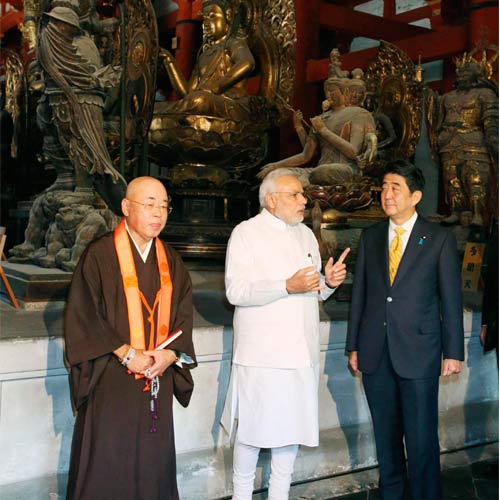
The Japanese are about relationships and prime minister Narendra Modi's visit is high on the soft signals over talking shop. Work may definitely get done but the second track of symbolic gestures is headlining what appears to be a new equation in the regional game. Narendra Modi and Abe hugged each other on arrival instead of a customary handshake.
The two leaders also participated in a Japanese ritual called 'feeding the fish', which is considered to be an auspicious beginning. Modi's visit is less about deals and more about signals. Modi presented Abe with a Bhagwad Gita in Japanese and a book on Swami Vivekananda. What come with it are talks on security, business and other priorities over another common thing between the two, chai.
That Modi is keen to do what may take to warm the Japanese with personable gestures, something that's appreciated in their culture. They value trust. And how? The most important consideration in initiating business in Japan is to select people capable of building relationships and establishing mutual trust with the Japanese people. Japanese are well known for not getting enamoured by facts, figures and sales charts, instead they value business driven by someone with good interpersonal relationships.
Modi may not play golf but Abe does and this visit is no doubt high on golf's cultural subtext and inherent qualities, which incidentally are very popular with Japanese people who use the sport as an icebreaker. A business watcher in the country, Kazuo Nishiyama, the author of 'Doing Business With Japan' commented, "Japanese love the sport and often introduce business executives on the course giving them an opportunity to spend about 4-6 hours together." It's besides the point that Japan houses some of the world's best golf developments and Abe uses the sport to diplomatic use, and not always by playing the game but using its delicate lessons.
If chemistry has to change how Japan and India have treated each other in history, then golf's lesson and etiquette are likely to be in full display as the two countries plan more joint development. The nations have signed a partnership agreement to turn the Hindu holy city of Varanasi, which forms part of Modi's parliamentary constituency, into a "smart heritage city". He later tweeted: "It was gladdening to witness the signing of MoU between Varanasi and Kyoto. Its yet another instance of furthering India-Japan cooperation."
Over the five-day visit, may be the next few days will take up defence, nuclear, geo-political and business talks, but like the Japanese themselves Modi is first laying the course with the subtleties. A few other exchanges on twitter before Modi took off included tweets in Japanese.
"Friends from Japan asked me to talk to the people of Japan directly in Japanese. I also thank them for helping with the translation," Modi explained. Using English, Abe tweeted back: "India has a special place in my heart. I am eagerly waiting for your arrival in Kyoto this weekend."
For the two men who celebrate their birthdays later in September, they are aware that the world is watching this visit. From edging out China via a stronger Indo-Japanese relationship, signing big deals, getting more Japanese funding for India – these are all a matter of detail. Instead what the leaders seem to be projecting is a bit what many do with their golf …that signals are stronger than scores.
Six small and medium enterprises raise Rs 63 crore via IPOs in April-June quarter
Our Correspondent : 30 Aug 2014, Bhopal

Six small and medium enterprises (SMEs) got listed on the nation's capital markets with public issues worth a total of Rs 63 crore in the first three months of the ongoing financial year.
In comparison, only three SMEs had launched their initial public offerings (IPO) and had raised a total of Rs 25 crore through their public issues during April-June quarter 2013-14, latest data available with market regulator Sebi showed. Month-wise, the stock exchanges in the current fiscal saw three IPOs each in May and June on the SME platform.
An amount of Rs 39 crore was garnered through SME IPOs in May while Rs 24 crore was raised in June. The SMEs which made their public debut during April-June period 2014-15 are -- Bansal Roofing Products, Oasis Tradelink, Tarini International, Dhanuka Commercial, Gcm Capital Advisors and SPS Finquest. SPS Finquest which hit the market in May had the highest issue-size for the quarter at Rs 25 crore, followed by Tarini International that raised Rs 16 crore through its IPO in June, Sebi data showed.
Leading bourses BSE and the National Stock Exchange (NSE) had launched the SME platforms in March 2012. They are the only two bourses offering such a segment in the country. So far, the BSE has 63 companies and the NSE has five firms trading on their respective platforms for SMEs. The platforms provide opportunity to SME entrepreneurs to raise equity capital for growth and expansion. It also provides immense opportunity for investors to identify and invest in good SMEs at early stage.
China orders salary cuts of top executives of public sector enterprises, following heavy criticism
Our Correspondent : 30 Aug 2014, Bhopal
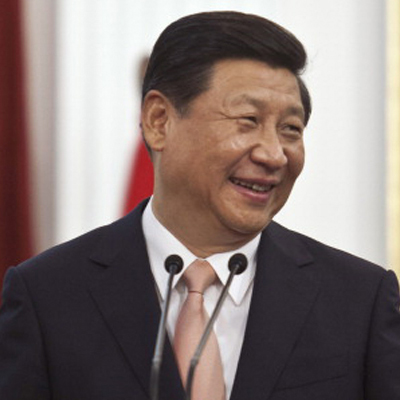
Days after criticism by Chinese President Xi Jinping, the ruling Communist Party of China (CPC) has approved plans and decided to cut hefty salaries of executives of large state-owned enterprises (SOEs). During a meeting presided over by Xi yesterday, who also heads the party besides the military, the Political Bureau of the CPC approved plans to reform the payment system that determines SOE executives' salaries and the size of their expense accounts and other privileges.
"Deepening the reform of the payment system for executives of major SOEs is an important part of China's efforts to establish a modern corporate system and push forward the reform of the income distribution system," said a statement released after the meeting. Reform of the payment system for executives of major SOEs should proceed in light of the basic reality that China is still in the primary stage of socialism, it said.
On August 18, Xi told a meeting that major SOEs must make sure their salary level is proper, their salary structure is reasonable, their salary management is strict and efficiently supervised. Statistics showed the average annual salary of executives at centrally administered SOEs ranged from 650,000 to 700,000 yuan in 2010 and 2011. These salaries were significantly higher than ordinary employees and those of government civil servants, state-run Xinhua news agency reported.
In addition to high salaries, many top executives at major SOEs carry a vice-ministerial or ministerial-level ranking that brings them so-called "invisible income" such as transportation and communication allowances and other material benefits. The salary reform was part of a broader reform plan in the SOE sector which has cantered on bringing in private capital to foster modern governance systems and develop a mixed- ownership economy. Xi's call to slash salaries was part of his campaign against corruption and austerity which struck a chord with people and partly improved the sagging image of the CPC. He has already launched major anti-corruption and austerity drive in the CPC and the military in which several high level serving and retired officials faced investigations.
Reliance Industries plans to invest Rs 78000 crore in energy projects in Jamnagar
Our Correspondent : 30 Aug 2014, Bhopal
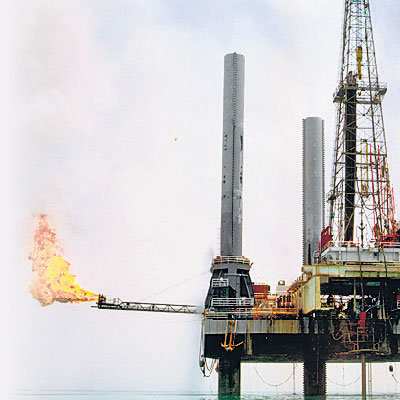
Reliance Industries is set to invest $13 billion (Rs 78,000 crore) in energy projects, after it had recently revealed its plans to invest Rs 1.8 lakh crore across business by 2016. This includes a 400,000 barrels per day (bpd) crude refinery at its Jamnagar complex, Reuters reported today. This refinery will be used to refine cheap and heavy crude that is now more and mroe available in Asia.
Reliance Industries, controlled by Mukesh Ambani, operates the world's biggest refining complex in Gujarat. The two plants in Gujarat can process about 1.4 million bpd of oil. Reuters reporetd that the company had sought the approval of the environment ministry to invest Rs 77300 crore to build a new refinery and some polymer units. It also wwanted to shift a 450 megawatt power plant from gas based to coal based. The environment ministry had asked to Reliance to comply to certain conditions to get the nod for the projects. However, reuters could not confirm if further communications between the company and the ministry had been made.
The company has cash worth more than Rs 80,000 crore now, and can invest much of the cah for its organic growth even if it does not go for acquisitions. Apart from the refineries, it can invest hefty amounts in its media and telecom business as well.
However, before making further moves, it might wait for the central government's decision on the gas pricing issue which is due at the end of September.
China shares rise as aviation stocks jump, Hong Kong slips again
Our Correspondent : 29 Aug 2014, Bhopal
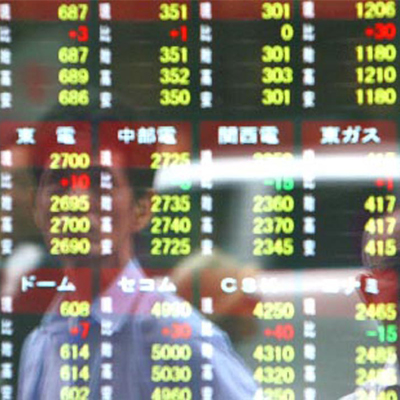
China shares rose on Friday, buoyed by banks and outperforming aviation counters, while the Hong Kong market slipped again on profit-taking and lackluster earnings. By midday, the CSI300 of the leading Shanghai and Shenzhen A-share listings added 0.5 percent, while the Shanghai Composite Index edged up 0.3 percent at 2,201.60 points.
However, both indexes were on track for their first weekly loss in seven. For the month, the CSI300 was down 1.2 percent and the Shanghai benchmark flat.
The Hang Seng Index, which has declined the past three days, slipped 0.3 percent to a two-week low at 24,678.14 points. The China Enterprises Index of the top Chinese listings in Hong Kong was off 0.2 percent.
On the month, the Hong Kong indexes are down 0.3 and 2.0 percent, respectively, and August could produce their first monthly loss in four.
The Hang Seng Index is having difficulty in staying above the 25,000-point level, as "we haven't seen any fresh inflows of funds," said Ben Kwong, director at KGI Asia in Hong Kong.
With earnings season coming to an end, "investors' focus will shift back to those economic factors such as whether China will adopt more minor stimulus," he added.
Markets are bracing for China's official manufacturing purchasing managers' index (PMI) due on Monday. A Reuters poll sees it falling to 51.2 in August from July's 51.7, which was the strongest in 27 months.
Chinese banks recovered some recent losses from Thursday. Agricultural Bank of China climbed 0.8 percent after closing at a one-month low the previous session, as did Bank of China.
Aviation companies, part of the defense industries, posted solid gains after a Friday report on the official Shanghai Securities News said reform measures for the defense sector would come out in October.
The same report also said rules on the use and management of low-altitude airspace are expected by the end of the year.
China Avic Electronics jumped 5.9 percent.
Aluminum Corp of China (Chalco) shed 4.4 percent in Hong Kong and 1.7 percent in Shanghai after posting a first-half net loss of 4.12 billion yuan on Thursday.
Anton Oilfield, which plunged 14.6 percent on Thursday, slid another 2.9 percent to its lowest since December 2012.
Macau casinos suffered losses, with Galaxy Entertainment Group and Sands China both down more than 2 percent. Barclays on Tuesday revised down earnings forecasts of gambling companies due to concerns about revenue growth.
Fresh drug price control rule may hit Indian pharmaceutical companies
Our Correspondent : 29 Aug 2014, Bhopal

Move by NPPA to fix prices of more combination drugs hits cos like Ipca Lab, Lupin, Torrent Pharma The National Pharmaceutical Pricing Authority (NPPA) has fixed prices of ten combination drugs under Drugs Prices Control Order (DPCO), 2013. This is a part of a recent move taken by the NPPA to fix or revise prices in respect of 56 formulation packs, both ceiling and retail price packs, under DPCO, 2013.
These combinations are referred to as "new drug" under paragraph 2(u) of the DPCO, 2013.
Of the ten combinations included by NPPA under DPCO, 2013, combination of paracetamol and mefenamic acid suspension was a part of earlier DPCO, 1995. The nine remaining combinations such as Dicyclomine HCl with combination, Atorvastatin with combination, Cyclosporine with combination, Pyrimethamine with Sulphamethoxypyridazine (MALARCE), Metformin Hydrochloride with Gliclazide and Pioglitazone, Tramadol and Diclofenac combination, Cetirizine HCl with Paracetamol and Phenylepherin HCl, Bisoprolol Fumarate with Amlodipine, and Glimepiride with Metformin Hydrochloride are included for the first time. All these mentioned formulations are based on bulk drugs.
Some of the manufacturers who are producing these combination drugs include Ipca Laboratories, Mankind Pharma, Cadila Healthcare, Lupin, Torrent Pharmaceuticals, Ajanta Pharma and Micro Labs.
Pharma analyst Ranjit Kapadia of Centrum Broking said, "While one of them was a part of DPCO 1995, the other combinations are new additions to the DPCO, 2013. However, what would be the impact of this is yet to be estimated, since these are relatively small products."
The NPPA in its order said the retail price for a pack of the formulation would be arrived at by the concerned manufacturer in accordance with the retail price specified in the DPCO, 2013. "The manufacturer should issue a price list in Form–V as per the paragraph 24 (2) of the DPCO, 2013," said the order, adding that the manufacturer may add local taxes only if they have paid actually or it is payable to the government on the retail price.
However, in case the retail price of the formulation is not complied as per instant price notification and notes specified in the above notification, then the concerned manufacturer/marketing company should be liable to deposit overcharged amount along with the interest thereon under the provisions of the DPCO, 2013 read with the Essential Commodities Act, 1955, it added.
Prices of another eight formulations such as Neomycin with Bacitracin, Phenylephrine, Phenytoin Sodium, Polygeline, Pyridoxine, Sodium Meglumine Diatrizoate, Cefotaxime and Chlorpromazine have also been fixed by NPPA. They were a part of existing National List of Essential Medicines (NLEM) 2011 but the prices of these formulations were not available earlier.
The price regulator has also revised 36 notified ceiling prices based on increase in wholesale price index (WPI) as per provisions of DPCO, 2013, in effect from April 1, 2014
Epson hosts enVision in Bhopal
Our Correspondent : 28 Aug 2014, Bhopal

Epson today conducted its enVision program, a unique Technology Carnival aiming to delight visitors with the latest in world-leading digital imaging solutions for home, office, business and beyond. Epson is a visionary company committed to developing technologies that enhance multiple aspects of people's lives, and it is these technologies which will be showcased for customers to experience in a single fantastic experiential setting. Home theatre projectors, the futuristic personal head mount display, revolutionary new ink tank printers, large format graphic printers and many more products were showcased for everyone to experience and enjoy. With a Home Theatre Projector zone, a photo zone with a photo contest, the event provided consumers an incredible opportunity to learn, connect, and have fun. The show was open to general public and business visitors including System Integrators, the IT Channel, Corporates, and niche business segments like photo labs, photographers, architects, bankers, educationists, signage, etc. The DGM -Sales & Marketing , Epson India Shri Ram Prasad told that “The company provides digital imaging solutions for everyone, including home & office users, as also those of consumers with specialized needs in India. The company markets and supports Epson Inkjet Printers, Inkjet All-in-Ones, Projectors, Point of Sale Printers, Scanners, Dot-Matrix Printers, Label Printers, Professional Graphics Printers and Industrial Robots. In most of these categories Epson is either the No.1 or No.2 brand in India, and growing fast. Epson India today has an enviable reputation for quality and value.
enVision was held at Hotel Marriot, DB City, Arera Hills, Bhopal. The event received good response from general public as well as business partners.
Sensex hits all-time high of 26,674.38 in morning trade on inflow of foreign funds
Our Correspondent : 28 Aug 2014, Bhopal

The S&P BSE Sensex continued to rule for the sixth consecutive day and hit an all-time high of 26,674.38 in morning trade today on persistent buying in capital goods, auto, banking and refinery sectors on the back of sustained foreign capital inflows.
Foreign portfolio investors (FPIs) bought shares worth a net Rs 290.18 crore yesterday, as per provisional data from the stock exchanges. The 30-share index resumed higher at 26,620.18 and firmed up further to an all-time high of 26,674.38 before quoting 26,662.17 points at 1000 hours.
It showed a gain of 102.02 points, or 0.38 per cent, from its last close. The CNX 50-share barometer Nifty also firmed up by 26.65 points, or 0.34 per cent, to 7,962.70 at 1000 hours. Major gainers were Gail (1.44 pct), ICICI Bank (1.29 pct), Tata Motors (1.26 pct), Larsen (1.16 pct), BHEL (1.09 pct), SSLT (0.99 pct) and Wipro (0.99 pct)
Asian markets were trading mixed in their early trade as indices in Hong Kong, Singapore and South Korea moved up by 0.08 to 0.41 per cent, while those in China, Japan and Taiwan declined by 0.12 to 0.37 per cent.
Brent crude price slips to $102.6 as dealers try to gauge demand from US data
Our Correspondent : 28 Aug 2014, Bhopal

Following a neutral weekly stockpiles report, dealers look ahead to recent US economic data for clues about the demand in the world's top crude consumer as oil prices moved down in Asia.
US benchmark West Texas Intermediate (WTI) for October delivery eased 1 cent to USD 93.87 while Brent crude slipped 7 cents to USD 102.65 in mid-morning trade.
Singapore's United Overseas Bank said "oil prices were little changed" as investors weighed a 2.1 million barrel fall in overall US crude reserves, but with a 500,000 barrel increase at the key Cushing, Oklahoma depot.
The US Energy Department's weekly report released on Wednesday also showed a 0.4 per cent increase in total petroleum inventories, including distillates and gasoline.
Desmond Chua, market analyst at CMC Markets in Singapore, said investors "remain on the sidelines awaiting key US economic data."
Data on initial jobless claims for the week to August 23 as well as pending home sales figures for July will be released later today, along with revised US gross domestic product figures for the second quarter."Aside from the second reading of GDP data -- which is expected to notch slightly lower, from 4.0 per cent to 3.9 per cent - the labour and housing sectors are expected to continue to show signs of growth," Chua said.
The simmering conflicts in Ukraine and the Middle East are continuing to support oil prices, with little sign that they will either escalate further or be resolved imminently.
Sensex surges 142 pts on global cues as Nifty touches 7940; ONGC leads
Our Correspondent : 27 Aug 2014, Bhopal
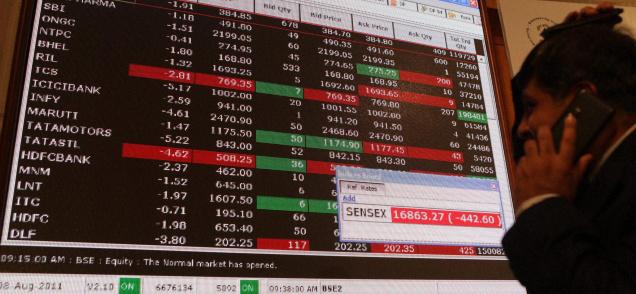
Sensex surges 142 pts on fund inflows, global cues Mumbai, Aug 27 Rising for the fifth consecutive session, the benchmark BSE Sensex today moved up further by 142 points in early trade on sustained foreign capital inflows coupled with a firming trend on other Asian bourses.
The 30-share index, which had gained over 128 points in the previous four sessions, gathered another 142.51 points, or 0.54 per cent, to 26,585.32. All the sectoral indices, led by consumer durables, realty and PSU, were trading in positive zone, rising up to 1.40 per cent.
The NSE Nifty also shot up by 39.80 points, or 0.50 per cent, to 7,944.55. Brokers said besides sustained foreign capital inflows and increased buying by retail investors, covering up of short positions by speculators ahead of tomorrow's monthly expiry in the derivatives segment bolstered trading sentiment.
The top gainers are ONGC, Bajaj Auto, HCL Tech, Dr Reddys and ICICI Bank. The top lsoers in the early trade are NTPC, Hindalco, Power Grid Corp, Kotak Mahindra Bank and GAIL.
All sectors are in the green this morning except consumer durables, FMCG, oil and gas, and BSE PSU.
Besides, a firming trend on other Asian markets following another record close on Wall Street fuelled by positive data on the US economy triggered buying activity, they said. In the Asian region, Japan's Nikkei rose 0.23 per cent, while Hong Kong's Hang Seng gained 0.25 per cent in early trade today.
The US Dow Jones Industrial Average closed 0.17 per cent higher in yesterday's trade.
Did the Parliament ignore CAG report blaming Madhu Koda and Manmohan Singh for illegal coal block allocation?
Our Correspondent : 27 Aug 2014, Bhopal
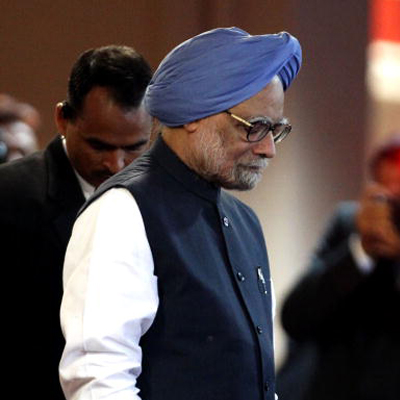
Jharkhand Chief minister Madhu Koda and the then prime minister Manmohan Singh might have tampered the list or recommendations made by a screening committee in 2007. A CAG report tabled in the Parliament in 2013 made these allegations of illegalities of coal allocation in the state, a newspaper report suggested today. Since Jharkhand was under President's rule, it was tabled in the Parliament but was largely ignored by its members.
In 2007 Manmohan Singh held the coal ministry under him as well. The newspaper quoted the CAG report No.1 of 2013 of Jharkhand Revenue Sector which alleged, "When the recommendation of the subgroup (screening committee) was sent (June 2007) to the then CM for his approval, he modified and altered the names and made final recommendations to the Centre though no reason was assigned for such alteration and modification."
The screening committee had recommended 6 companies for the allocation. While Koda removed the name of 3 companies, he added five more, without explaining to the committee the rationale behind his decision. The whole point of having a screening committee in the first place was rendered useless as a result, the report said.
the companies which were not in the final list of the screening committee and yet received coal blocks were Tata Steel Ltd, JAS Infrastructure, Essar Power Ltd, Arcelor Mittal India Ltd, GVK Powers and Gagan Sponge Iron Pvt Ltd.
Despite being asked by the CAG, the government gave no answers about the changes it made to the recommendations of the committee.
Nifty regains 7900 in early trade; JSPL, Tata Power lose further after SC judgment on coal
Our Correspondent : 26 Aug 2014, Bhopal
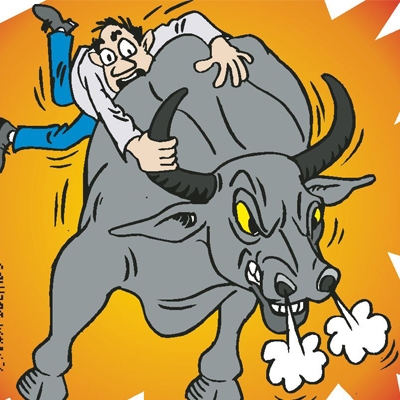
Sensex has recovered the early losses made on the Street when the markets opened for trade today. Retreating from record highs, the benchmark BSE Sensex fell over 105 points in early trade today with metal, auto and power sector stocks leading the fall, triggered by negative domestic cues amidst a weak trend in Asian trade. However, at present it is up 17 points at 26,437 points. Nifty also held on to its 7900 level after slipping from it. Nifty is trading at 7906, down just 6 points.
Brokers said sentiments dampened after the Supreme Court yesterday held that all coal block allocations made since 1993 till 2010 have been done in an illegal manner, triggering widespread selling in metal and power sector stocks.
Jindal Steel and Power, which by some estimates will be the largest loser by the verdict, fell 6.81% while Tata power was down 3.5%. JSPL had already lost 13.97% in yesterday's trade.
IDFC, PNB, Ambuja Cements, ACC BHEL were also down between 1.5 and 2%. Analysts said apart from JSPL, Sesa Sterlite and Hindalco would also suffer. The former is trading 0.7% down in early trade while Hindalco is 0.5% up.
Cement, power, metals will be the largest losers in the verdict by the Supreme Court, though the final take on de-allocation is expected only on September 1. Till the the market could maintain a cautious stand.
Stocks of Maruti Suzuki, Tata Motors and Mahindra and Mahindra faced fresh round of selling pressure and fell between 0.78-1.18 per cent after the CCI yesterday slapped a penalty of Rs 2,545 crore on 14 car makers for violating trade norms in the spare parts and after services market.
Among other Asian markets, Japan's Nikkei fell 0.40 per cent, while Hong Kong's Hang Seng was trading 0.10 per cent lower in early trade. The US Dow Jones Industrial Average ended 0.44 per cent higher in yesterday's trade.
Rupee up 4 paise against dollar in early trade on August 26
Our Correspondent : 26 Aug 2014, Bhopal
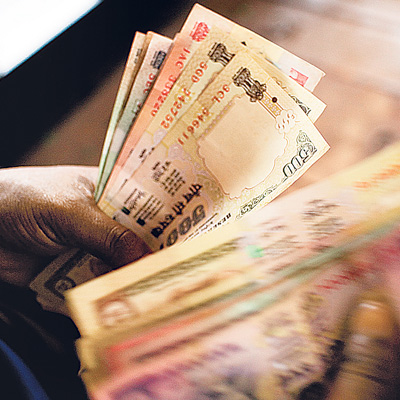
The rupee recovered by four paise to 60.52 against the US dollar in early trade today at the Interbank Foreign Exchange market on increased selling of the American currency by exporters.
The local currency had lost 9 paise to close at 60.56 per dollar yesterday following late profit booking in local equities and fresh dollar demand from oil importers.
Forex dealers said besides selling of the US currency by exporters, dollar's weakness against other Asian currencies overseas also supported the rupee but a lower opening of the domestic equity market capped the gains.
Meanwhile, the benchmark BSE Sensex fell by 105.19 points, or 0.39%, to 26,331.83 in early trade today.
Brent crude price falls to $102 on strong dollar as Fed chief Janet Yellen defended bank's monetary policy
Our Correspondent : 25 Aug 2014, Bhopal

Oil prices fell in Asian trade today on a stronger dollar as investors digested Federal Reserve chief Janet Yellen's defence of the bank's monetary policy, analysts said. US benchmark West Texas Intermediate for October eased 16 cents to USD 93.49 while Brent crude for October tumbled 19 cents to $102.10.
The US dollar surged against the yen in Asian trading Monday to 104.19 yen -- its highest level since January -- from 103.87 in New York Friday.
A stronger greenback makes dollar-priced oil more expensive for buyers using weaker currencies, denting demand and pushing prices lower.
The dollar rose after Yellen on Friday discussed slack seen in the US jobs market and an improvement in recent economic indicators.
While some US economic data has improved, there still remains "considerable uncertainty about the level of employment", she told the Jackson Hole Conference.
Singapore's United Overseas Bank said Yellen's comments, while seen as neutral, also signalled that "monetary policy is not on a preset path and the Fed's decision path will be data-dependent".
An eventual hike in official short-term interest rates will likely take place in the middle of next year, the bank said.
Analysts said the oil market is also under pressure on easing concerns about conflicts in crude producers Libya and Iraq, as well as Ukraine, a key conduit for Russian gas exports to Europe.
Crude prices have seen a build in risk premium over armed insurgences in the three countries, but a market awash with supplies have since eased worries about the impact of potential disruptions.
ITC topples TCS to become India's most admired company
Our Correspondent : 25 Aug 2014, Bhopal
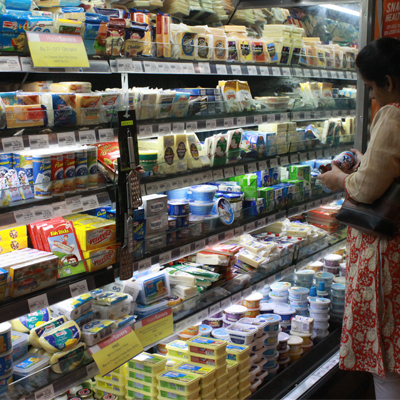
Tobacco-to-FMCG conglomerate ITC has replaced Tata group's IT giant TCS as the country's most admired company on a Fortune magazine list, which has got as many as 19 new entrants including Cognizant, Birla group firm Idea Cellular and discom BSES Rajdhani Power Ltd.
In the latest list for the year 2014, ITC is followed by engineering and infrastructure major Larsen and Toubro (L&T), another FMCG giant Hindustan Unilever, carmaker Maruti Suzuki and public sector bank SBI among the top five most admired companies in India.
In comparison, the list for 2013 was topped by TCS, followed by HUL, ITC, Infosys and SBI at in the top-five. TCS has moved down to the sixth position this year.
Releasing the third annual list of 45 most admired companies in India for the year 2014, the business magazine said there are as many as 19 new entities on the list including GMR Infra, Shapoorji Pallonji, Idea Cellular, BSES Rajdhani Power Ltd (BRPL), Cognizant and Abbott Pharma.
The list has been prepared in in collaboration with the Hay Group.
In sectoral rankings, NTPC is at the top position for the power sector and is followed by Tata Power, BRPL, PowerGrid and BSES Yamuna Power in the top five. These are followed by NPCIL, Adani Power, NHPC, CESC, Gujarat State Electricity, Suzlon Power, Kalpataru Power Transmission and Gujarat Urja Vikas Nigam.
Out of these, three companies have found place on the main list -- NTPC at 22nd, Tata Power at 27th, BRPL at 35th position.
For the telecom sector, Vodafone India is on the top and is followed by Bharti Airtel, Idea Cellular, Tata Communications, Reliance Communications, Aircel, Tata Tele, MTNL, BSNL, MTS, Tulip Telecom and Uninor.
The list for pharma and healthcare sector is topped by Apollo Hospitals, followed by Abbott India, GSK Pharma, Cadila, Sun Pharma, Cipla and Ranbaxy, among others.
The rankings are based on a survey of over 1,500 companies as per responses from the top industry executives, including on the basis of peer group response.
Arvind to retail US-based Gap's apparels, eyes Rs 1,000 crore business
Our Correspondent : 23 Aug 2014, Bhopal
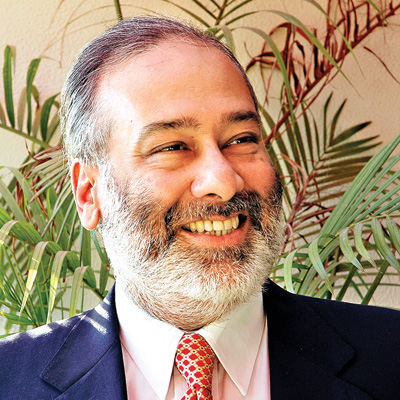
Arvind Lifestyle Brands, a subsidiary of India's largest integrated textile and apparel maker Arvind Ltd, has entered into a licensing agreement (including online) with US-based clothing company Gap Inc to sell their merchandise to Indian fashion affiniados. The association, Arvind executives said, offers them over Rs 1,000 crore opportunity to be tapped through a chain of Gap stores in the key metros starting with Mumbai and Delhi. The first few stores are likely to be operational in less than a year's time.
Sanjay S Lalbhai, chairman and managing director, Arvind Ltd, said the company will start retailing Gap merchandise in India with the Summer 2015 collection for adults, kids and babies. "We see the addition of Gap in our portfolio as a significant step to becoming the leading apparel retailer in India. The coming years will see 40-50 franchise-operated Gap stores operational in the country.
"Each store will cost around Rs 10 crore and will be funded through internal accruals," said Lalbhai adding that their company has had a long-standing relationship with the American retailer as their vendor partner.
Gap Inc is a leading global retailer offering clothing, accessories, and personal care products for men, women, children, and babies under the Gap, Banana Republic, Old Navy, Piperlime, Athleta, and Intermix brands. It currently has over 350 franchise stores along with over 3,100 company-owned stores. The Gap brand now has a presence in nearly 90 countries.
Gap sees India as an emerging, vibrant market and a crucial next step in its global expansion strategy. "As the world's second most populous country with more than 1.2 billion people, India represents an important platform to bring American casual style to consumers around the world," Gap global president Steve Sunnucks said in a statement.
According to J Suresh, managing director and CEO, Arvind Lifestyle Brands Ltd, the Gap portfolio will immensely help the company by strengthening their men, women and kids-wear categories. "We currently see this as a Rs 1,000 crore growth opportunity that can increase multi-fold in the coming years. Their merchandise mix offers us a huge opportunity to open retail stores in the country.
"With the kind of products coupled with pricing strategy adopted for India, the opportunity goes much beyond tier I markets. The store size will vary from 8,000 to 10,000 sq ft and the stores will be opened across 15-20 towns in the next five years," he said adding that the first store launch is just 10 months away.
With a wide portfolio of of owned, licensed brands and retail formats Arvind Ltd is also credited with introducing international brands into the Indian market starting with Arrow, Gant, Izod, Elle, Cherokee and US Polo. Among its own brands include Flying Machine, Colt, Ruggers, Excalibur etc. The company also has a joint venture in India with global major Tommy Hilfiger in addition to retail brands like Megamart, The Arvind Store, Club America, Next and Debenhams.
Hotels need not raise a toast for 5-star tag
Our Correspondent : 23 Aug 2014, Bhopal
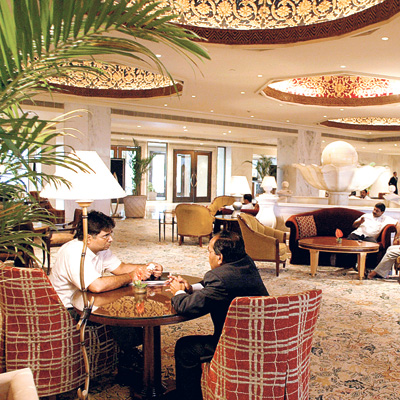
Simplifying luxury I Centre does away with 17 clearances required for grading of hotels in the country Roomed in 160,000 registered hotels in India 20,00,000 lodging services in the country Luxury hotels that do not serve alcohol will now be able to claim the elusive five- or seven-star tag. Till now, to be a five-star or a seven-star hotel it was mandatory to serve liquor on the hotel premises, which further required the hotel to have an excise licence.
The central government on Friday, notified changes in the classification of hotels by doing away with more than 17 clearances and licences that were required by various local, state and central authorities.
In an announcement made by the Union Minister of Tourism and Culture Shripad Yesso Naik at the National Conference of State Tourism Ministers held in the Capital, the ministry sought to simplify the classification process.
Some of the clearance certificates include the land utilisation certificate, building completion certificate, coastal zone regulation clearance, forest and environment clearance, pollution control clearance, police clearance, fire safety clearance, airport authority clearance, health and sanitation clearance. From now on, hotels will have to furnish only the trade licence and the bar licence, if applicable.
Hotel owners welcomed the move, saying that the demand for the declassification has been in the running for more than two years. "It is a welcome step for us, and will ease the licensing process by making it faster and more transparent," said S M Shervani, president of the Federation of Hotel and Restaurant Associations of India (FHRAI). "If a hotel provides all the requisite paraphernalia, then there must be no reason to not give it a luxury tag. Market conditions will take its own course," he said.
He said the process was offset by policies in different states pertaining to property tax and minimum wages. Problems in licensing, and further classification, also arose in places that did not permit liquor.
The classification and grading, which happened on a public-private partnership, is usually carried out by a team comprising a central government official, a state official, a member from the Indian Association of Tour Operators (IATO) and a FHRAI member. While there are about 160,000 registered hotels in India, it is estimated that there are about 20,00,000 lodging services in the country. This includes ashrams, paying guests, motels and hotels, etc.
The changes, although of not much consequence to established hotels, will affect luxurious hotels that do not serve hotels, or hotels that are keen on expanding to other locations.
"Since our clientele is global, we will continue to have a bar and we have notified bar services in our website. But the waiving off the various licences will make it easier for any hotel to operate," said a management official of Shangri-La Hotels, which has a hotel in Delhi and is coming up with another in Bangalore later this year.
IOC seeks government nod for laying pipeline along railway tracks
Our Correspondent : 23 Aug 2014, Bhopal
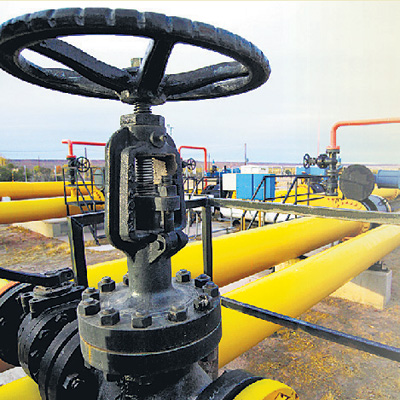
In a move that can help the oil marketing companies rapidly establish necessary infrastructure for transport of crude, petroleum products and gas, Indian Oil Corporation (IOC) has proposed to the government to allow usage of railways land for laying pipelines.
On behalf of the oil marketing and exploration and production companies, IOC has submitted a report to the Ministry of Petroleum and Natural Gas (MoPNG) requesting it to rope in Indian Railways and allow it to free up the land along its railways tracks to be used for setting up a pipeline network.
"We have proposed a revenue sharing model under which both the railways and the oil companies can benefit from the scheme. The idea is to use the railways land for a fee and use the land to lay the pipelines," said U K Dhoot, general manager – project monitoring, IOCL, at an oil and gas conference organised by India-Tech Foundation.
The process of setting up new pipelines across the country has become extremely time consuming as it requires several clearances like land, environmental etc. Dhoot explained that IOC currently has a pipeline network of 12,000 km across the country for transporting crude and petroleum products from it's 11 refineries which have a combined capacity of 65 million tonnes per annum (mtpa), but have transport capacity of just 36.6 mtpa.
Dhoot, however, agreed that there could be some conflict of interest issues with the Indian Railways as railways have a substantial share of transport of petroleum products for the oil marketing companies which also include Bharat Petroleum Corporation (BPCL), and Hindustan Petroleum Corporation (HPCL).
"We have requested the government to bring out a conducive policy which is a win-win for both, as India has serious dearth of pipeline network for crude sourcing or supplying of petroleum products," he said.
As per the Petroleum Planning and Analysis Cell (PPAC), India currently consumes up to 220 MT of crude annually and processes it to produce an equal amount of petroleum products such as petrol, diesel, kerosene, fuel oil and lubricants. Thus, a total of 440 MT of pipeline transportation capacity is required annually to take the supply to the respective sources.
Between the three oil marketing companies and the three main crude supplying companies – Oil and Natural Gas Corporation (ONGC), Oil India (OIL) and Cairn India (CIL), the total existing pipeline capacity stands at 215 mtpa with crude capacity at 130 mtpa and 85 mtpa of petroleum products. Thus, the pipeline capacity is falling short by 225 MT every year.
Roadways, railways and coastal network equally try to meet this shortfall in pipeline capacity. Dhoot pointed that while transportation is currently being met through these sources, in case of the railways, the ramp up of capacity is not enough to meet the growing demand. PPAC points out that both – the demand of crude oil and production of products – are growing at the rate of 3% annually. Thus a pipeline network along the tracks is an economical option, Dhoot added.
Sensex up 111 points in early trade; Nifty touches new peak
Our Correspondent : 22 Aug 2014, Bhopal

The benchmark BSE Sensex rose over 111 points and the NSE Nifty soared to a new life-time high of 7,924.90 in early trade on Friday as IT, oil & gas, power and consumer durable stocks led the rally on sustained capital inflows.
Besides, a firming trend overseas also buoyed market sentiments.
The BSE 30-share barometer spurted by 111.09 points, or 0.42 per cent, to trade at 26,471.20, approaching its life-time high of 26,530.67 reached on August 19. It had gained 45.82 points in Thursday’s session.
All the sectoral indices were trading in positive zone with gains up to 0.70 per cent.
The NSE Nifty also maintained its upward journey and breached all previous records by surging 33.80 points, or 0.42 per cent, to trade at an all-time high of 7,924.90, surpassing its previous record high of 7,922.70 touched on August 20.
Besides widespread buying by funds and retail investors on a firming trend at other Asian bourses after the US markets closed at another record-high on the back of decline in new claims for unemployment, covering up of short positions by speculators buoyed trading sentiments, brokers said.
Among other Asian markets, Japan’s Nikkei gained 0.20 per cent, while Hong Kong’s Hang Seng was up 0.24 per cent in early trade on Friday.
The US Dow Jones Industrial Average gained 0.36 per cent in yesterday’s trade.
China shares edge up, Hong Kong also firmer after good data lifts Wall Street
Our Correspondent : 22 Aug 2014, Bhopal
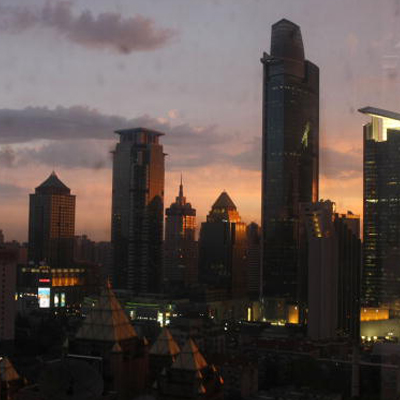
China shares edged higher at midday Friday, helped by blue-chips, and might produce a sixth straight weekly gain, which would be the longest such streak since March 2012. Hong Kong shares also rose, tracking gains in most other Asian markets after upbeat U.S. economic data sparked another record close on Wall Street.
The Hang Seng Index added 0.3 percent at 25,073.76 points. The China Enterprises Index of the top Chinese listings in Hong Kong climbed 0.6 percent. For the week, they were up 0.5 percent and down 0.9 percent, respectively.
The CSI300 of the leading Shanghai and Shenzhen A-share listings was up 0.3 percent on Friday, while the Shanghai Composite Index edged 0.2 percent higher at 2,235.80 points. Both swung between negative and positive territory in the morning.
On the week, they were up 0.1 and 0.4 percent, respectively. If the gains hold, this would be the sixth straight winning week for both indexes.
On mainland markets, energy and banks were generally higher.
PetroChina was the top index boost in Shanghai, up 0.5 percent after Thursday's drop of 0.9 percent.
"The market has been in a consolidating trend for the past few weeks and the consolidations were relatively strong, so the indexes are only slowly moving up," said Zhang Qi, a Shanghai-based analyst with Haitong Securities.
"Volumes remained robust with money mostly in small-caps like media stocks," he added.
Media companies maintained the momentum begun on Monday by President Xi Jinping's comment and a policy announcement supporting the industry. Shanghai Xinhua Media surged the maximum daily limit of 10 percent.
People.cn spiked another 4.9 percent, taking its gain this week to 36 percent. The website operator of Chinese government's official newspaper said late on Thursday it planned to acquire 35 percent stake in a Shanghai-based software firm for 182.7 million yuan ($29.66 million).
Travel companies also outperformed as China aims to double domestic spending on tourism by 2020 by offering financial and other support to the sector.
Beijing Jingxi Tourism Development jumped by the 10 percent limit and Zhang Jia Jie Tourism Group climbed 5.4 percent.
With investors turning to growth stocks from cyclical counters due to deepening concerns about the economy, the ChiNext Composite Index - comprising startups in mainly nascent industries listed in Shenzhen - rose 0.7 percent to a record high.
In Hong Kong, shares of Li & Fung fell 4.4 percent to a six-week low after the global sourcing group posted weaker-than-expected core operating profit for the first half.
United States based Arvind Subramanian may become chief economic adviser to the government
Our Correspondent : 22 Aug 2014, Bhopal

United States-based economist Arvind Subramanian is poised to be named as chief economic adviser to the Indian government, the finance ministry said on Friday. If confirmed, the appointment would bring in a second economist of international renown to a key policy post following the naming of former International Monetary Fund chief economist Raghuram Rajan as central bank chief last year.
Financial Express reported that Subramanian's name has been cleared by finance minister Arun Jaitley. It has been "sent to the appointments committee of the Cabinet (ACC) which comprises Prime Minister Narendra Modi and home minister Rajnath Singh, said officials. While there is no clarity when the ACC will give its nod, the officials said the final decision should be within a month. If appointed, Subramanian's term as CEA, and also the head of the Indian Economic Service, will likely be for three years."
A quick search on the internet reveals that he is the Dennis Weatherstone Senior Fellow at the Peterson Institute for International Economics and senior fellow at the Center for Global Development. Foreign Policy magazine has named him as one of the world's top 100 global thinkers in 2011. He was assistant director in the Research Department of the International Monetary Fund.
Mahindra & Mahindra launches new tractor platform after 14 years
Our Correspondent : 21 Aug 2014, Bhopal

Mahindra & Mahindra (M&M) – the country's biggest tractor maker - launched a new tractor platform almost after 14 years catering to the 50-60 horsepower (hp) and above category.
The product was developed for over 3 years and the company invested about Rs 300 crore with inputs from over 100 engineers.
The two variants – Arjun Novo 605DI-I (57 hp) and 605DI-PS (52 hp) launched at company's Mahindra Research Valley in Chennai is priced at Rs 7.35 lakhs and Rs 7.15 lakhs respectively (ex showroom Pune).
According to the company, M&M has sold around 20,000 tractors in the 48 hp and above category during financial year 2014, of which Arjun formed a large chunk of its sales. The new Arjun Novo will replace Arjun 605Di which is Rs 15,000 higher than its predecessor.
The company is hoping to drive additional volumes within the segment with the launch of the new product.
"Arjun Novo will help us strengthening our presence in the higher hp tractors category," said Pawan Goenka, president, automotive and farm equipment sectors for M&M.
As per the estimates, the 40 hp category currently contributes around 16% of the overall tractor sales. The industry sold about 1,06,000 units in this segment in last fiscal (FY14).
"Our objective is to grow the segment to 18-19% of the overall tractor volumes and increase our market share in the segment," said Rajesh Jejurikar, chief executive – farm equipment and two wheeler division for M&M.
Jejurikar said that the higher hp tractors (40 and above) are gaining momentum with the growth of higher mechanisation in the farms in the country. "Usage of higher hp tractors is not really linked with the land size now. It is more linked with the mechanisation. These help in higher productivity and output," he said.
The company competes with the likes of international players like – John Deere and New Holland in this segment.
M&M will launch the product in a phased manner over the next 2 months, starting with Maharashtra, while the exports would begin after 6 months. The product will also eventually be launched in the USA, through its subsidiary Mahindra USA. "The product as of now does not meet the emissions norms for the US market. We will take at least 6 months to develop the variant required for the USA emissions," said a company executive.
Arjun Novo will be manufactured at its Nagpur plant, the company said. The company currently has tractor plants at Nagpur, Zaheerabad in Telangana, Mumbai and Mohali in Punjab.
M&M currently is the market leader in the tractor category with a market share of more than 40%. After a double-digit growth last year in the tractor category, the industry de-grew 1.2% in the Q1 of FY15, owing to crop damage because of unseasonal rains in some parts of the country in March coupled with deficient monsoon in June.
The correspondent's trip to Chennai was sponsored by Mahindra & Mahindra.
Sensex rises 56 points in early trade
Our Correspondent : 21 Aug 2014, Bhopal

The benchmark BSE Sensex recovered over 56 points in early trade on Thursday on emergence of buying by funds and retail investors amid a mixed trend in global markets. The 30-share index rose 56.30 points, or 0.21 per cent, to 26,370.59 with sectoral indices, led by consumer durables, IT, oil & gas, realty and auto gaining up to 1.95 per cent.
The index had lost 106.38 points in the previous session after profit-taking emerged at record levels.
The National Stock Exchange index Nifty also gained 14.55 points, or 0.18 per cent, to trade at 7,889.85.
Brokers said buying by funds and retail investors at select counters amid a mixed trend in other Asian markets after US markets posted gains on Wednesday as Federal Reserve minutes suggested interest rates may be hiked sooner than expected, influenced trading sentiments.
Besides, reports of foreign funds remaining buyers in Wednesday’s trade on the Indian bourses supported the recovery, they said.
Among other Asian markets, Japan’s Nikkei was up by 0.50 per cent, while Hong Kong’s Hang Seng shed 0.28 per cent in early trade.
The US Dow Jones Industrial Average ended 0.35 per cent higher.
Sensex down just 50 points; Sun Pharma, Dr Reddys soar
Our Correspondent : 20 Aug 2014, Bhopal

After very shortlived early gains, Sensex slipped into the red down 44 points at 26376 points. Nifty was down 13 points to 7884. The big gainers in the market were two pharma companies, Sun Pharma and Dr Reddys Lab. The other gainers were Wipro, HCL Tech and Lupin.
The losers were Punjab National Bank, IDFC, Hero Motocorp and ONGC.
While Sensex had gone up for six sessions in a row, HSBC had maintained its neutral ratings on the market. It said in a report, "We don't think the time is yet right for us to change our neutral weighting on Indian equities. Valuations still look high and mutual funds are still very overweight on the market. Also, there remains a risk of higher, not lower, interest rates. A positive is that some reforms have been put in place, but the impact on corporate earnings remains uncertain in terms of magnitude and timing."
Asian stocks were steady on Wednesday after strong United States housing data lifted Wall Street shares, helping nudge Treasury yields higher and keeping the dollar well bid against the euro and yen.
United States stocks ended higher for the second straight session on Tuesday, as robust housing data and strong earnings from Dow component Home Depot overshadowed lingering concerns about the conflict in Ukraine.
World Bank arm IFC invests in SAMHI Hotels to promote jobs in India
Our Correspondent : 20 Aug 2014, Bhopal

The World Bank’s arm International Finance Corporation (IFC) will invest $ 21 million in India’s SAMHI Hotels by way of convertible debentures with the focus to create jobs, promote energy efficiency infrastructure.
“IFC, a member of the World Bank Group, is investing $ 21 million in SAMHI Hotels through compulsorily convertible debentures. The investment will increase India’s capacity in the affordable and mid-market hotel segment, create jobs, and promote energy-efficient hotel design and construction,” it said in a release on Tuesday.
This will be IFC’s first investment in the hotel segment in India.
The investment is likely to create about 2,600 jobs across SAMHI’s various hotel projects in Greater Noida, Ahmedabad, Bangalore, Hyderabad and Pune, it said.
“Of these, nearly 800 jobs will be for women. With this third round of funding, SAMHI will expand its portfolio by developing greenfield hotels and through acquisitions in tier I and II cities.
“This investment is an effort to strengthen the tourism infrastructure in India,” said Ashish Jakhanwala, Managing Director and CEO, SAMHI Hotels.
He said the investment will also help the hotel group to formulate environmental and social standards besides adopting green building design principles.
“IFC’s investment is an affirmation of the support it provides to affordable hotels in countries with increasing domestic travel and rapidly growing middle classes,” said Vipul Prakash, Director for Manufacturing, Agribusiness, and Services, Asia Pacific, IFC.
This project will generate jobs and create business opportunities for small and medium enterprises, contributing to economic diversification and sustainable growth, he said.
Globally, IFC has funded $ 2 billion to over 270 hotel projects.
SAMHI, incorporated in 2011, owns, develops, and acquires branded hotels in collaboration with multiple operators.
It has partnered with global hotel operators such as Marriott, Starwood Hotels, Accor and Hyatt to manage its portfolio of 25 hotels comprising over 3,700 rooms.
Sultan of Brunei denies reports of his bidding for Sahara's hotels
Our Correspondent : 19 Aug 2014, Bhopal
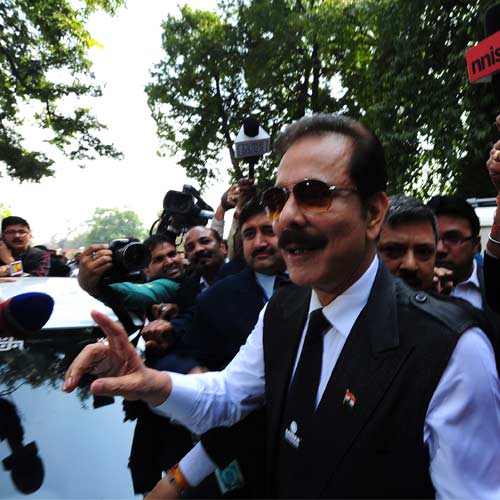
A spokesperson for the Sultan of Brunei denied making bids for Sahara's three luxury hotel properties in London and New York, Reuters reported. Media reports suggested a couple of days back that the Sultan of Brunei could be paying the Sahara group a whopping $2.2 billion to buy all the three properties, New York's Plaza Hotel, Dream Hotel and London's Grosvenor House. An investment firm affiliated with the Sultan might relieve Subrata Roy of his ordeal, the Journal had reported.
"Neither His Majesty, the Brunei Investment Agency, nor the government of Brunei are involved in any way in the purchase of the Grosvenor House in London or the Plaza and Dream Downtown hotels in New York," Reuters quoted a spokesman at Bell Pottinger, acting on behalf of the Sultan of Brunei.
Previous reports had suggested that real estate giant Madison Capital and the Punnawallah family might also be interested in Sahara's New York and London properties respectively.
Media reports have suggested on the other hand, that Sahara might be on its way to finalise the sell of three properties in India which includes a 265 acre land in Vasai and ATul Projects in the city.
Roy has to raise Rs 10,000 crore to be granted a bail, out of which half is to be paid in cash and half in bank guarantee. Roy has to return over Rs 24000 crore to people from whom he had raised money, the instrument of which was later adjudged to be illegal. The total money to be returned with added interest touches almost Rs 40,000 crore.
Rupee up 7 paise at 60.69 against dollar in early trade
Our Correspondent : 19 Aug 2014, Bhopal

Extending its rising streak for the second session, the rupee strengthened by seven paise to trade at fresh two-week high of 60.69 against the US dollar in early trade today amid sustained foreign capital inflows. Increased selling of dollars by banks and exporters amid soaring equity markets on heavy buying by foreign investors also supported the rupee, dealers said.
Besides, easing global crude prices also helped the rupee but the dollar's strength against other currencies overseas capped the rise, they added.
The rupee rose by 45 paise, its best single-day gain in three months, to end at two-week high of 60.76 against the dollar on Thursday. Forex market remained closed on Friday and Monday on account of 'Independence Day' and 'Parsi New Year' respectively.
Meanwhile, the benchmark BSE Sensex surged 129.77 points, or 0.49 per cent, to trade at a new life-time high of 26,520.73 in opening trade.
Brent crude for October fell 65 cents, received support from Ukraine crisis
Our Correspondent : 18 Aug 2014, Bhopal
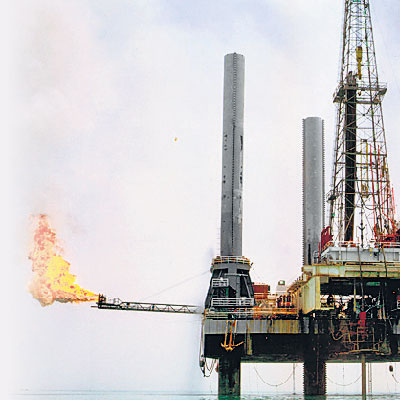
Oil prices eased in Asian trade today, but retained support from the latest round of tensions between Ukraine and Russia which sparked concerns of a full-scale military conflict, analysts said.
US benchmark West Texas Intermediate for September delivery was down 46 cents at USD 96.89 while Brent crude for October fell 65 cents to USD 102.88 in mid-morning trade.
Desmond Chua, market analyst at CMC Markets in Singapore said oil prices were supported by news on Friday that Ukraine had shelled Russian armoured vehicles after they entered its territory. Moscow denied the incursion.
Ukrainian President Petro Poroshenko said government artillery had destroyed "a considerable part" of a Russian military convoy purportedly carrying humanitarian aid into rebel-held east Ukraine.
The West and Kiev fear the convoy could be a "Trojan horse" to help the pro-Kremlin rebels, or provide Moscow with an excuse to send in the 20,000 troops that NATO says it has massed on the border.
The foreign ministers of Ukraine, Russia, Germany and France are locked in talks in Berlin to defuse the tense situation. Hosts Germany said late Sunday the "difficult" talks ended with no concrete advances but with "some progress".
Investors fear a full-blown military conflict between Russia and Ukraine will disrupt Russian energy exports to Europe.
Russia is the world's second largest oil producer, while Ukraine is a major conduit of Russian gas exports to western Europe.
Oil prices have seen a build in risk premium after Russia seized Crimea in March and voiced support for the separatists in east Ukraine. Armed insurgencies in crude producers Libya and Iraq have also contributed to the price surge.
Sensex up 70 points, Nifty holds up 7800; Capital goods, banks big gainers
Our Correspondent : 18 Aug 2014, Bhopal
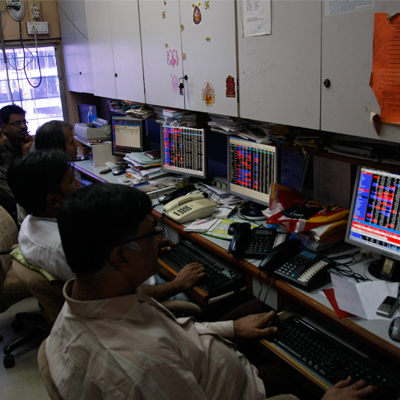
The BSE benchmark Sensex rose 70 points in early trade, though it started the day off in red. Nifty was up 25 points at 7818. All the indices are in red apart from FMCG and IT. The big gainer this morning is the capital goods index, bankex and auto.
The two stocks belonging to the Tata group, Tata Power and Tata Motors are the big gainers. Other stocks who are among the top gainers are BPCL, Cipla and BHEL.
The top losers today are ITC, Infosys, TCS and HDFC.
This is the first opening of the market after Prime Minister Narendra Modi revealed his vision for the Indian state and the economy on Independence Day. A key proposal included the scrapping of the Planning Commission to be replaced by a new institution.
The Asian shares have remained subdued though in the green after the Wall Street recovered. However, the pressures in Ukraine has kept the gains limited on the Bourses.
Asia shares up on Wall Street recovery, but gains limited as Ukraine sours mood
Our Correspondent : 18 Aug 2014, Bhopal
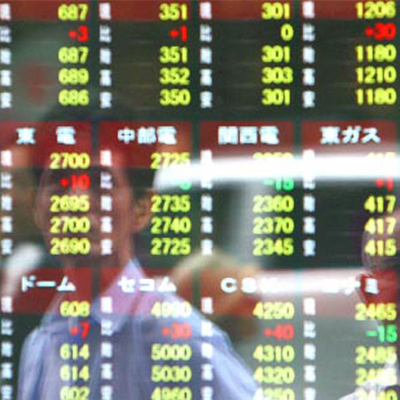
Asian stocks eked out gains on Monday after seeing Wall Street recover from the latest round of tensions in the Ukrainian crisis, although renewed uncertainty over the volatile conflict put a firm lid on markets.
The dollar was on the back foot against the safe-haven yen, weighed by a slide in Treasury yields.
MSCI's broadest index of Asia-Pacific shares outside Japan was up 0.1 percent.
Tokyo's Nikkei gained 0.1 percent.
News late on Friday that Ukrainian forces said they had destroyed a Russian military column in Ukrainian territory initially hit Wall Street, drove down government bond yields and boosted safe-haven currencies such as the yen and Swiss franc.
U.S. stocks eventually pared their losses as risk appetite partially returned, giving Asian shares an early lift on Monday.
Still, with the four-month conflict reaching a critical phase over the weekend - Kiev and Western governments are nervously watching if Russia will intervene in support of the increasingly besieged rebels in eastern Ukraine- risk appetite was subdued.
"A feeling of complacency had been creeping back into investor psychology last week with a general feeling that perhaps the declines at the start of the month were overdone," Jasper Lawler, market analyst at CMC Markets, said in a note to clients.
"The encounter in Ukraine was a hefty reminder that geopolitics cannot be ignored," he said.
The dollar dipped slightly to 102.33 yen after sliding from a 10-day peak of 102.72 on Friday.
The euro was also flat, at $1.3395 having being lifted from an intraday low of $1.3359 on Friday as the greenback was hit by a sharp fall in Treasury yields.
The benchmark 10-year Treasury yield dropped to as low as 2.30 percent on Friday, lowest since June 2013, in wake of the Ukraine news. It yielded 2.360 percent on Monday.
Apart from geopolitics, currency and bond markets will be focused on the Aug. 21-23 annual meeting of top central bankers at Jackson Hole, Wyoming, for possible clues about the path for monetary policy in the months ahead.
"Historically, trading leading into Jackson Hole sees increased volatility," noted Evan Lucas, strategist at IG in Melbourne.
"Talk so far is that chairperson Yellen is concentrating on employment and the composition of wage growth and full-time versus part-time percentages; this issue is likely to be echoed by central bankers around the world as global employment remains soft at best."
In commodities, Brent crude oil slipped but kept the gains made on Friday when it jumped more than $1.50 on the Ukraine news. Brent crude was down 65 cents at $102.88 a barrel.
|

